My week with Linux: I'm dumping Windows for Ubuntu to see how it goes
Here's what it's like to live with Linux as my desktop OS.
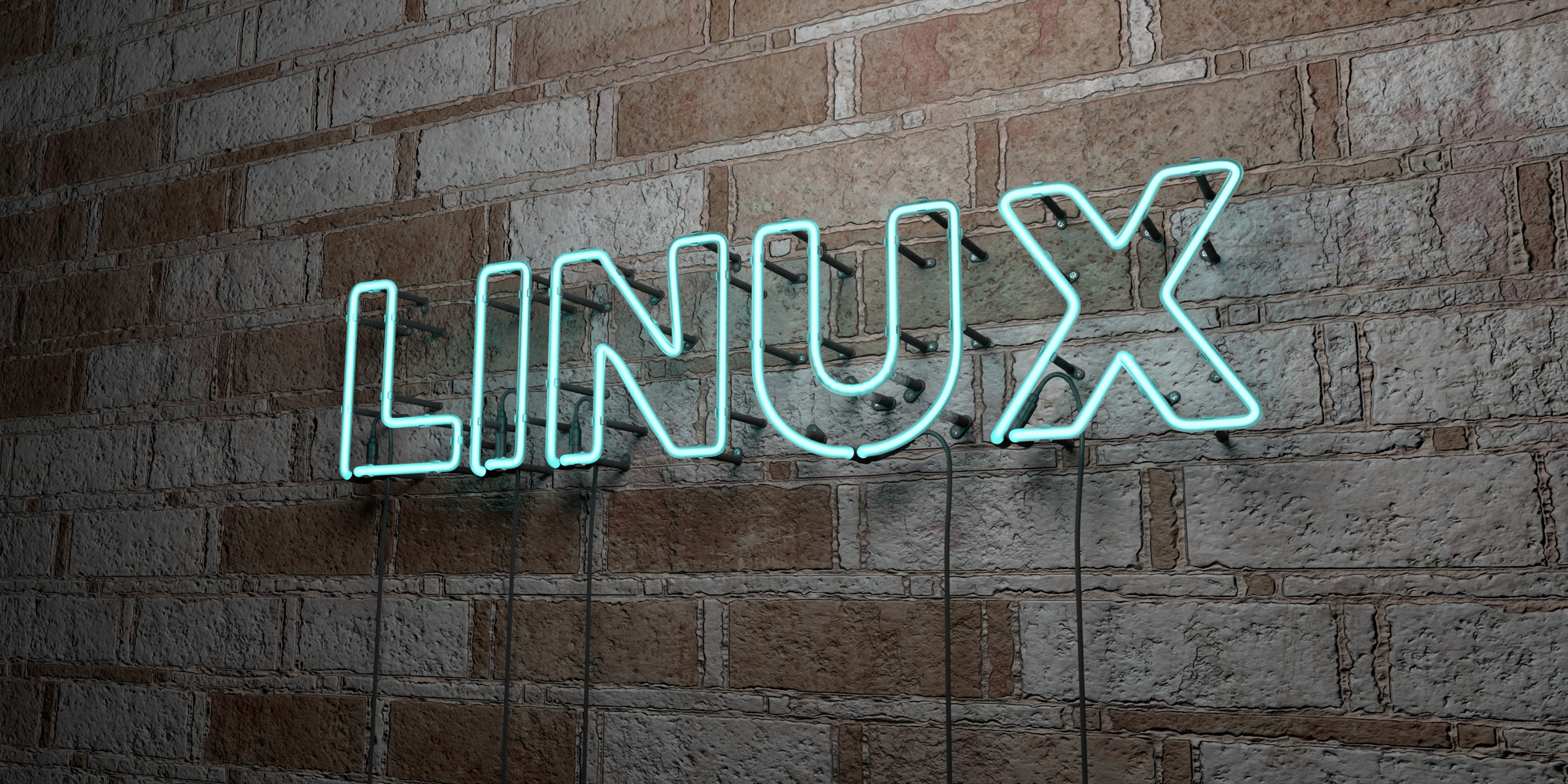
There are more than a billion PCs in use and, according to StatCounter, only 71 percent of them run Windows. Among the rest, about 4 percent run Linux. That's tens of millions of people with Ubuntu, Mint, Debian, etc as their desktop operating system. I envy them.
Windows 11 has become more annoying lately as it shoves ads for XBox Game Pass in my face, pushes AI features no one asked for and demands that I reconsider the choices I made during installation on a regular basis. Plus, it just isn't that attractive.
I'm ready to try joining that industrious four percent and installing Linux on my computers to use as my main OS, at least for a week. I'll blog about the experience here.
It's hard to give up Windows forever because so many applications only run in Microsoft's OS. For example, the peripheral software that runs with many keyboards and mice isn't available for Linux. Lots of games will not run under Linux. So I think it's likely I'll be using Windows again, at least some of the time, after this week is through.
However, for now, I'm going to give Linux a very serious audition and document the experience.
Which Linux should I install?
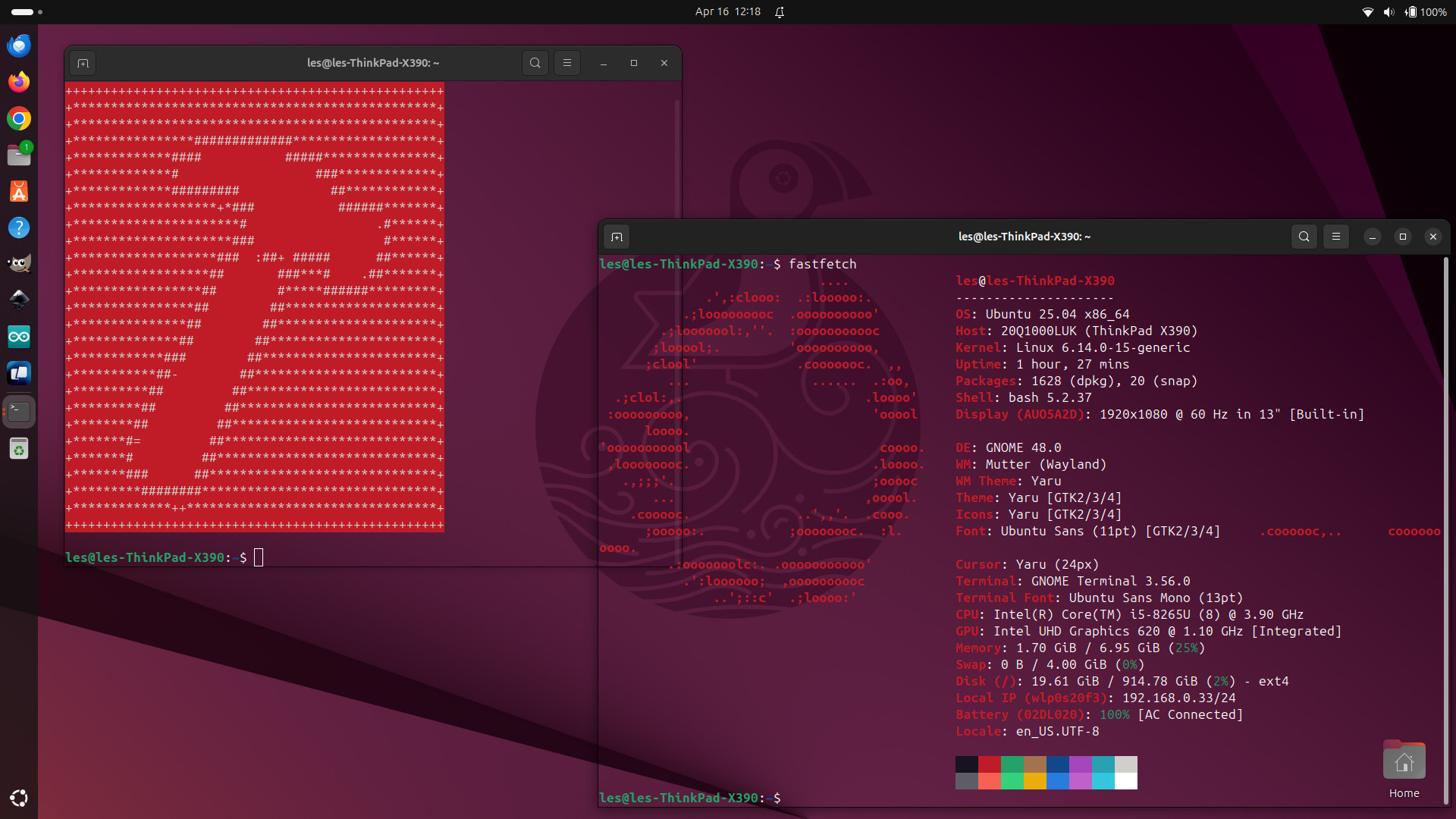
If you look around the Internet, you'll see that there are a ton of Linux distros to choose from. Our own Les Pounder recently listed his favorite six Linux flavors for reviving an old PC. There, he talked about Ubuntu, Raspberry Pi Desktop, Fedora, MX Linux, Linux Mint and Manjaro. Let's not forget Fedora, Debian, AlmaLinux, Kali Linux or Pop!_OS.
So which one should I go with? Some folks recommend Linux Mint, because its Cinnamon desktop is supposed to be more Windows like than those in other flavors. Others say Manjaro is a great choice for power users.
I'm going to go with Ubuntu, specifically Ubuntu 25.04 "Plucky Puffin," which just came out a few weeks ago. This is the latest version of the most popular and best-supported Linux distro. However, it only gets 9 months of support.
Granted, I could use Ubuntu 24.04 LTS, which will maintain support for five years and is therefore the most stable version of the OS available right now. However, I want to try the latest and greatest version so I'm going to download 25.04.
After I download the ISO file for it, I'm going to follow Les's instructions for how to dual boot Linux with Windows. So I'm going to install it on both my laptop, a ThinkPad X1 Carbon (12th gen) which I use at the office, and my desktop, a custom-built PC with an AMD Ryzen 9 7950X CPU inside. It should run well on both.
Downloading Ubuntu 25.04
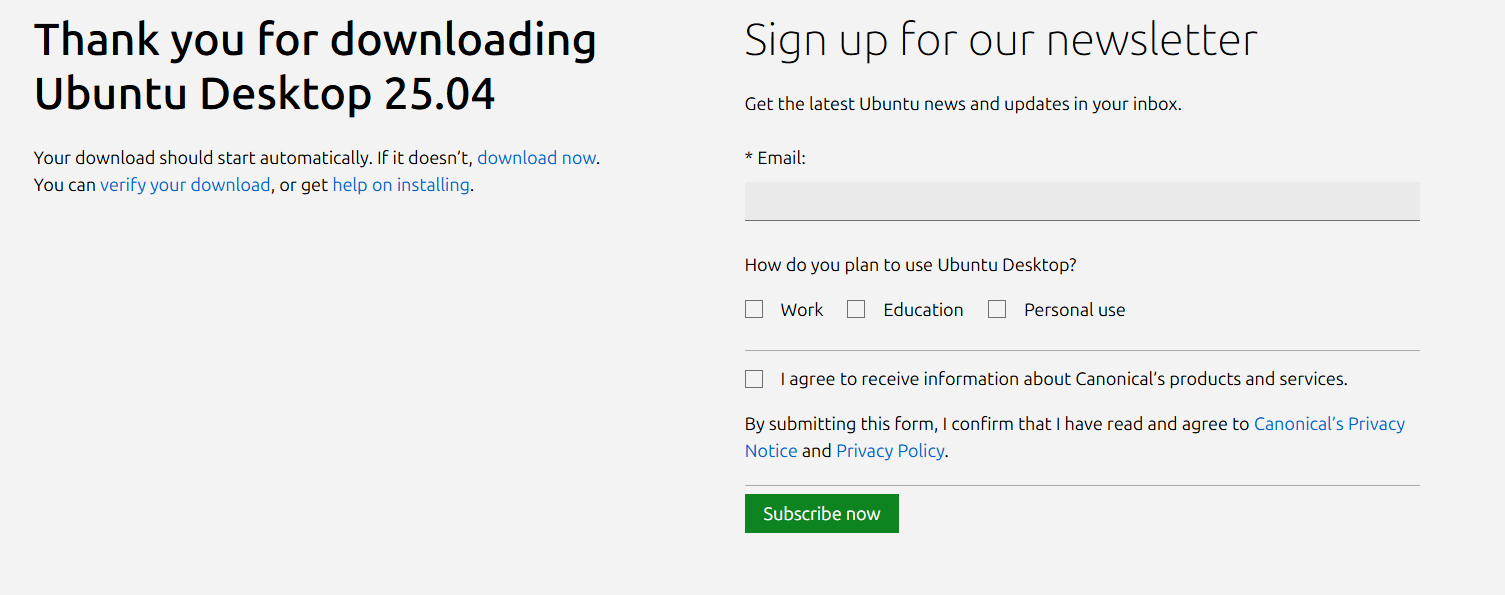
So my first step is to download Ubuntu 25.04 which is available as an ISO from Ubuntu's website. The ISO file is 5.8GB, but fortunately it downloaded in about a minute here on the office network.
Calling Rufus, the ultimate USB boot disk maker

After downloading the ISO file, the next step is to "burn" (aka write) it to a bootable USB Flash Drive. To do this writing process, I need a popular free program called Rufus that does the burning.
I'm using an SK hynix Tube drive, which is the form factor of a USB stick, but is technically a USB SSD. So in Rufus, I have to select "List USB Hard Drives" for it to appear as a valid option. Then I have to select a GPT partition scheme, choose the Ubuntu ISO and click Start.
This is a very fast USB SSD so the process only takes a few minutes. Then I'll be booting off of the Flash drive, which will take me to a GRUB menu where I can choose to install the OS.
BitLocker encryption blocks my dual boot
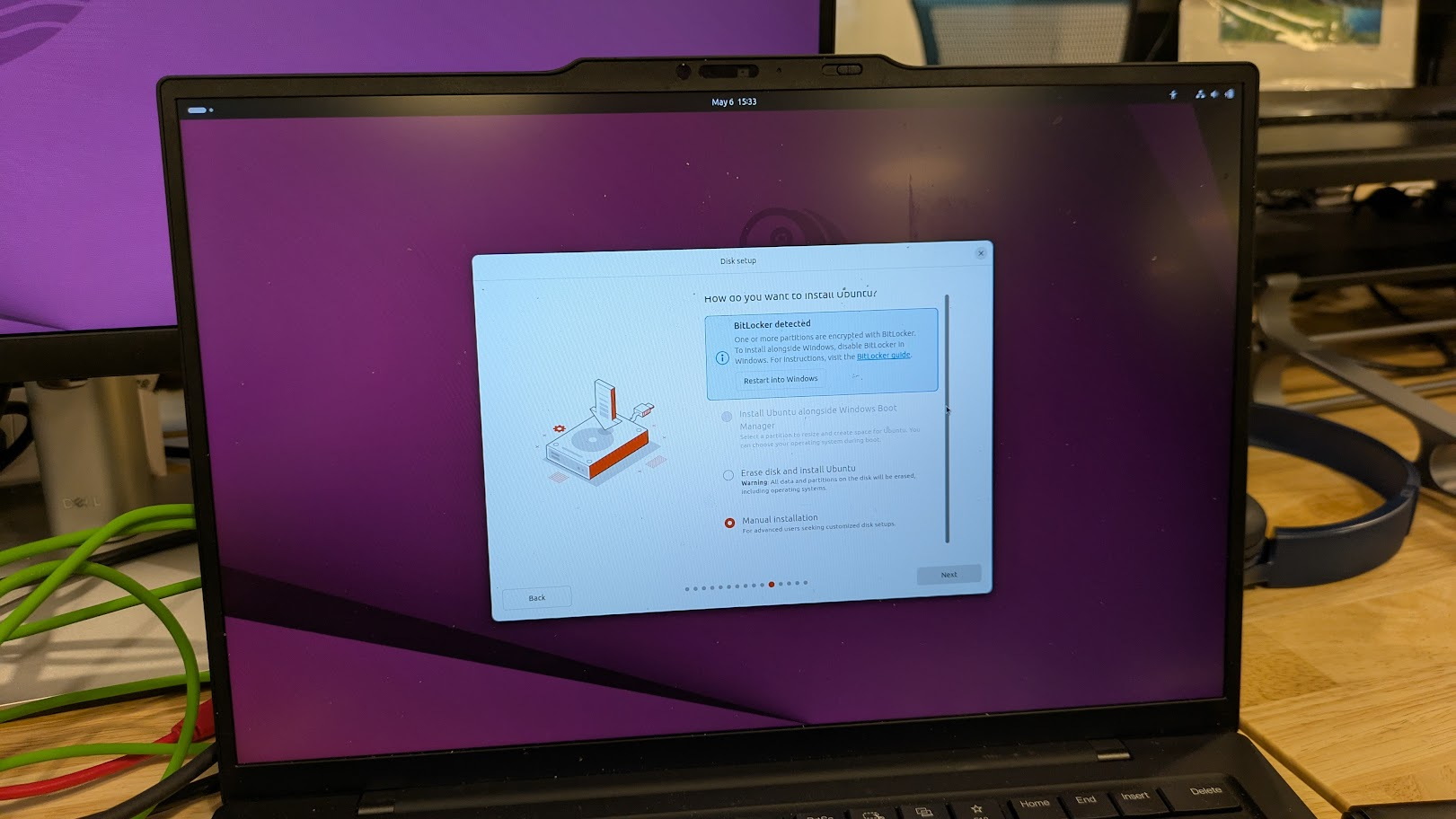
So I was in the middle of installing Ubuntu and going through the menus with the intention of setting up a dual boot configuration on my laptop and this happened. It turns out that having BitLocker encryption enabled, which it is by default on most Windows 11 systems these days, is a problem for the Ubuntu installer.
I could try manual installation and see if that works, but I'd rather do this the easy way. So I'm going into Windows and, for now, disabling BitLocker.
To turn off BitLocker, I went into Control Panel -> BItLocker Drive Encryption and clicked Turn Off BitLocker. Let's see if this does the trick.
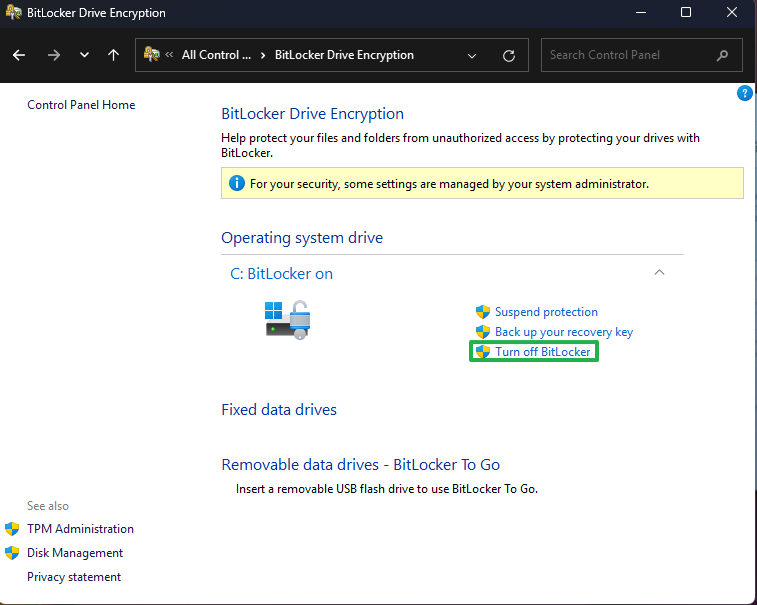
Waiting on decryption
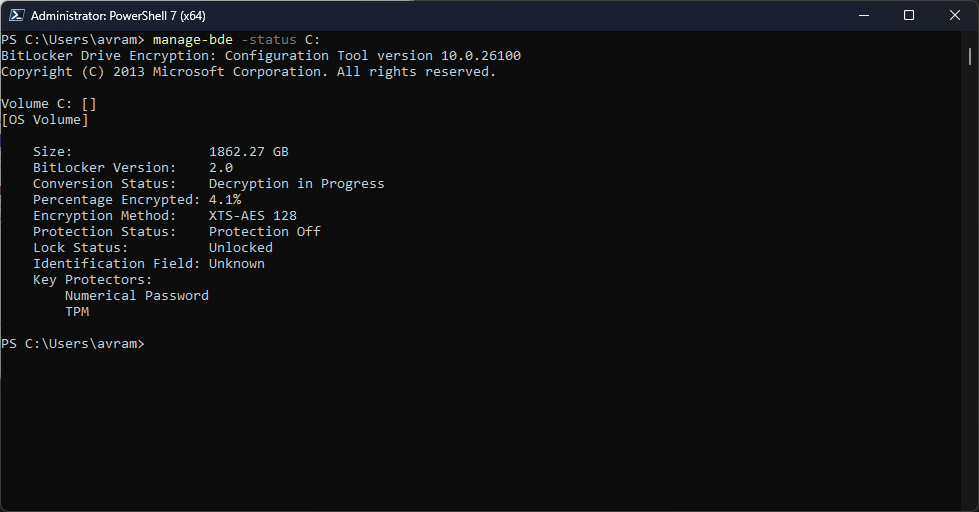
So I just learned something. If you disable BitLocker encryption, you have to wait a fair amount of time for Windows to decrypt your drive completely. Though you can shutdown or reboot during the decryption process, what you cannot do is install Linux to dual boot until the drive is completely decrypted.
I read that decryption could take hours, but my process appears to be buzzing along and will be done in a few minutes, I think. Windows 11 wasn't showing me a percentage, but the way to see how much is left to decrypt is to go into PowerShell and type manage-bde -status C: . That will show the percentage of your drive that's still encrypted and you can keep checking until it gets to 0.
Ubuntu 25.04 is now installed
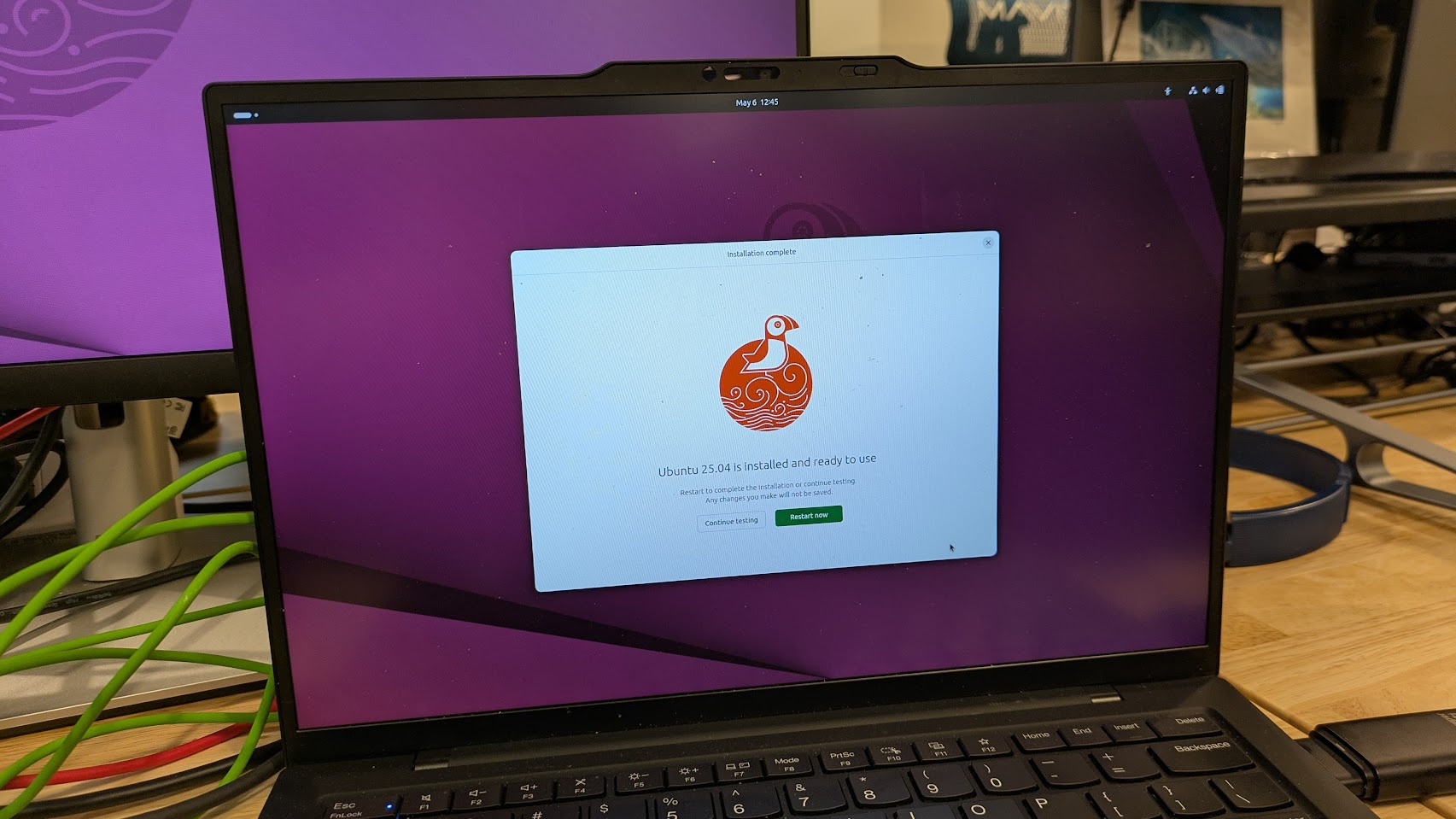
So, after the decryption finished, I was able to install Ubuntu 25.04 and I'm just getting started with it now. Here's how it went.
First, I booted off my USB Flash drive and was presented with this GRUB menu.
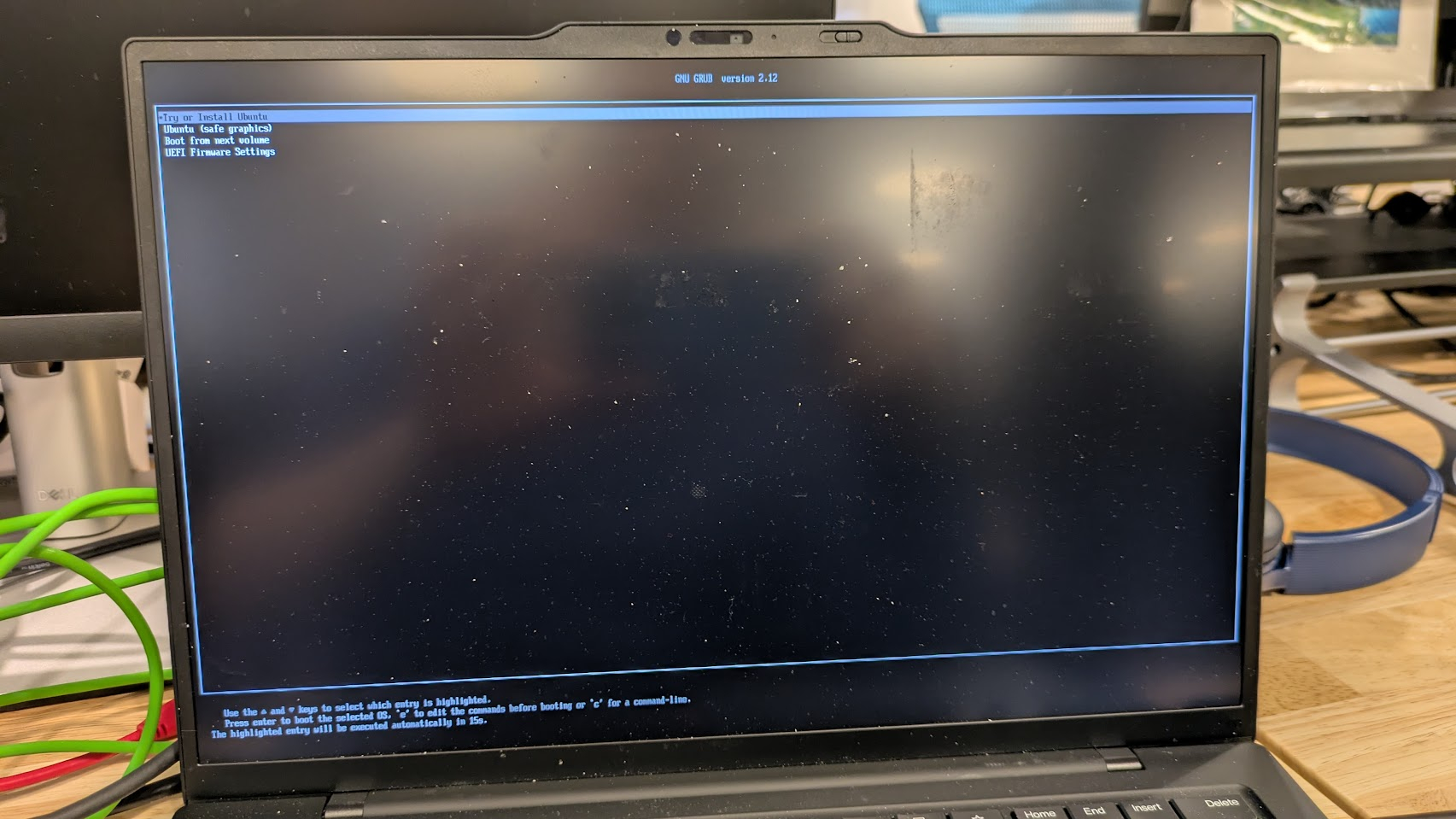
I chose "Try or install Ubuntu." Next I waited a few seconds for it to boot into the live environment.
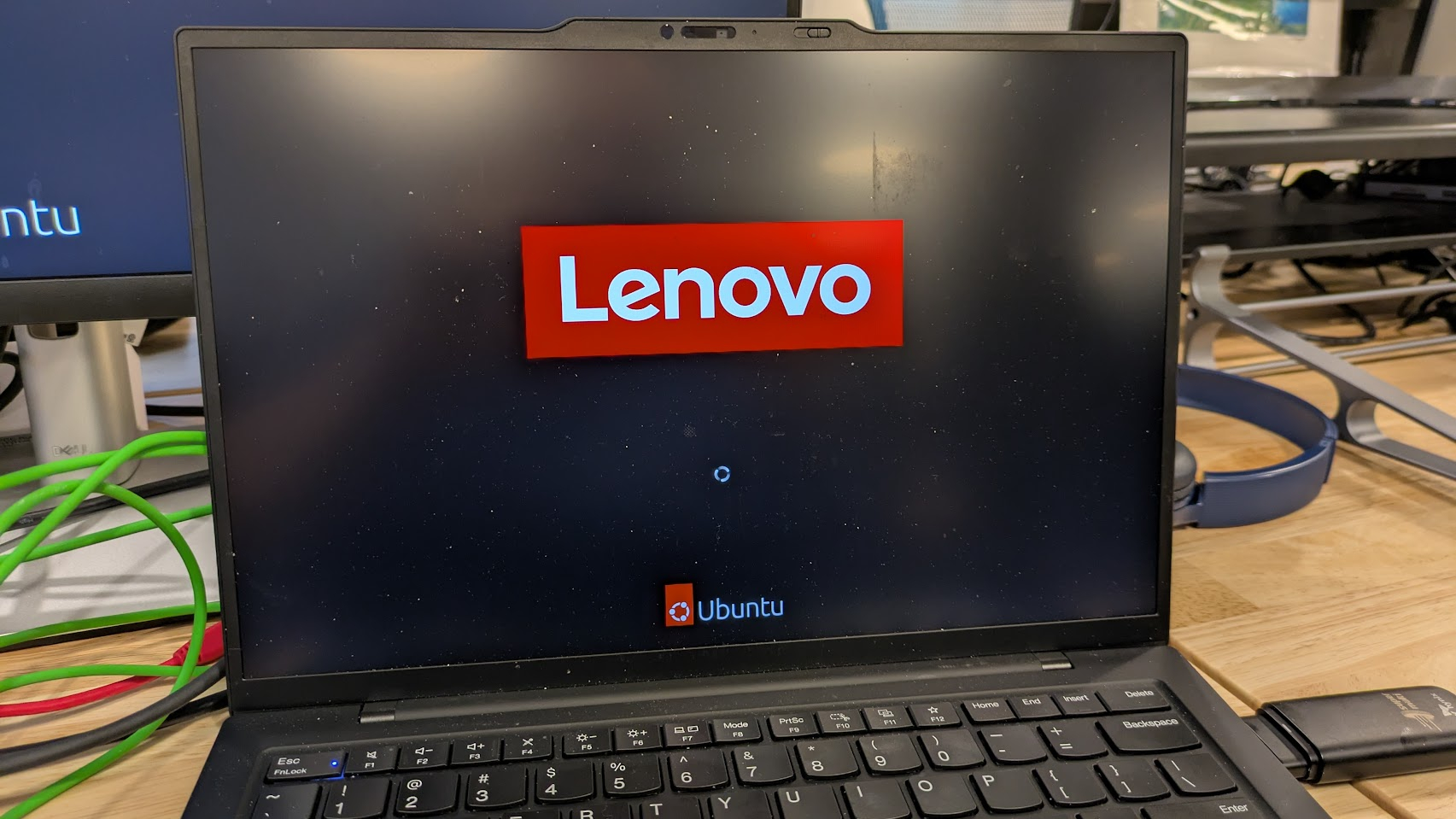
Then I was presented with a dialog box that stepped me through some choices. The first choice was language.
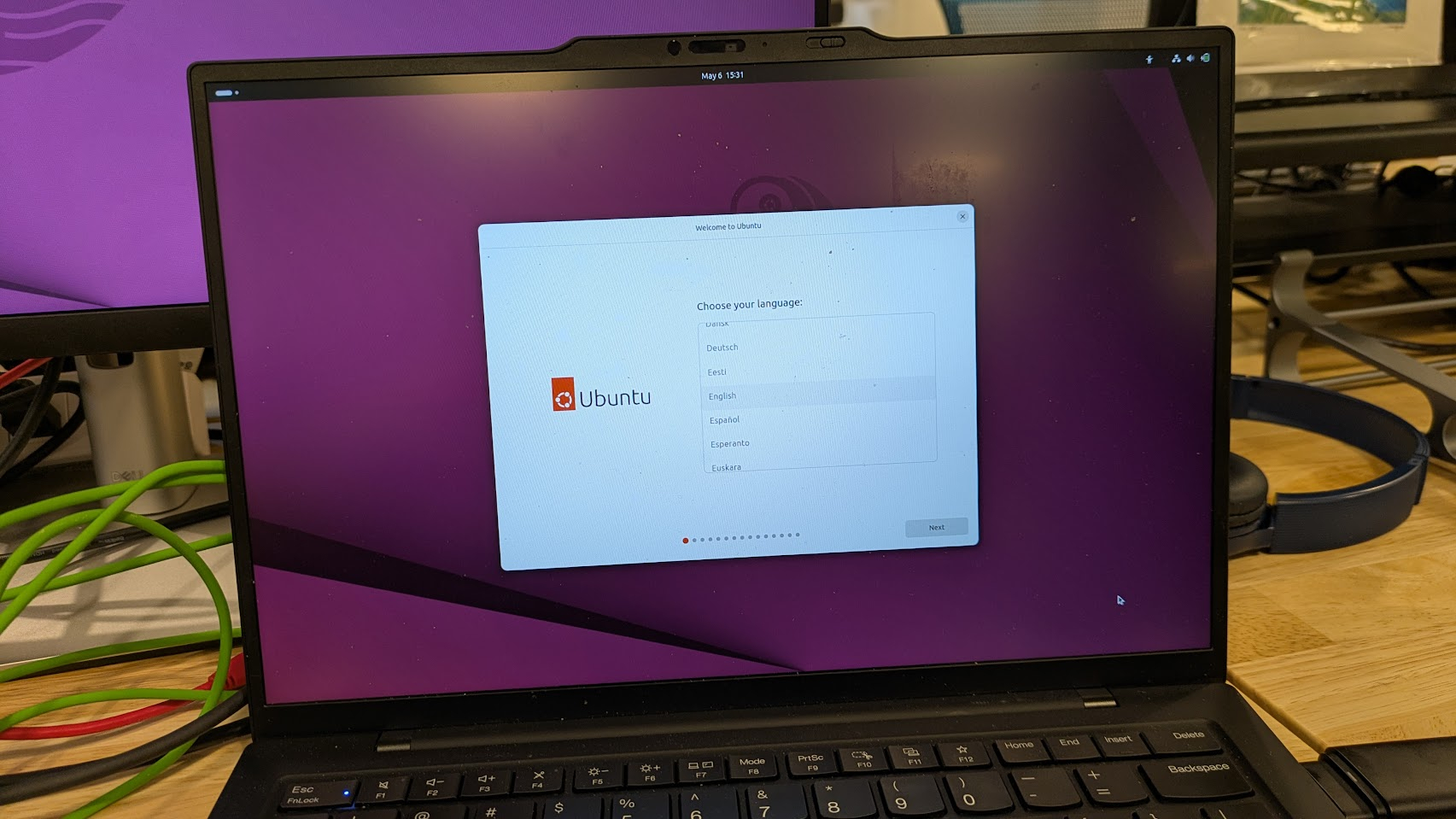
Then I got a list of accessibility options that I skipped over because I didn't need them.
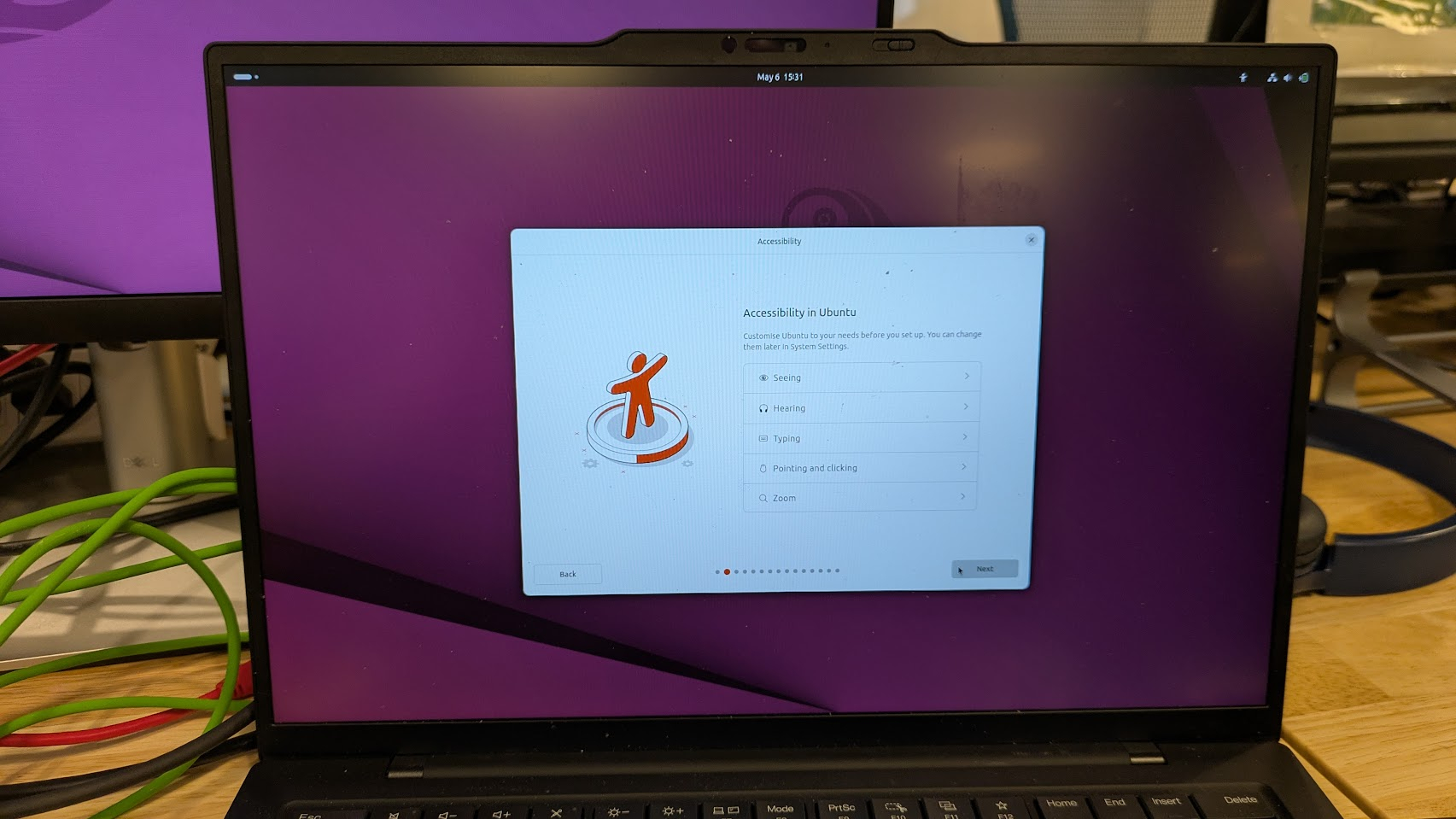
After that, it was keyboard layout.
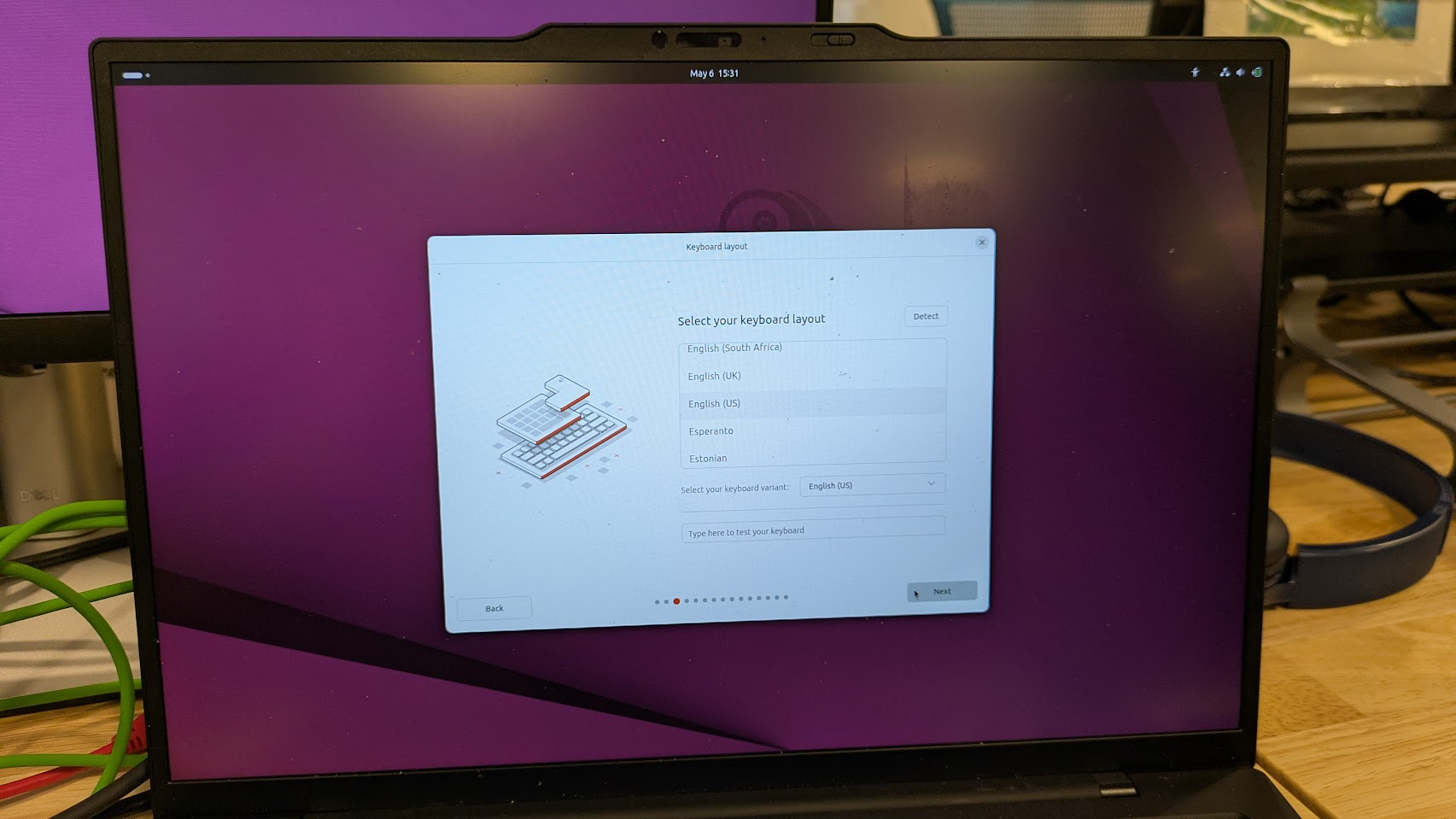
Then I was prompted to choose a connection. Since my laptop is currently connected to a Thunderbolt 3 dock that is connected to Ethernet, I went with "Use wired connection."
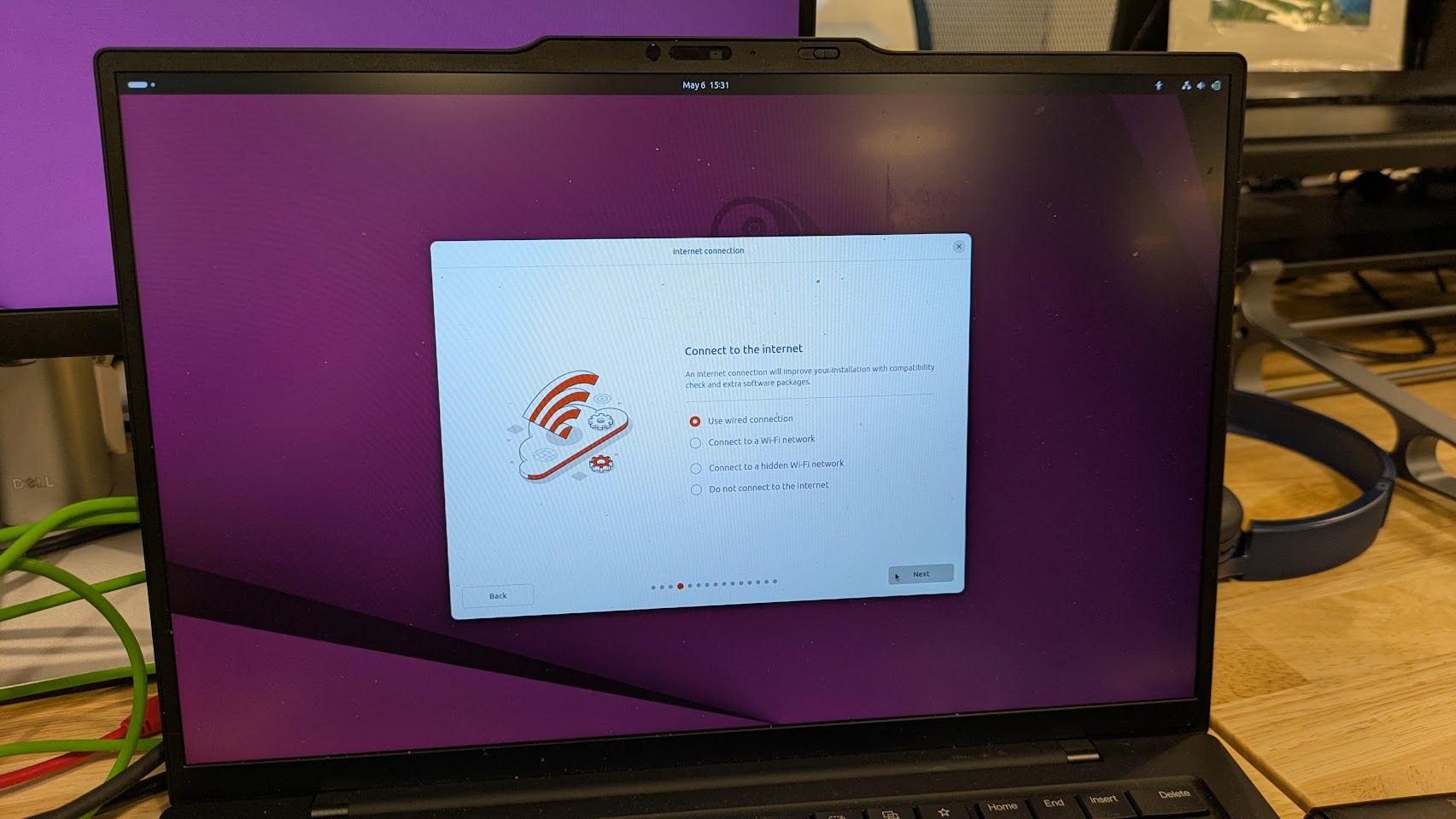
Then I was asked whether I wanted to install or try Ubuntu. I chose "Install." But If I had chosen "Try," I would have been able to run Ubuntu off of the Flash drive. Still, I want to use Ubuntu like this for a prolonged period so I'm past the point of just trying it for a few minutes.
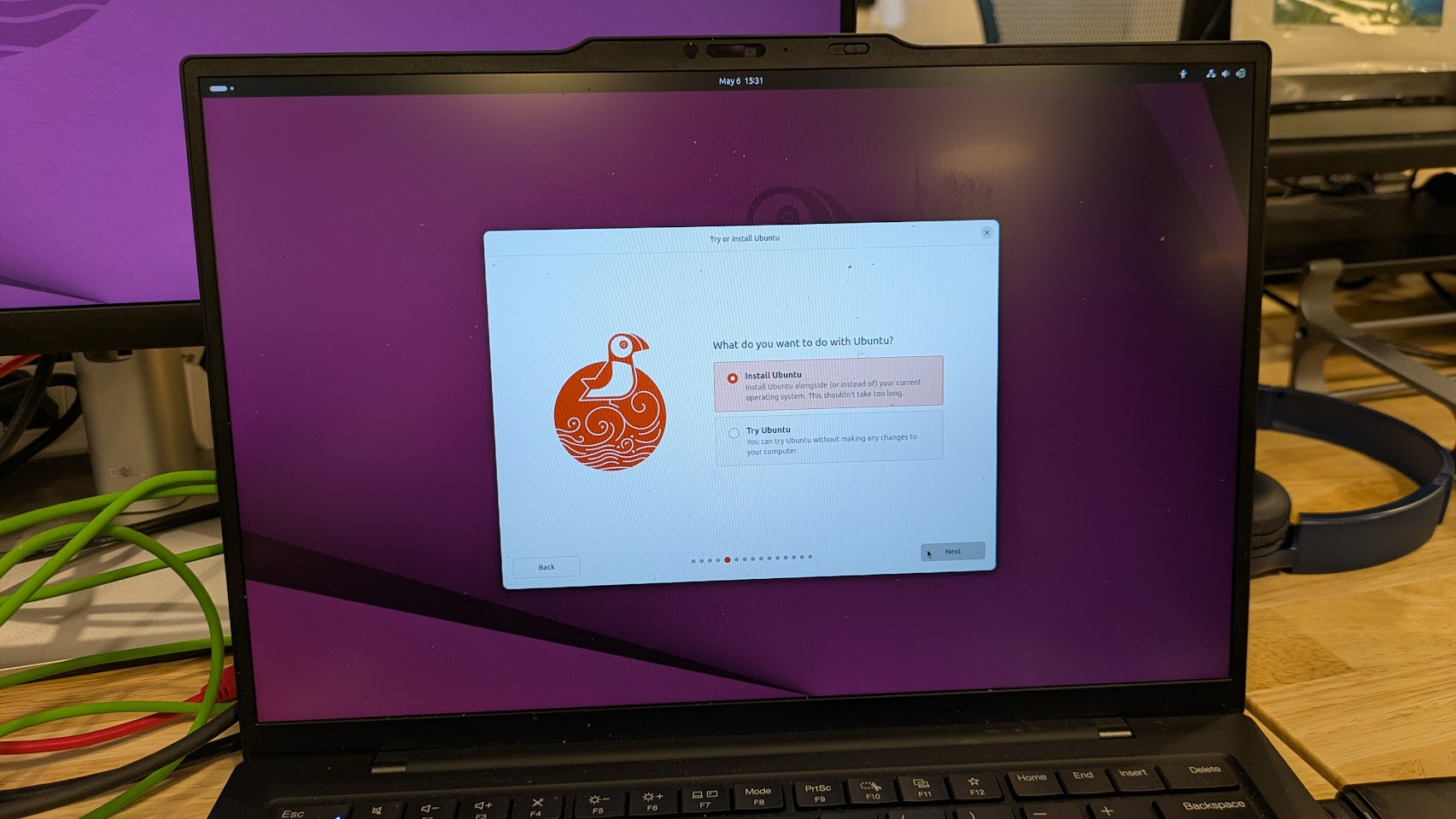
I was asked whether I wanted an Interactive Installation or an Automated installation. I'm going with Interactive so I can make all my own choices.
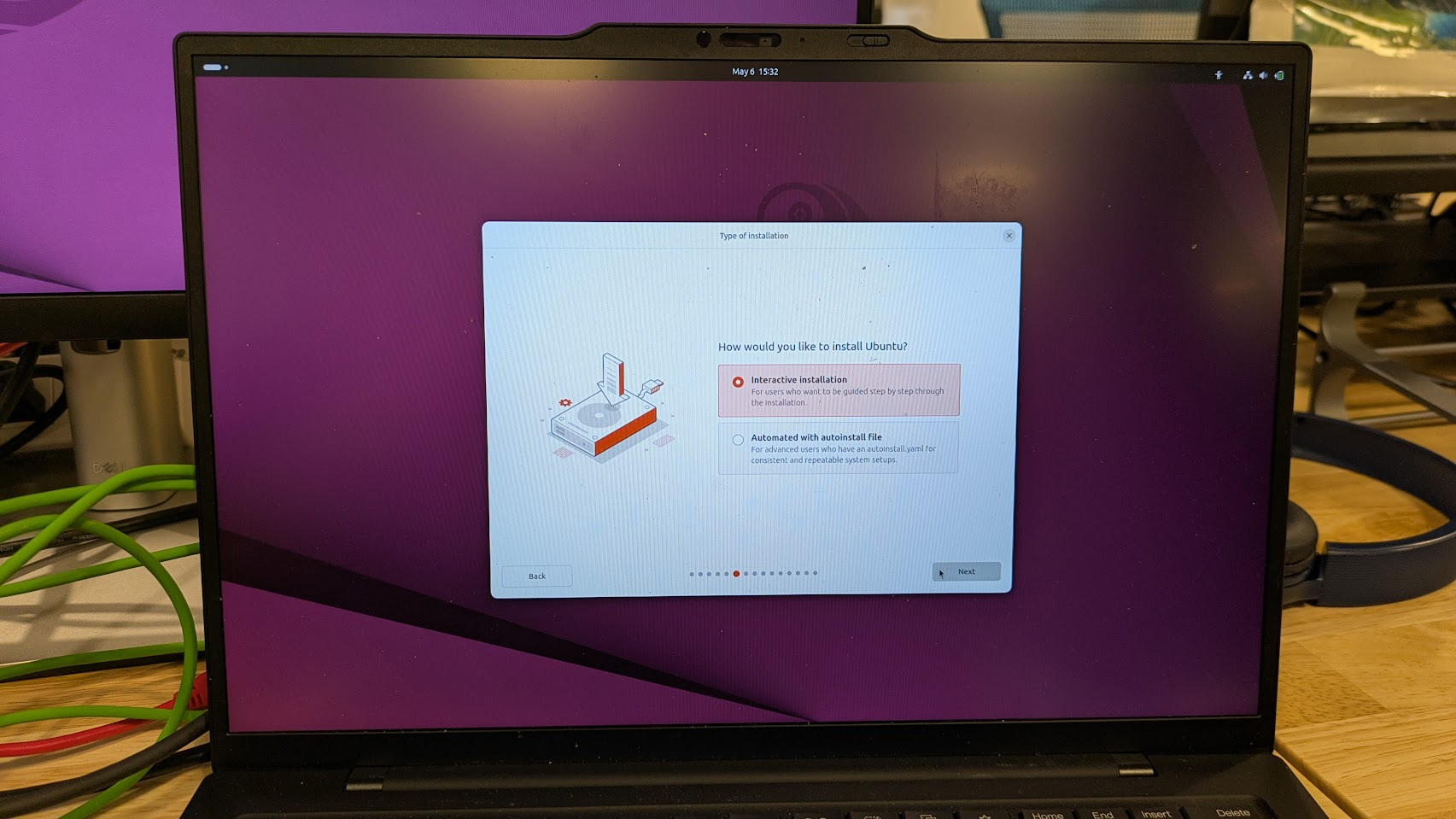
I chose to Install third-party software for graphics and Wi-Fi hardware and to download and install support for additional media formats. I'm not sure if these choices actually did anything or not.
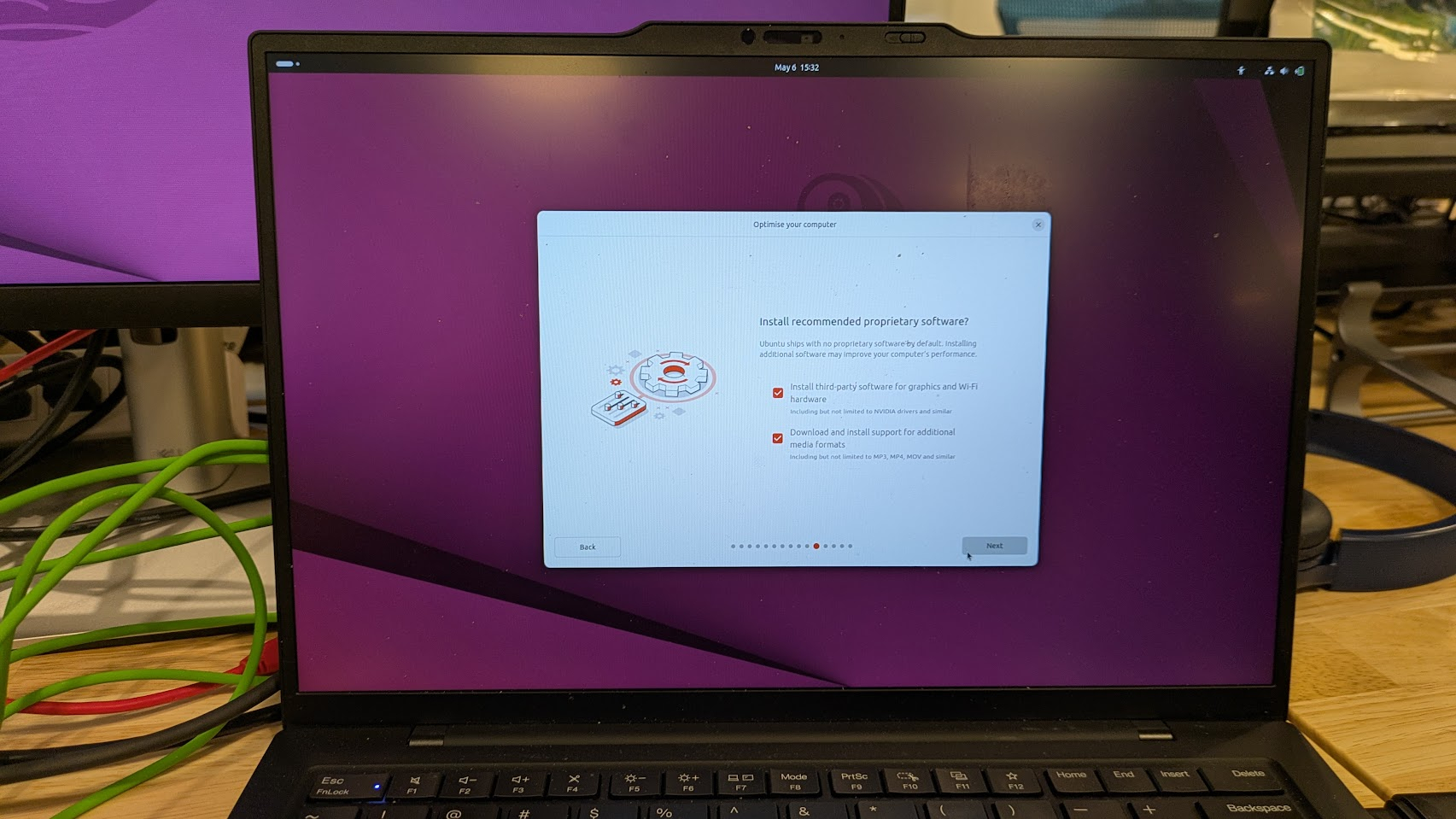
I was then asked whether I wanted to install Ubuntu alongside Windows Boot Manager or to erase the disk. Since BitLocker was now disabled, I was able to choose and did choose to install Ubuntu alongside Windows.
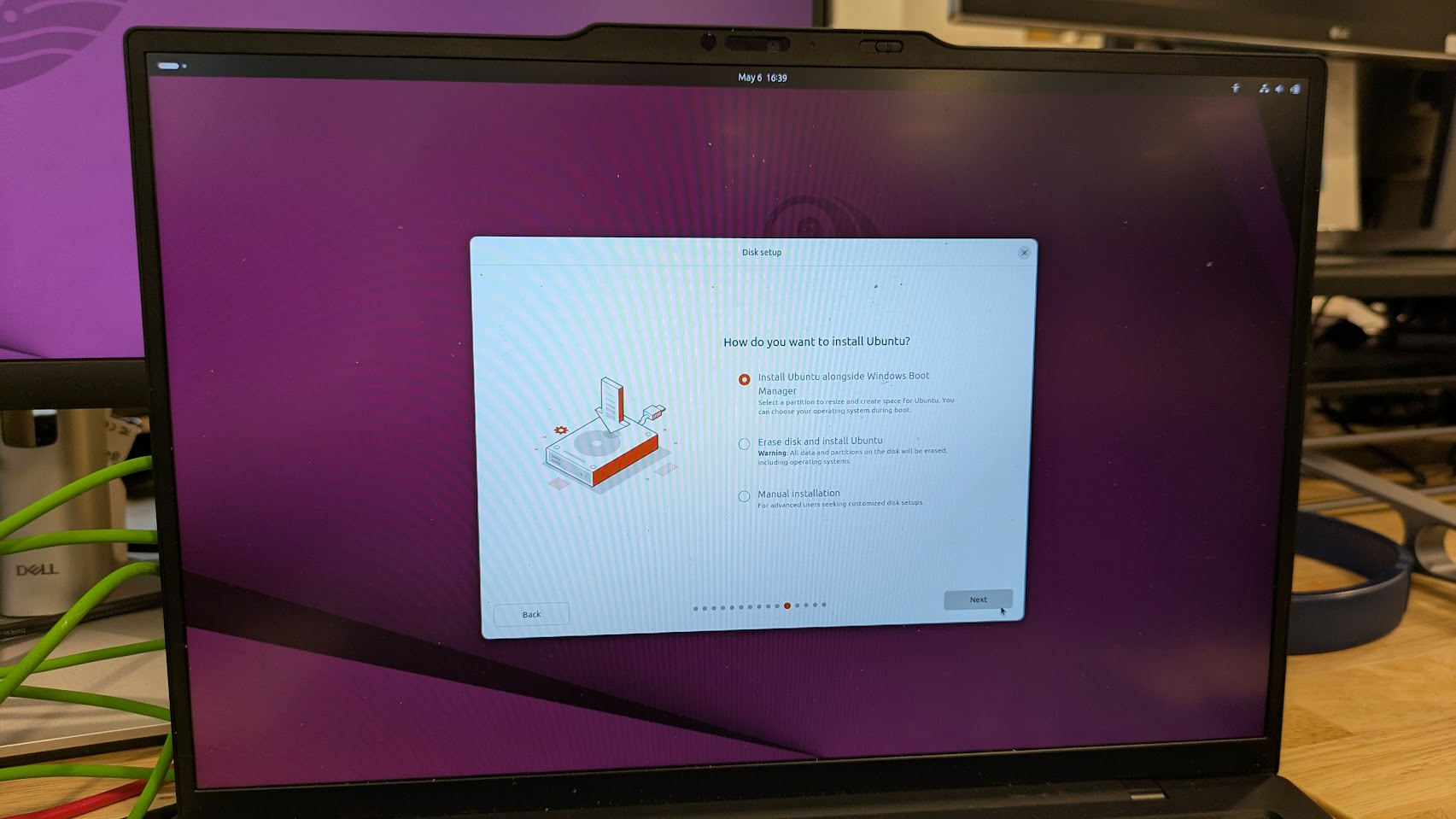
I then decided to alot about 500GB (545GB to be precise) to my Ubuntu installation. I have a 2TB SSD in my laptop so this ends up using up a quarter of my space. If I only end up installing a few things, I may regret going with 500GB over a smaller amount like 256GB, but I want a decent amount of room to play with.
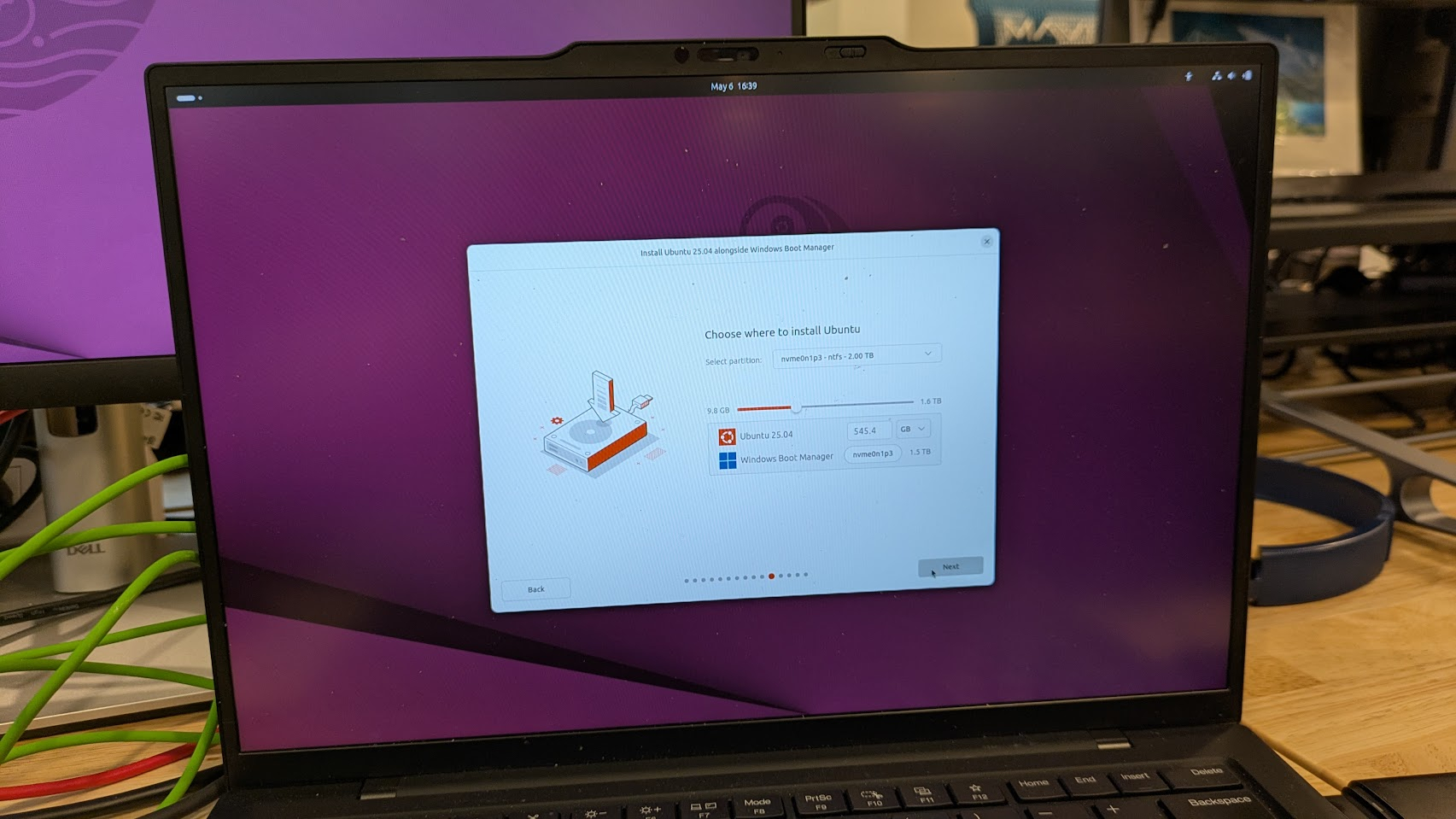
To avoid the kind of hassle I had when disabling BitLocker, I opted to go without encryption.
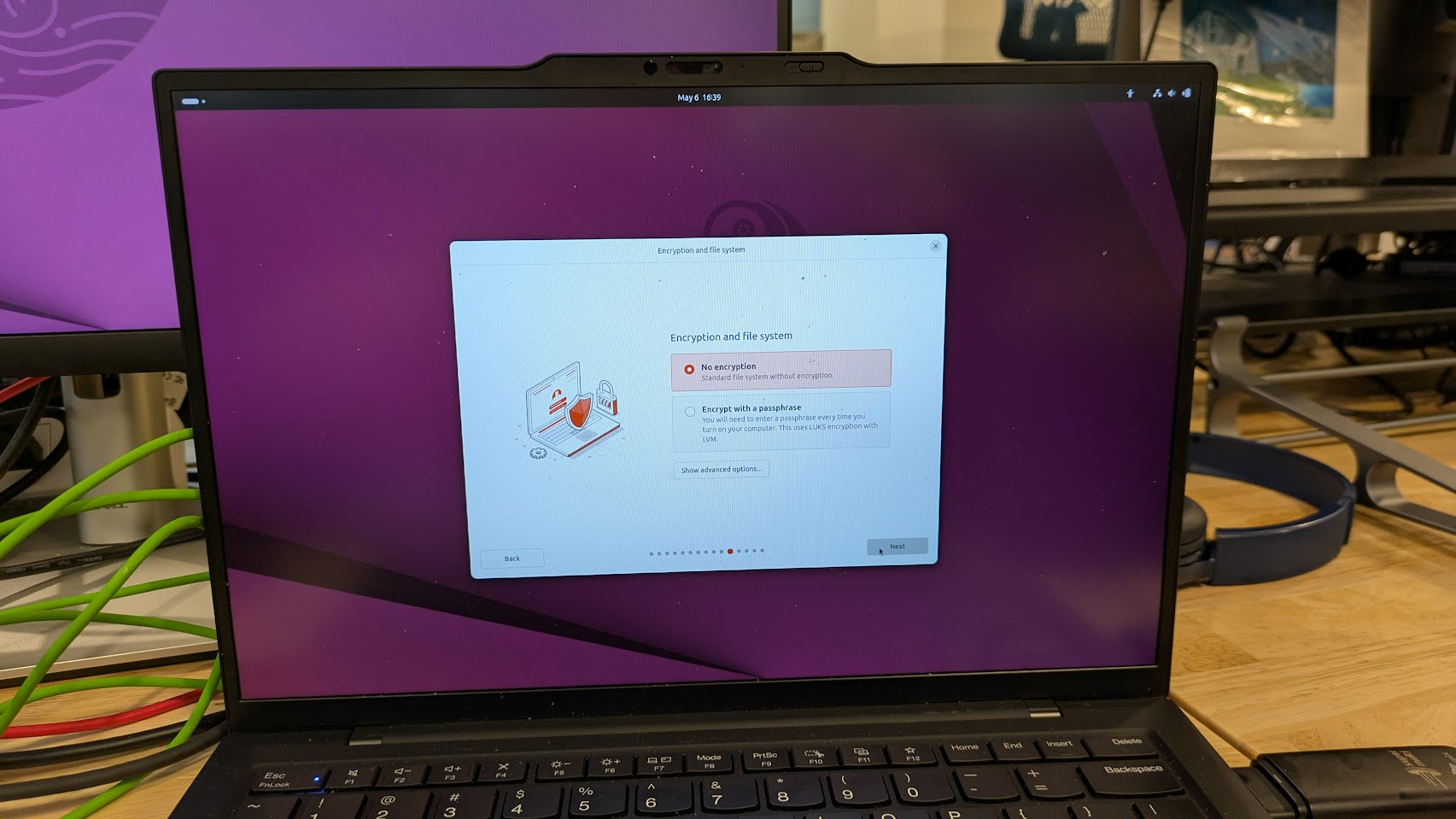
I entered a name for my computer and chose a username and password.
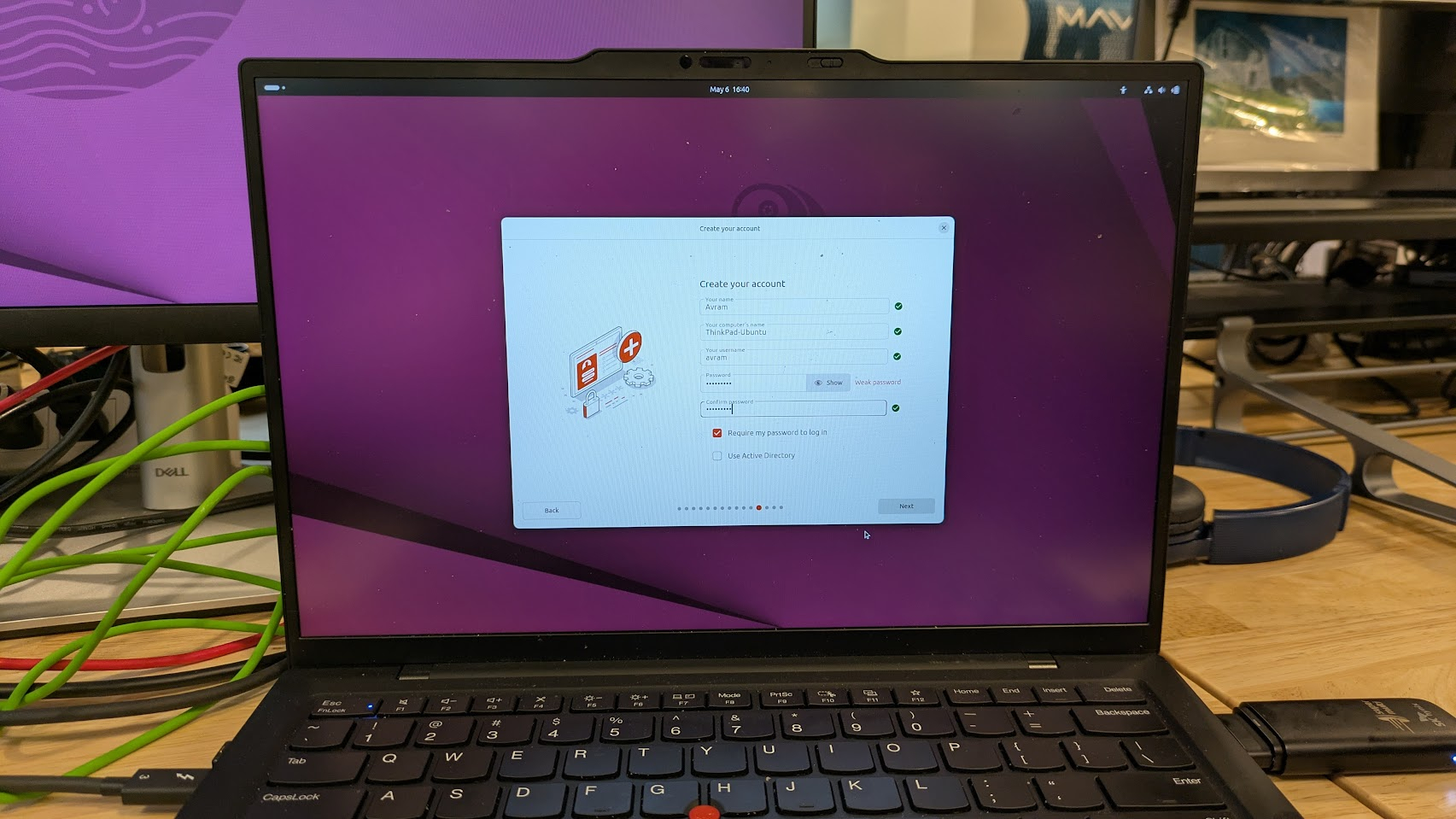
I then chose my timezone.
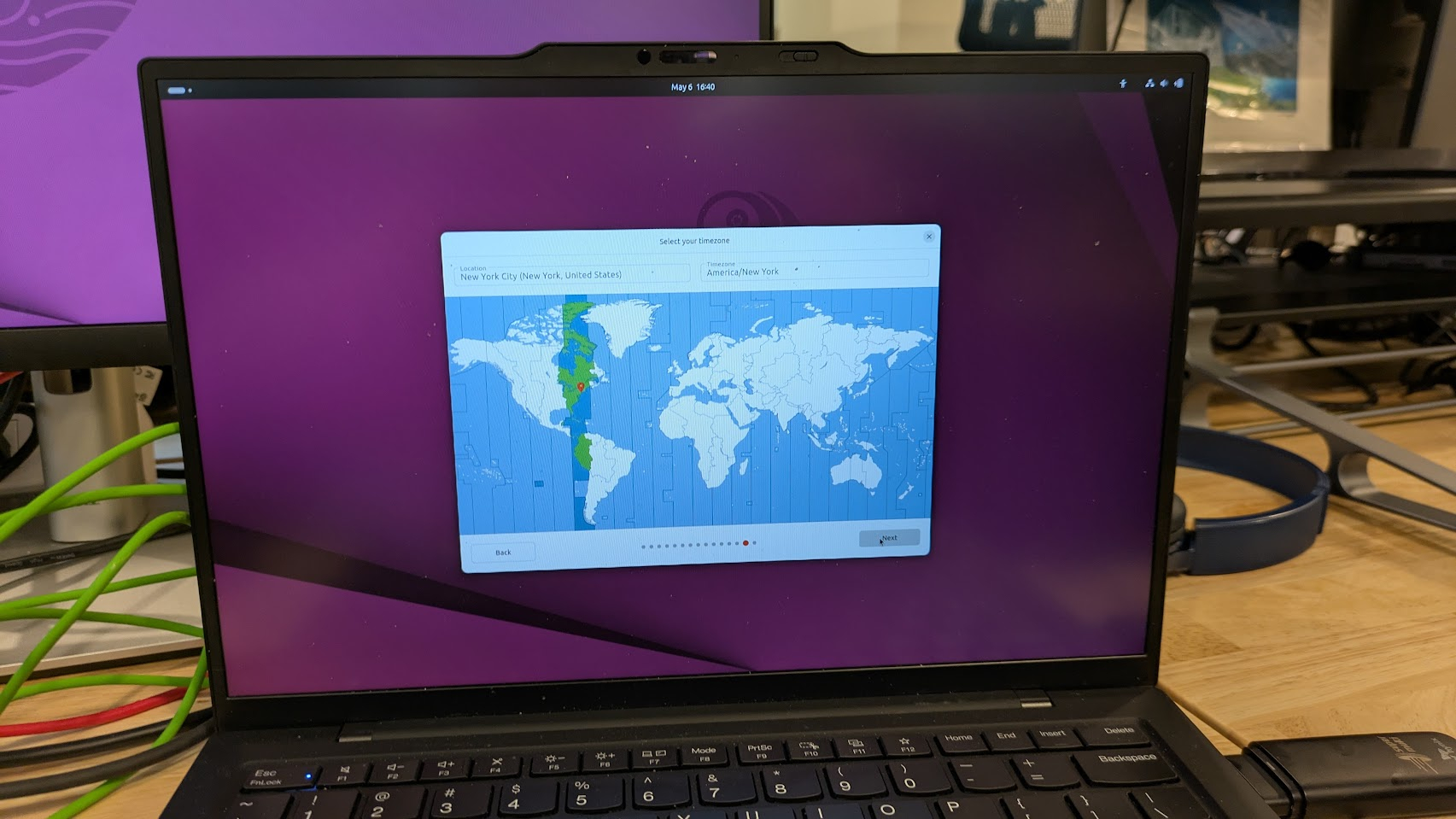
Then I clicked Install.
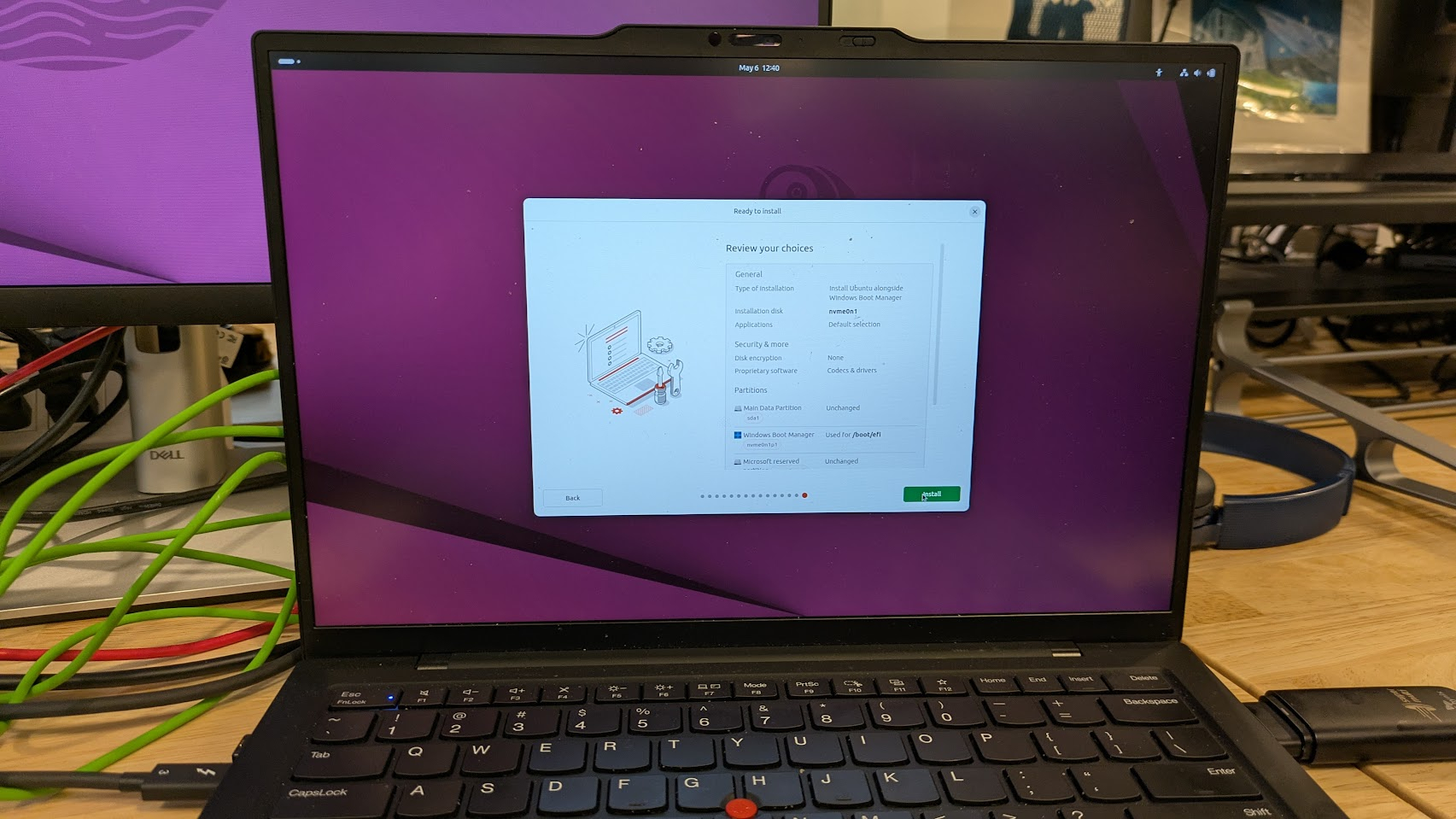
I had to wait a few minutes, about five minutes or so, for Ubuntu to copy its files and finish installing. During the install, I got a promotion for Spotify.
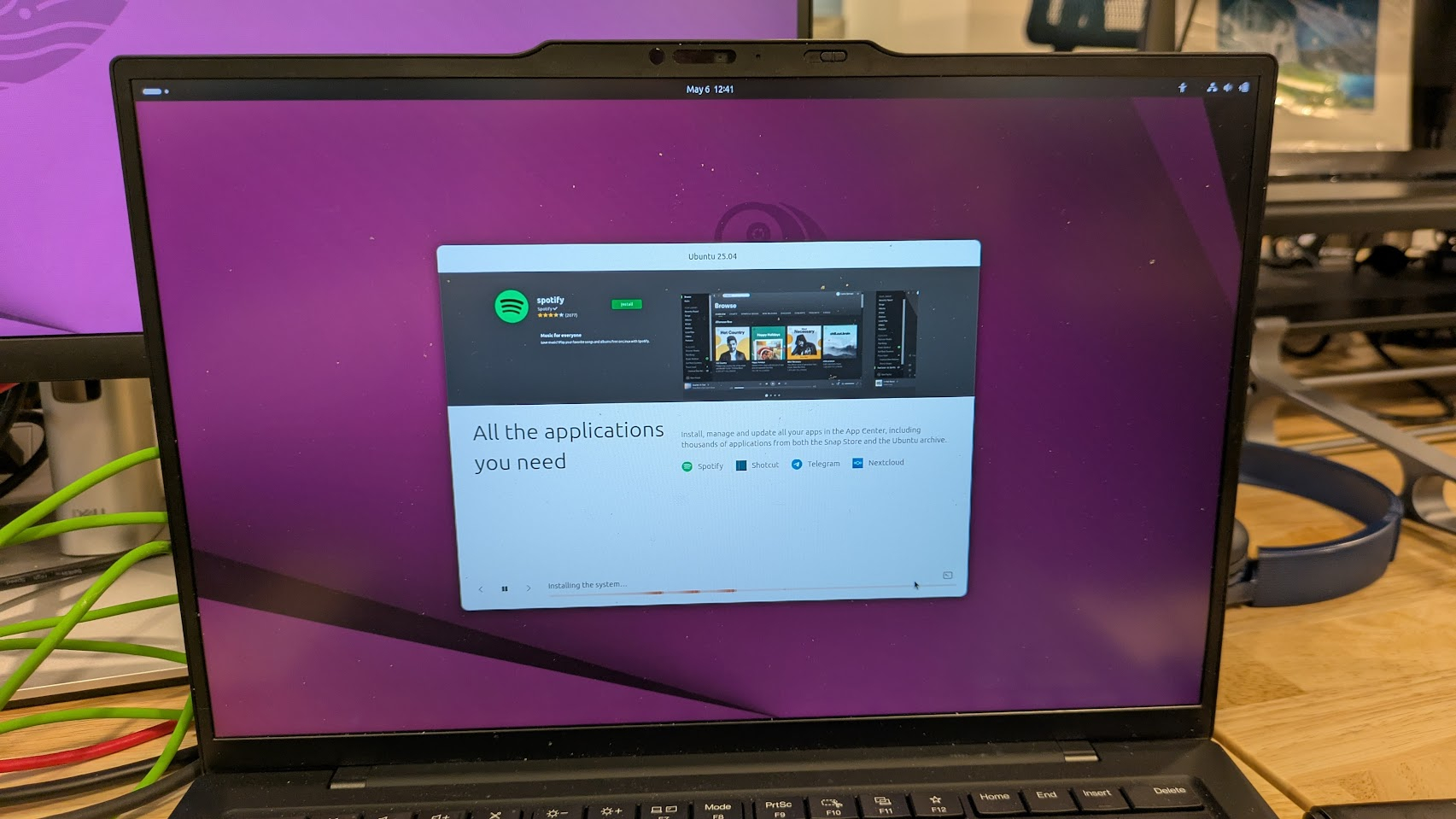
Finally, I got a message that Ubuntu 25.04 is installed and ready to use.
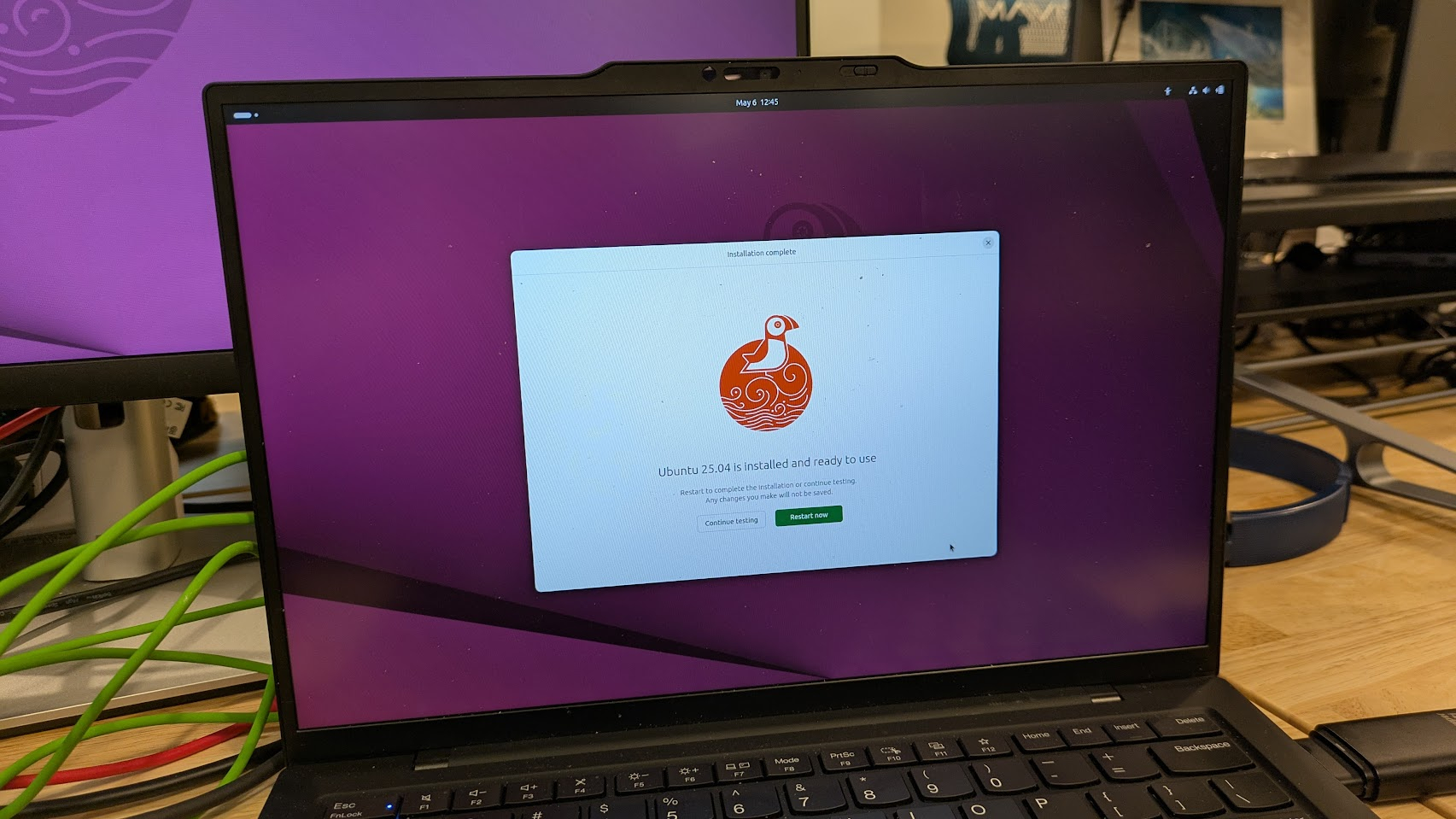
I restarted and was first shown the GRUB menu which allows me to choose between booting to Ubuntu and booting to Windows. I didn't touch the computer for a few seconds and it automatically booted to Ubuntu.
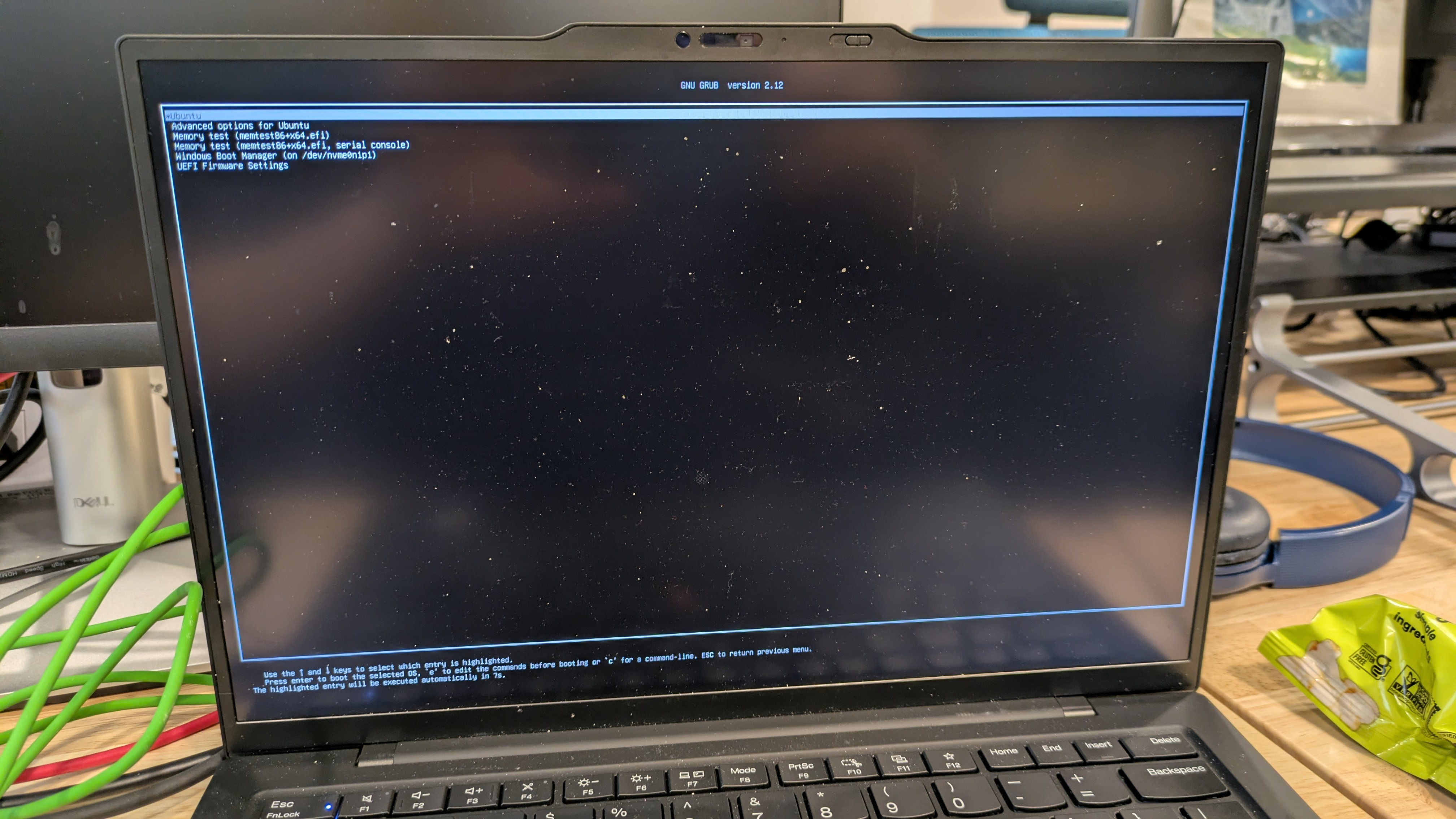
Then I was welcomed to Ubuntu 25.04. The adventure begins!
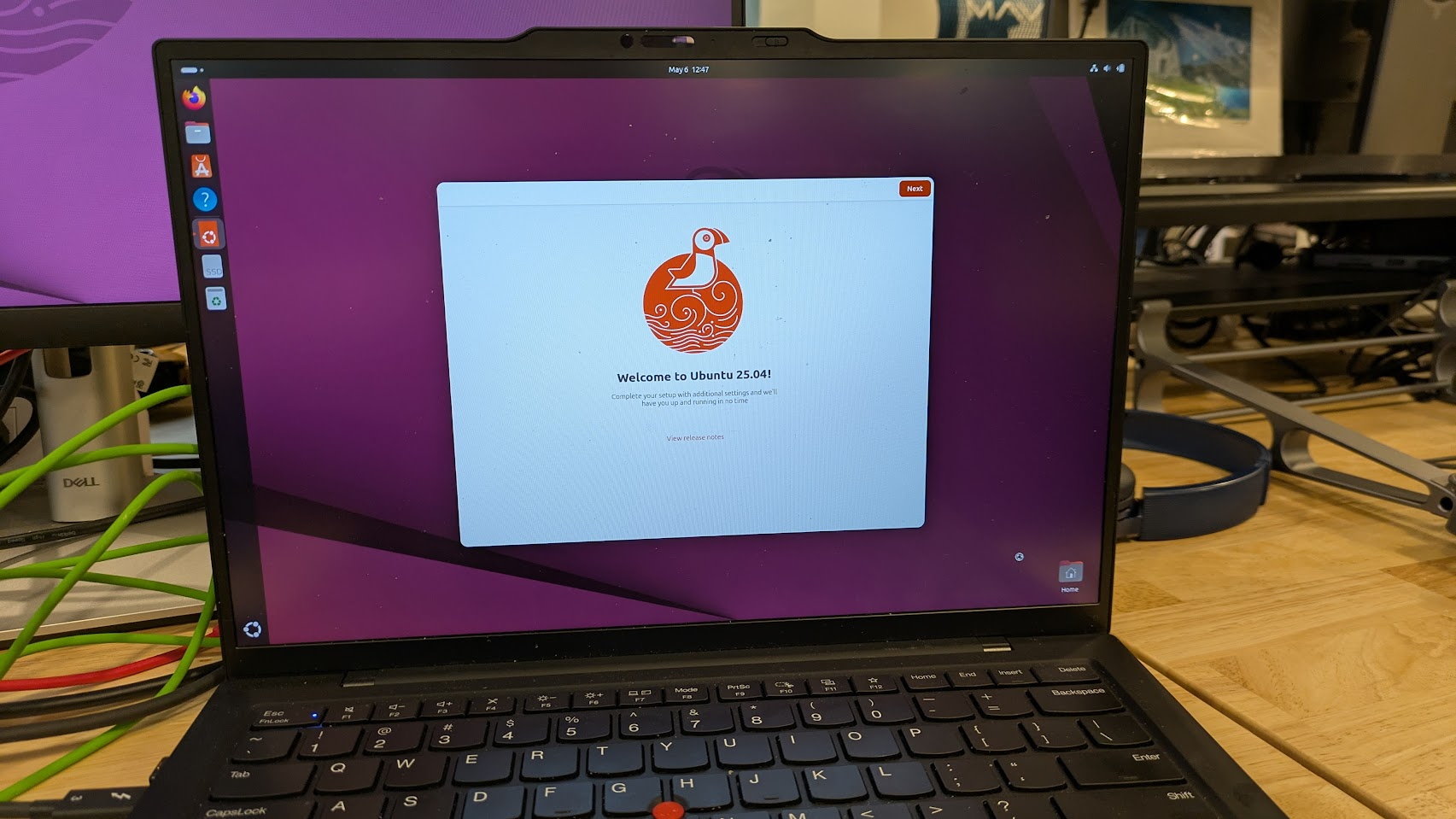
The first thing I had to install
The very first thing I had to do under Ubuntu was connect my Bluetooth mouse, a Logitech MX Master 3, using the Bluetooth settings menu. To get there, I just opened the Ubuntu menu and searched for Bluetooth.
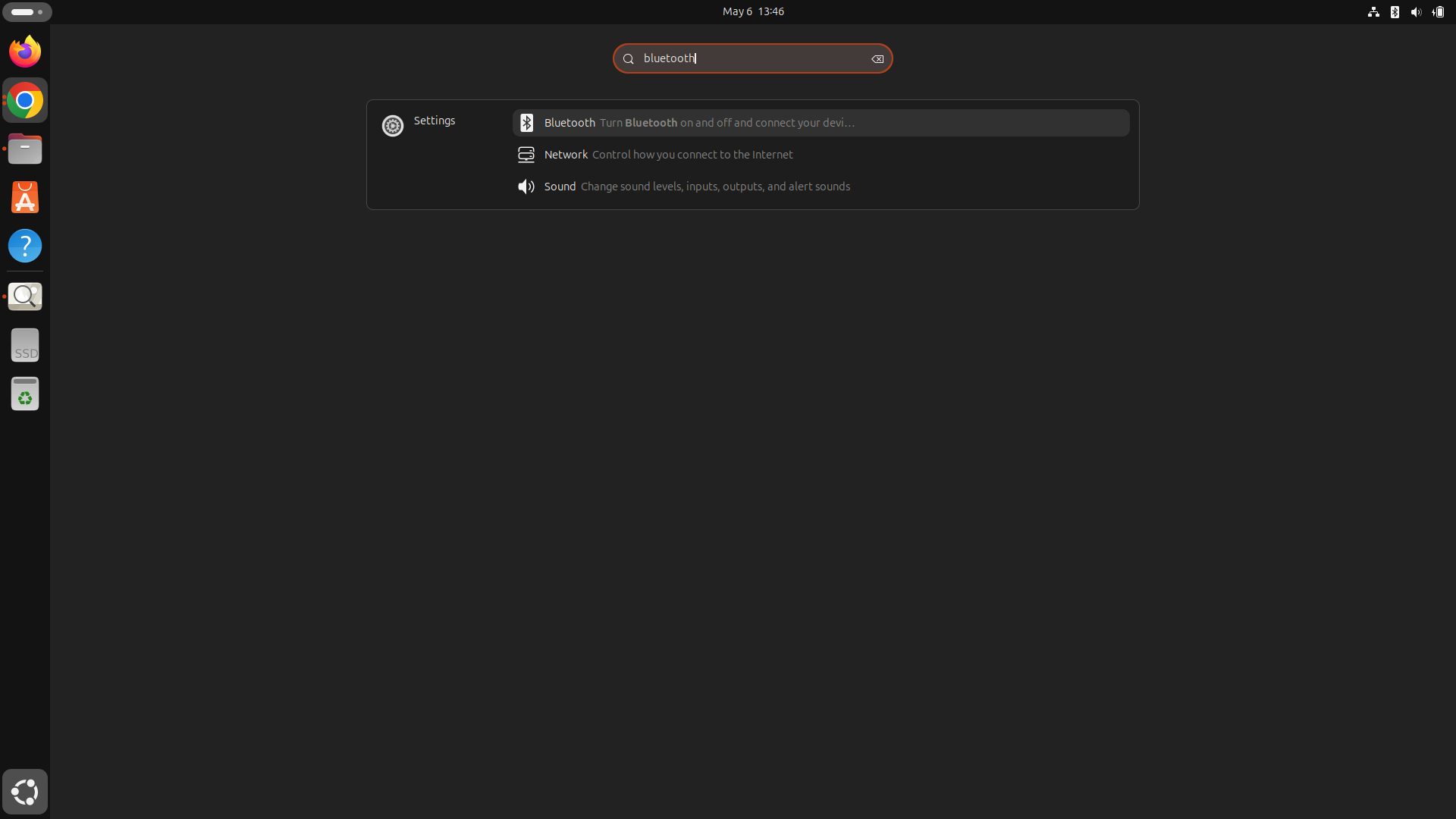
I then put my MX Master 3 in pairing mode and it was detected. I just clicked connect and it immediately paired.
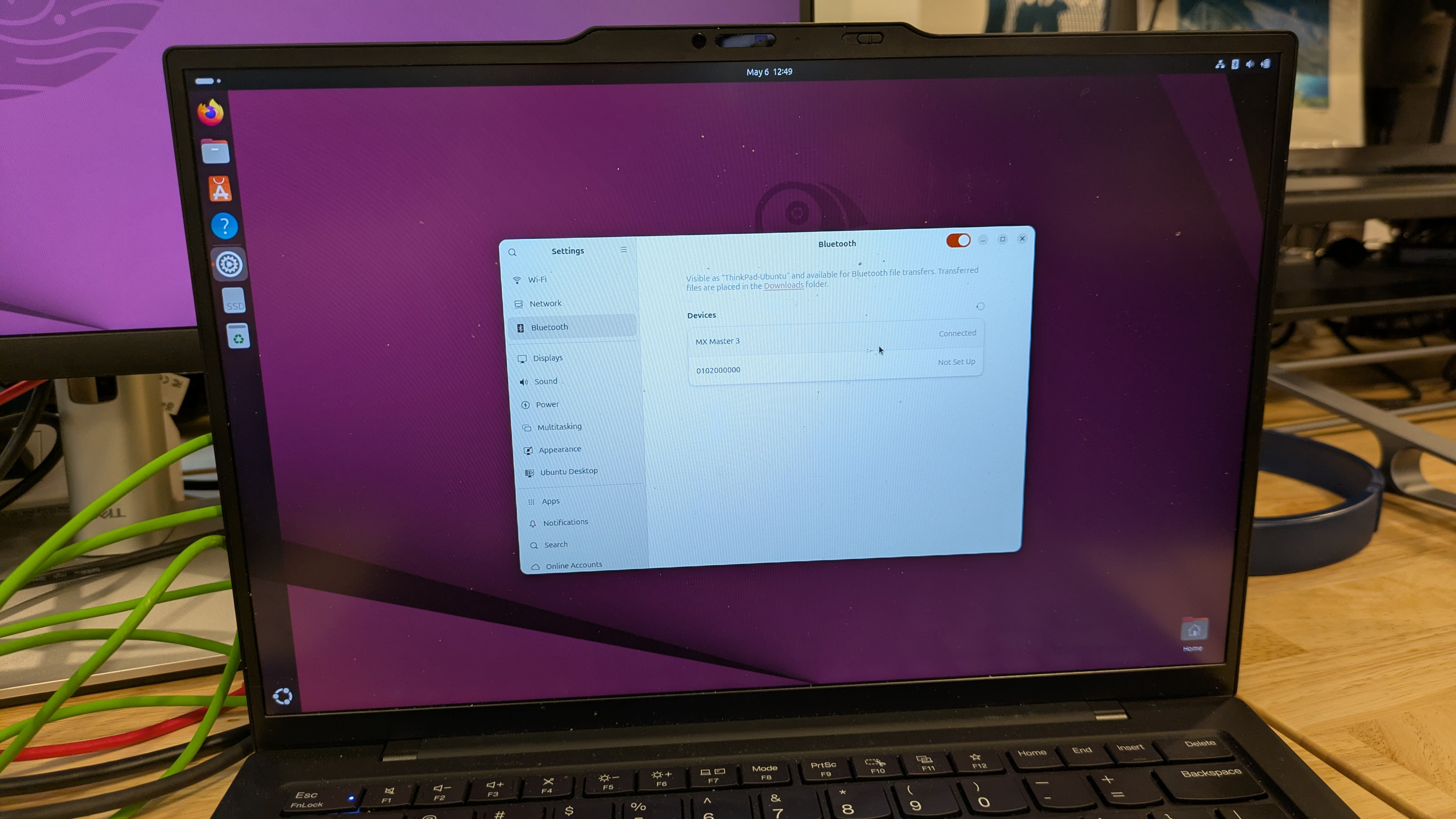
Docking station disaster!
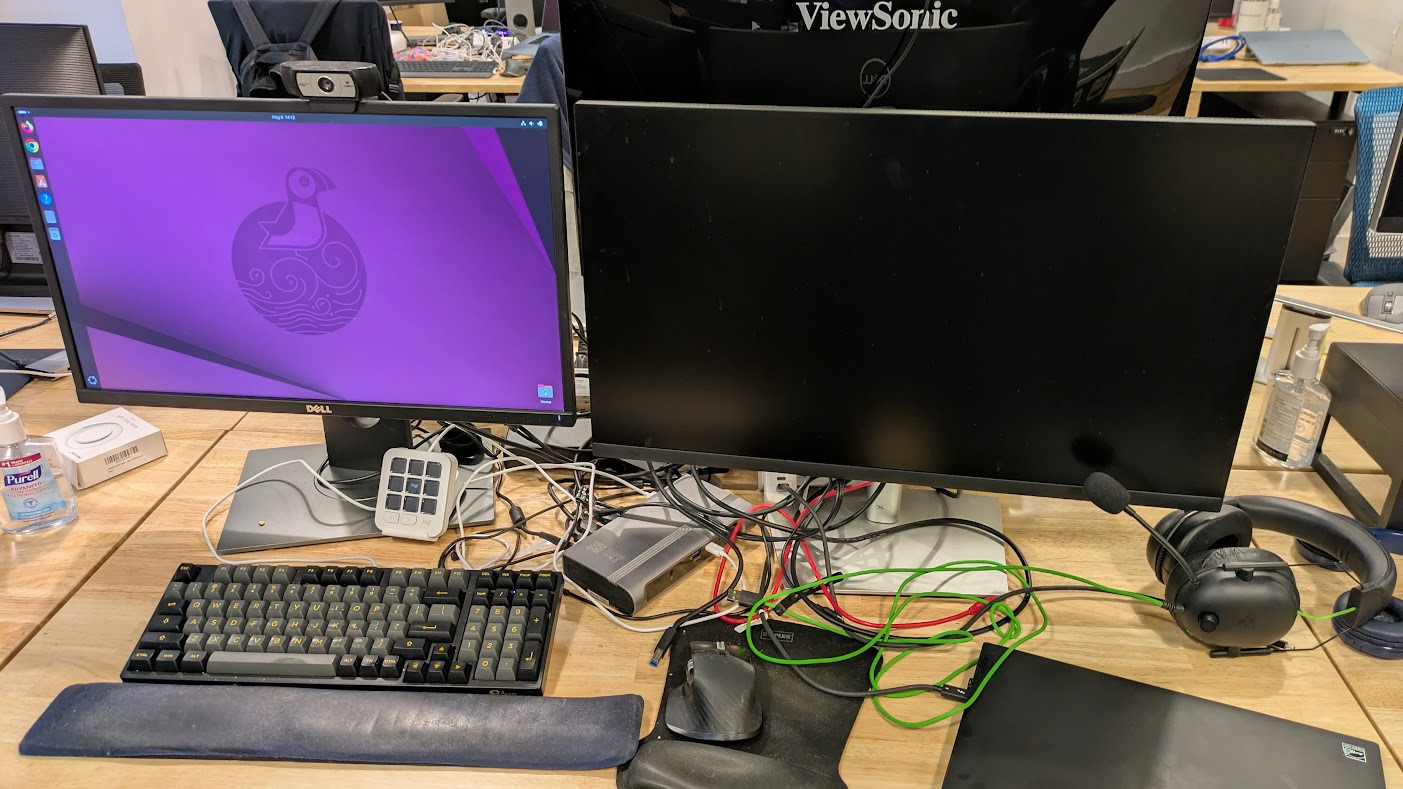
Unfortunately, I've already found a small compatibility problem with Ubuntu 25.04 and my hardware, specifically my docking station. It's causing my secondary external monitor to blink on and off every few seconds and it's incredibly annoying.
At my office, I always connect my laptop, a ThinkPad X1 Carbon (Gen 12 with Intel Metor Lake Core Ultra 7), to a Thunderbolt 3 docking station, specifically a Plugable TBT3-UDZ. It connects to all of my peripherals, including my keyboard, webcam and headset, along with two external monitors, both via HDMI.
Unfortunately, monitor number two keeps blinking on and off under Ubuntu 25.04 and this isn't happening under Windows 11 with the same docking station and hardware. I even ran a firmware update on the docking station to see if it would help, but no luck.
I'm going to have to try a different docking station, perhaps one that connects via USB 3.0 instead of Thunderbolt 3 or 4.
Docking station solution involves a very involved install
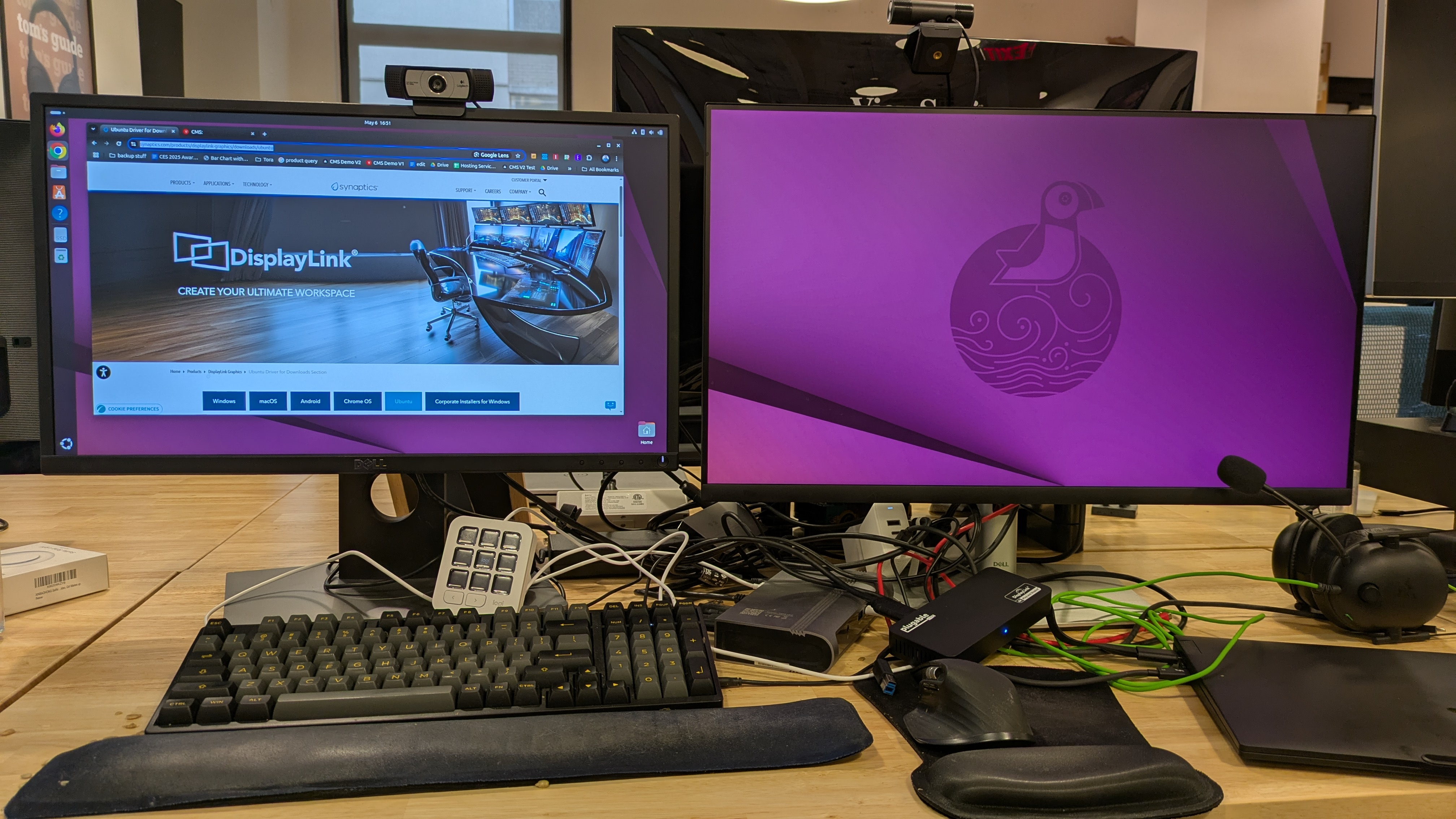
So I found at least a temporary though kludgey solution to my docking station problem. As you'll recall from the previous post, my Thunderbolt 3 docking station was blinking the second monitor on and off. Fortunately, I had a USB to dual display adapter in my drawer, a Plugable USBC-6950U.
The Plugable USBC-6950U can't take the place of my Thunderbolt 3 dock, because it is just for displays and doesn't have USB ports for my peripherals. However, it can attach to a USB Type-A port because it uses DisplayLink technology that outputs video over a USB connection. This is unlike Thunderbolt 3 and 4 which send video as DisplayPort signals not as regular USB data.
So I hooked up the second monitor to the Pluable USBC-6950U and plugged the dock into the Type-A port on my laptop. I still have the Thunderbolt 3 connection going to my laptop's Thunderbolt 4 port.
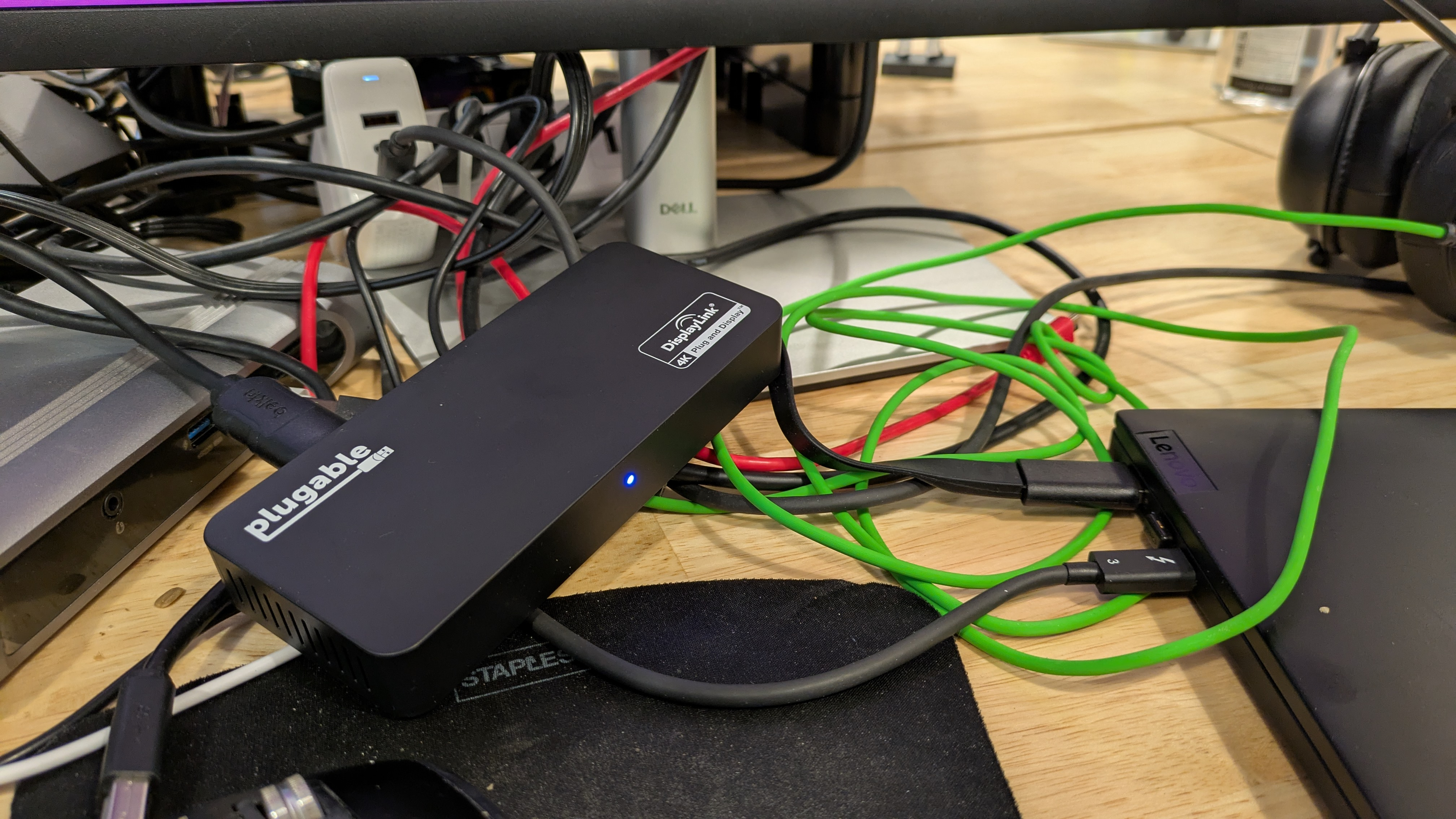
Unfortunately, DisplayLink docks don't run natively on Ubuntu 25.04. You need to install the DisplayLink driver for Ubuntu and here's where things get interesting. I downloaded the Ubuntu driver from DisplayLink's site and unzipped it.
Then I ran the script that was in the zip file.
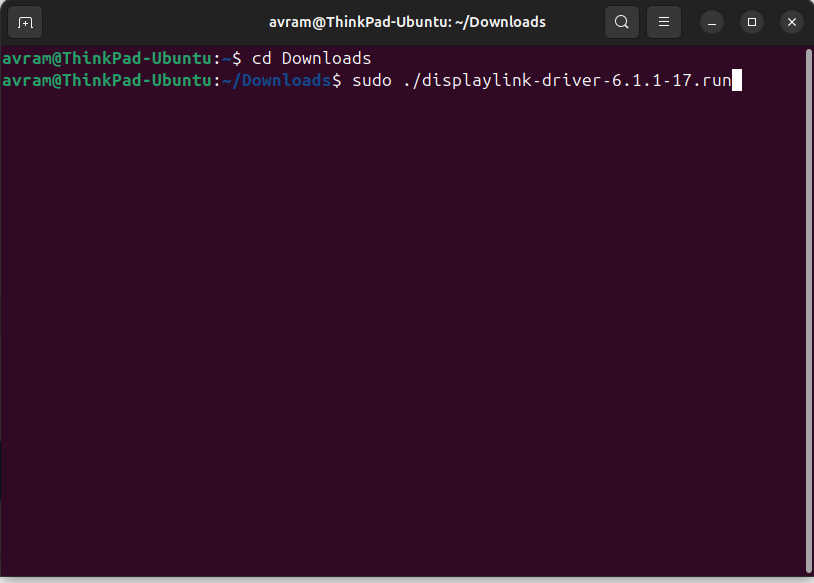
And then the script asked me to run various updates at least half a dozen times. And all of this was taking place at the command prompt.
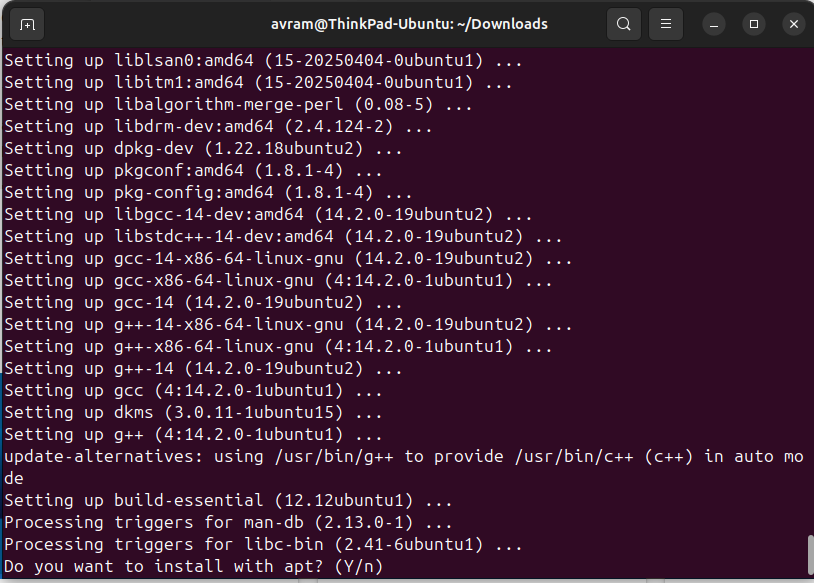
Then the install script asked me to set up a MOK (Machine Owner Key). This is a security measure that allows third-party drivers to run, despite there being a UEFI Secure Boot BIOS. I had to create a password for the MOK, enter it, watch as Ubuntu rebooted and then enter my password again to install the driver.
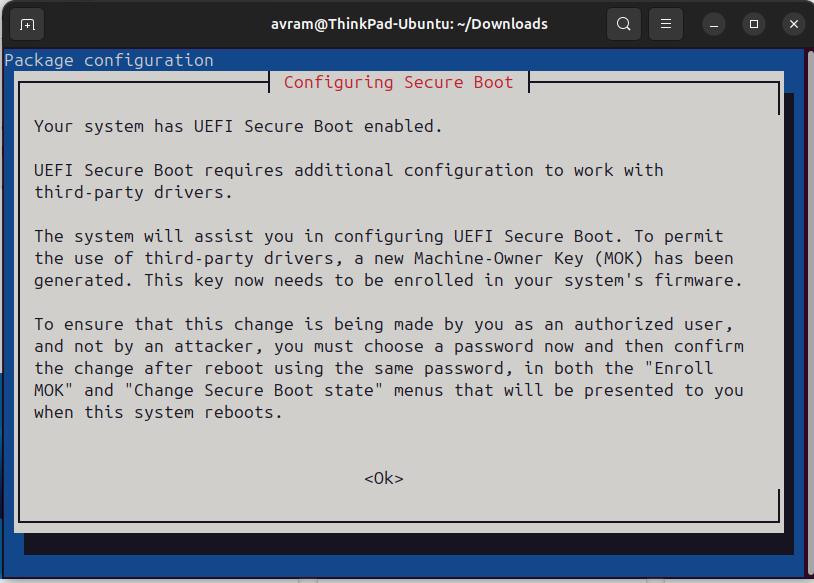
Someone with less tech-savvy would have been totally confused by the process of registering and entering the MOK. And, to be honest, I found it confusing too.
Meanwhile, on Windows, when you install a driver, you don't need to go to the command prompt, run a script, say "yes" to about half a dozen system updates, create a new password for installing the driver and then reboot and enter that password again. This is a totally confusing and ridiculous process.
However, the process worked and my second monitor is running now and it's not blinking.
Installing on my desktop took way longer than my laptop
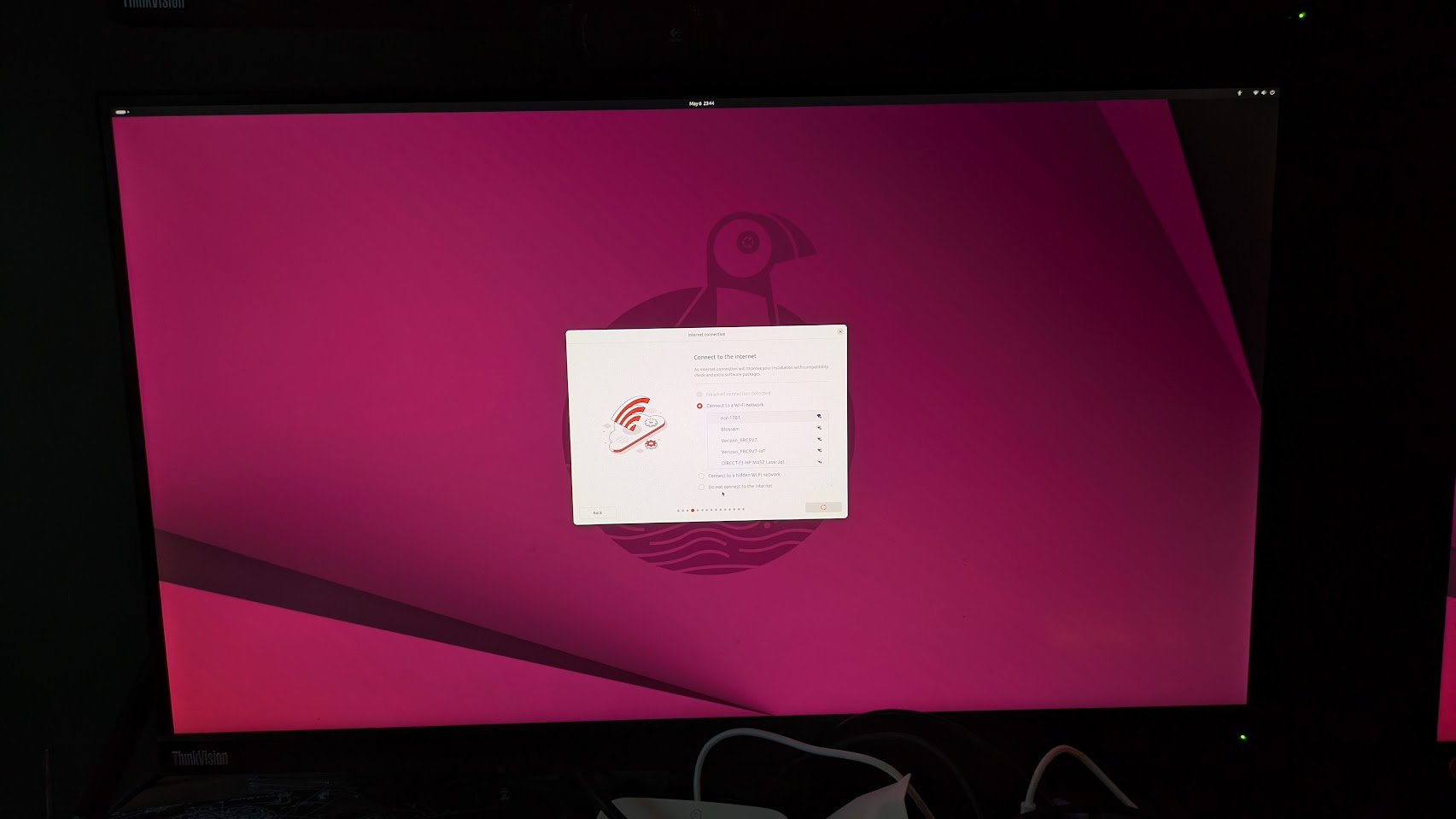
My desktop is a pretty powerful PC. It's got a Ryzen 9 7950X CPU (16 cores, 32 threads), 64GB of DDR5 RAM, an RTX 3090 Ti GPU and a 2TB, PCIe 5 SSD. There's no way it's less powerful than my laptop, which sports a Core Ultra 7 "Meteor Lake" mobile processor. However, it took way longer to install Ubuntu 25.04 on my desktop than on my laptop.
Last night, I installed the OS on my desktop and just having it connect to Wi-Fi (via Wi-Fi 6) took several minutes. The overall installation process took about 15 minutes and appeared to be stuck for the last 10 of those minutes (there's no progress bar to tell you how far along it is). But I waited and eventually it finished.
Anyone have any idea why a much more powerful computer would take three times as long to install and appear to be stuck?
Installing Google Chrome browser: It's not in the app store
The first app I installed on Ubuntu (on both my machines) was Chrome browser. While Chromium, the open source version of the browser, is available in Ubuntu's App Center (its app store), the official Google version is not.
To get the Google version of Chrome, I first had to go to this page and click Download Chrome.
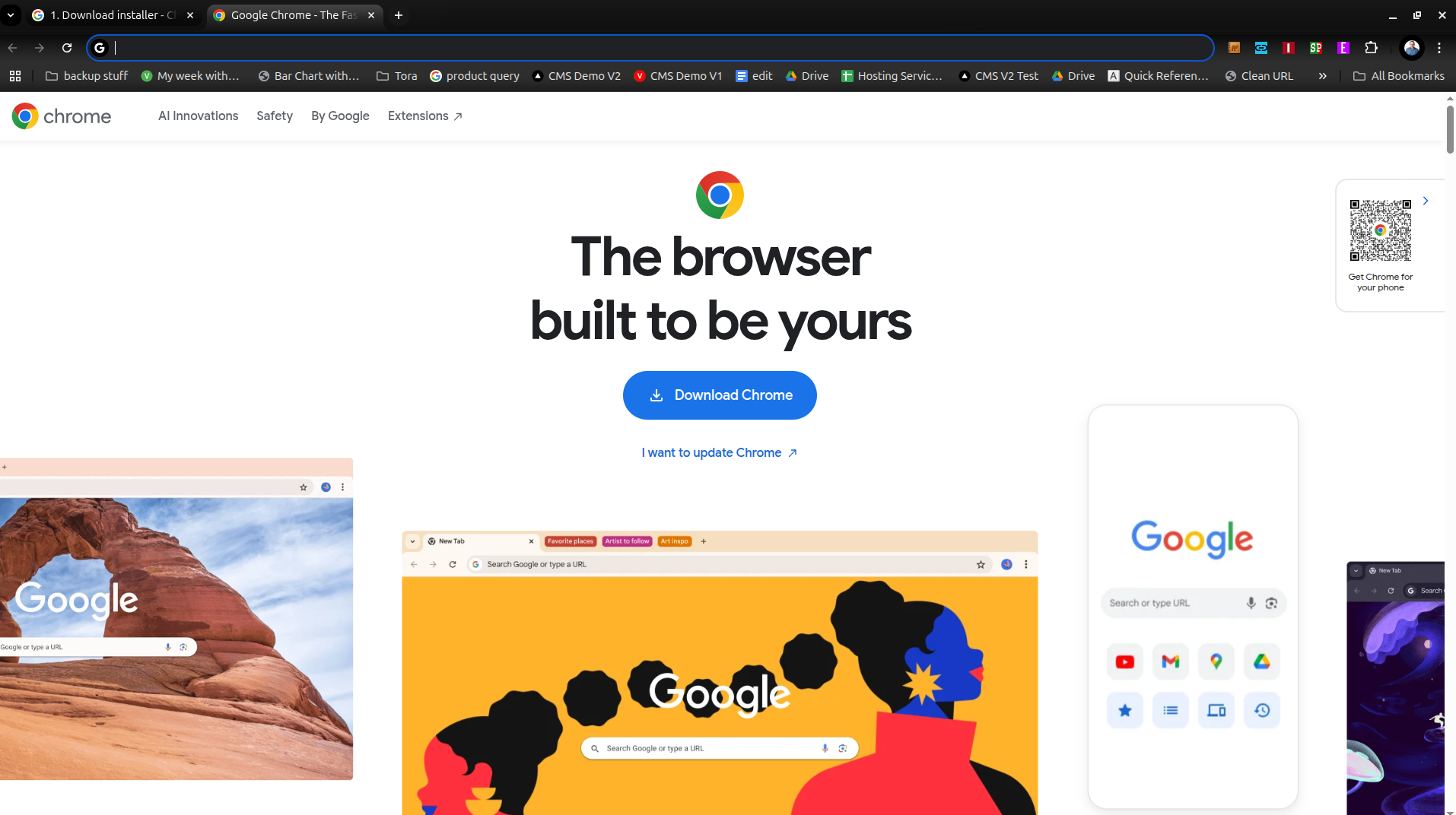
Then I had to choose the DEB file for Ubuntu.
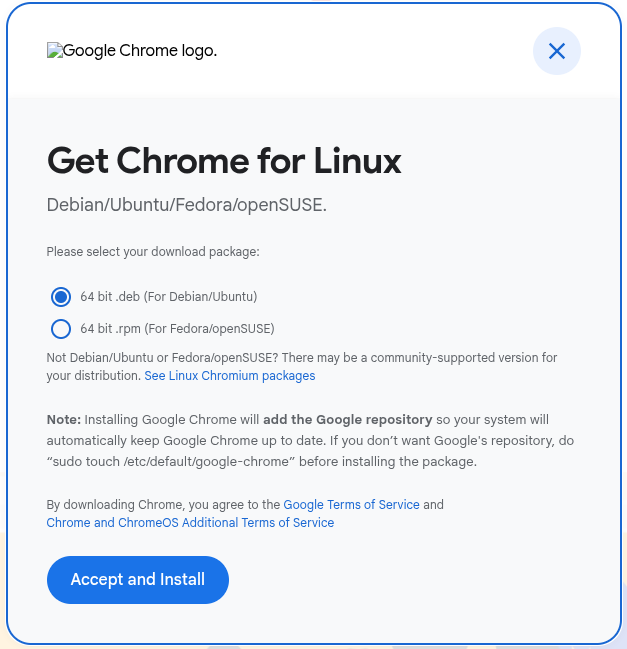
After it downloaded, I double clicked on the DEB and it asked if I wanted to install.
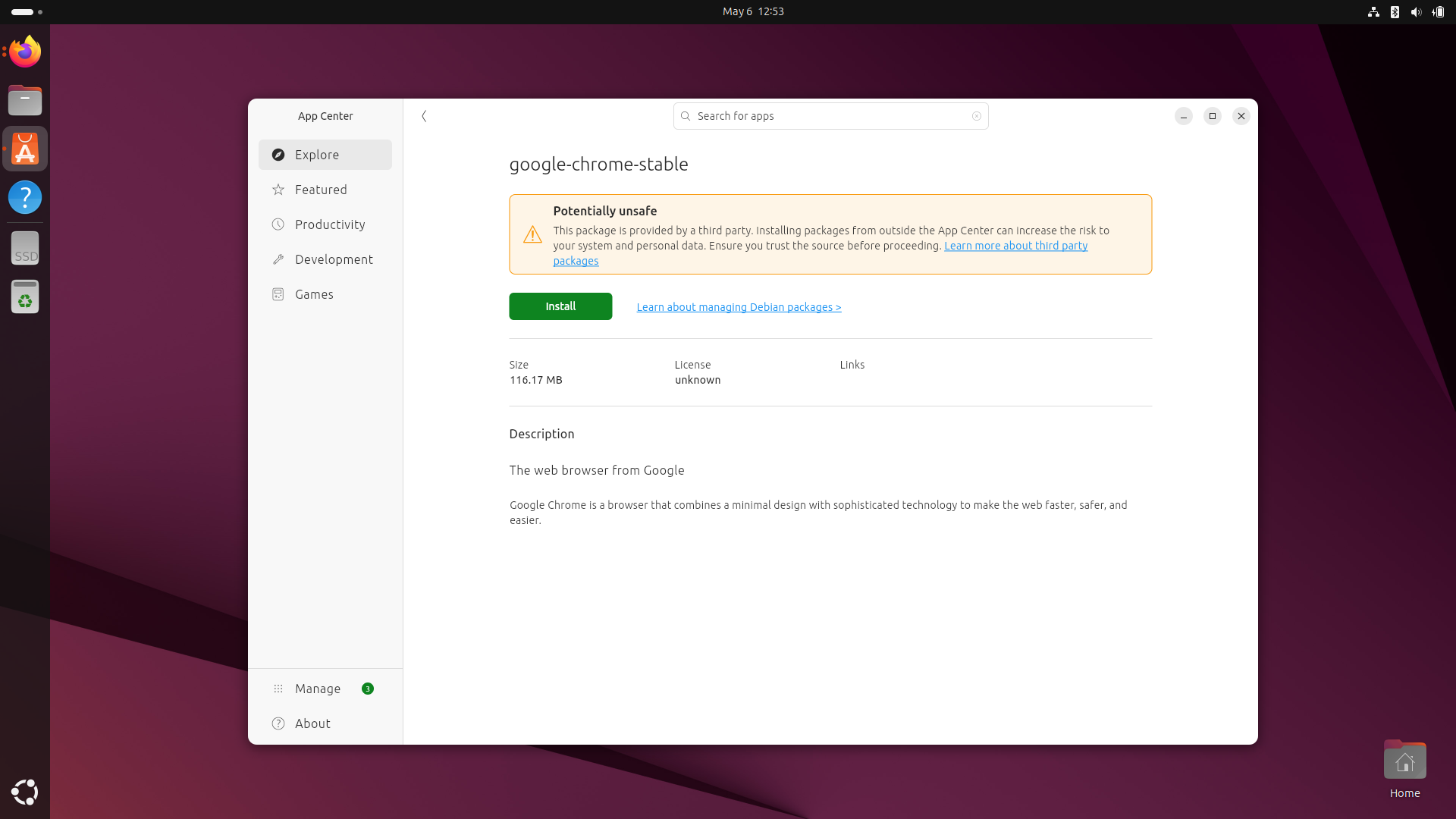
Boom. Chrome installed. However, why can't it be in the App Center where it would be available with only one click?
Can Ubuntu support unique Window borders? Not in Slack
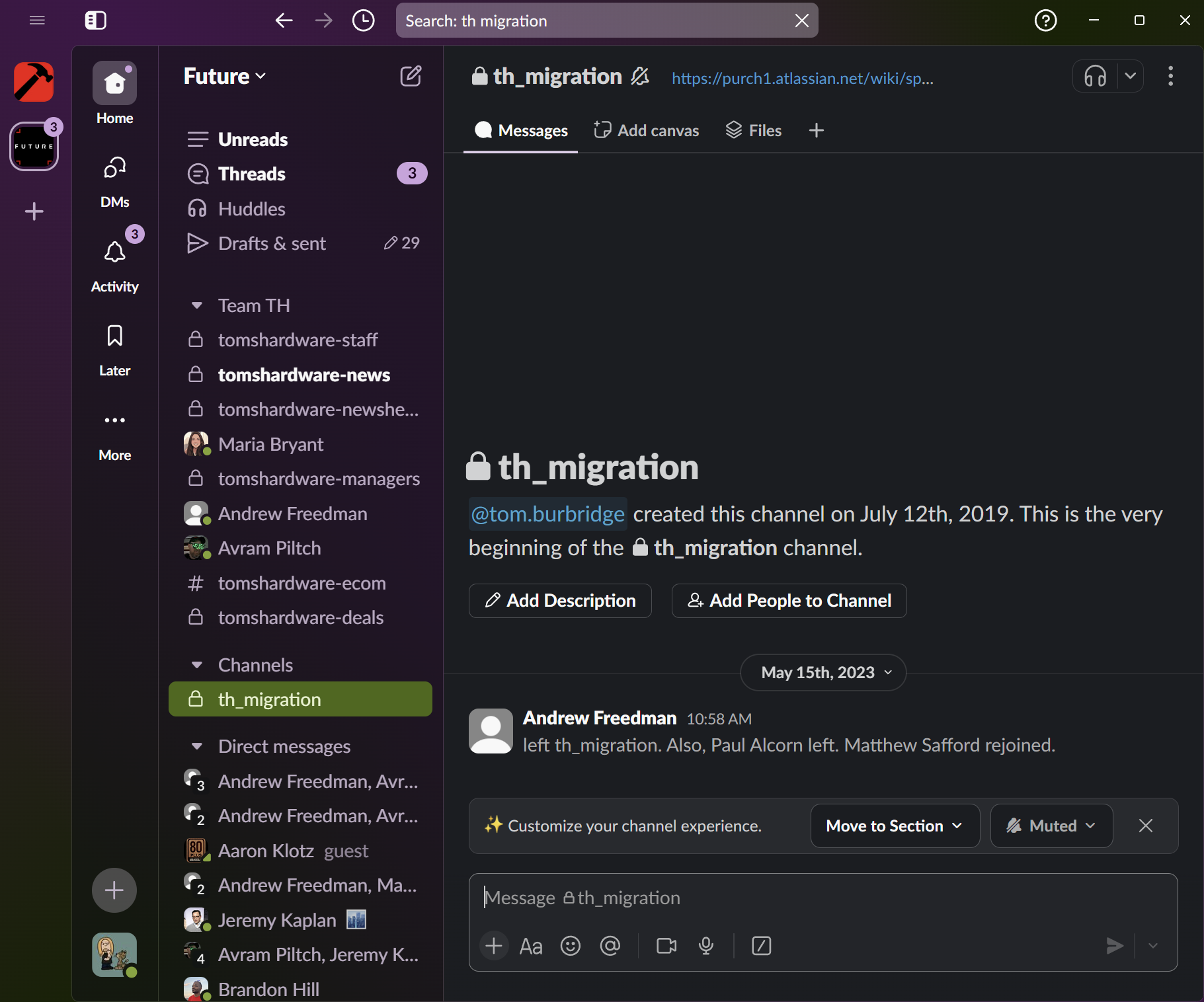
One app I use a lot is Slack. We communicate with it for work so I can't live without it.
In Windows 11, the Slack Window is very stylish. It has a unique top with no Window bar. But what about Linux?
In Linux, it has the same standard, ugly Window bar as everything else. Lame.
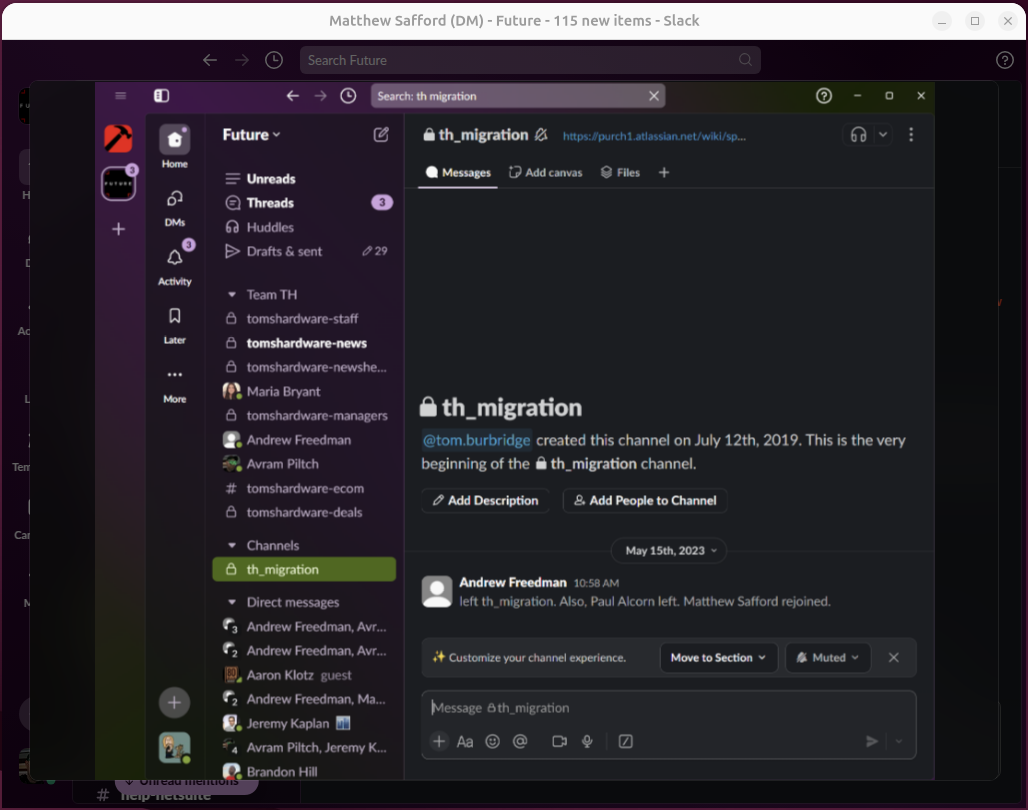
Which of my favorite apps have Linux versions?
So I'm in the process of figuring out which of my favorite Windows apps have versions for Linux. So far, here's what I have found.
- Slack - has Linux version
- Dropbox - has Linux version
- Google Drive - no Linux version
- Photoshop Elements - no Linux version, using GIMP instead
- Notepad++ - Runs under Linux via WINE emulation but the font is too small to see
- Chrome browser - has Linux version
- OBS Studio - has Linux version
- PickPic screenshot tool - no Linux version, using built-in Ubuntu screenshot feature
- MySQL Workbench - appears to have a Linux version
- Visual Studio Community -- There is VSCode, but not VS Community
- VMWare Workstation Pro - Has a Linux version
- Logi Options+ - No Linux version
- Stream Deck app - No Linux version
- AutoHotKey - No official Linux version; there is a tool called AHK_X11 that tries to emulate it.
- VLC - Has a Linux version
- Steam - Has a Linux version
If anyone has any suggestions for apps I can use as substitutes, please let me know in the comments.
What's with this font?
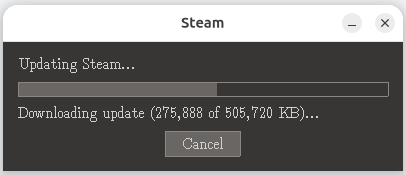
So I installed Steam on my Linux PC and, as part of the process, it showed me this dialog box. That font is straight out of the last century.
So many different ways to install apps
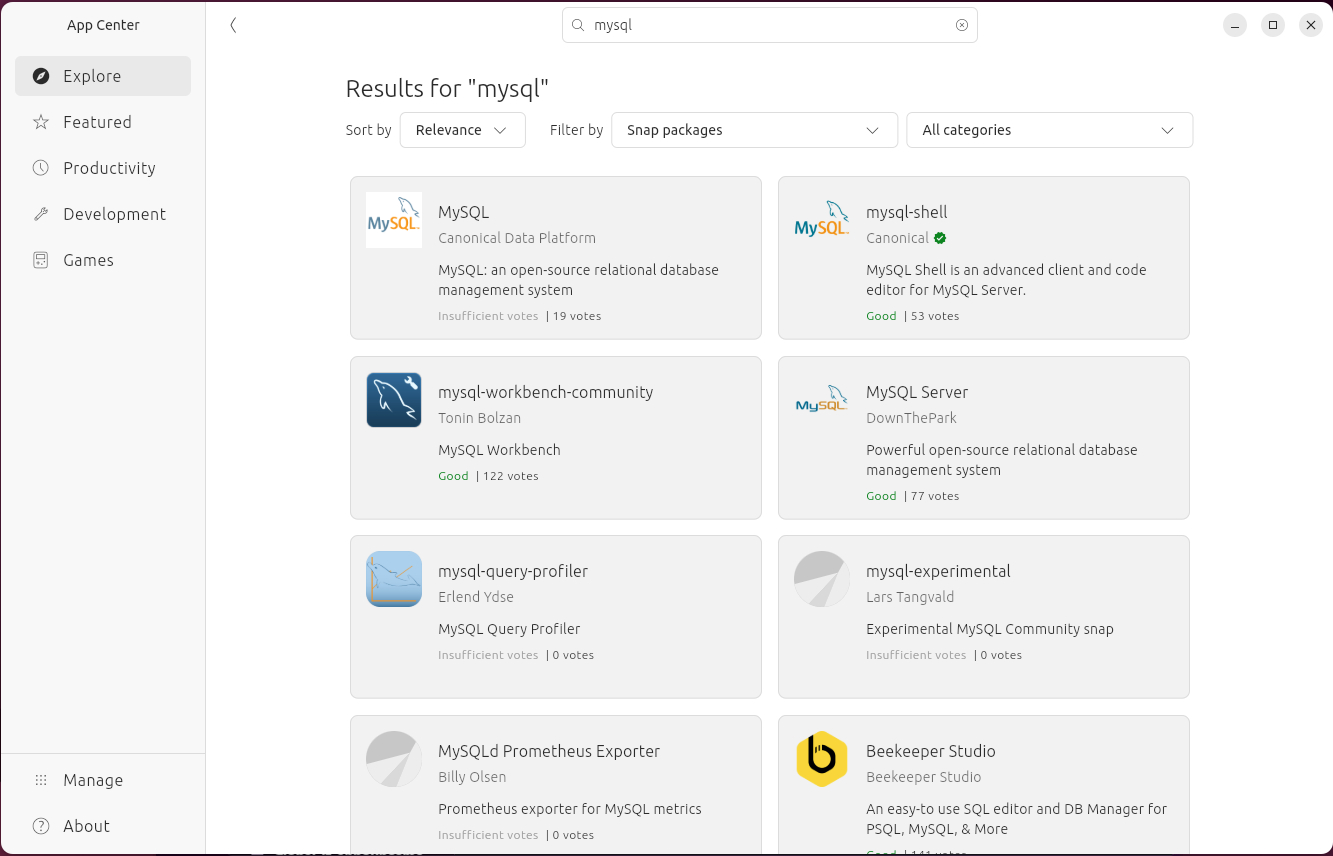
There are at least four main ways that I've had to use to install applications so far in Ubuntu. First, there's the Ubuntu App Center, a searchable app store that lists thousands of programs and lets you install them in a single click. This is just click the Microsoft Store on Windows.
Another way to get apps is to download them directly from a third-party site where they are most likely (but not always) .deb files. Then you can double click them to run the install. That's what I did to get Dropbox and Chrome.
A third method involves using apt at the command line as in sudo apt get install [APP]. That's what I eventually had to do to install my favorite FTP client, Filezilla.
Filezilla was not available in the App Center so I went to FIlezilla's site where I was presented with the option to download an installer.However, the installer was not an installer at all but a .tar.xz archive file with the entire program in it, no installation script and no way to install it. Why on earth would the makers of Filezilla do that?
However, when I Googled "install Filezilla in Linux," I learned that you can install it using sudo apt get filezilla at the command prompt. If you're coming from Windows where you never need to go to the command prompt to install an app (or do most things), this is a really big step down. But it's easy enough to do.
The fourth way I've seen to install software is using some kind of script. That's what I did yesterday to install the DisplayLink driver. That took several minutes and made me enter a MOK (machine owner key) key to get it to work.
It's annoying that, even after decades on the market, Linux still doesn't make it easy enough to find and install apps. This really ought to be easier.
Linux wants you to keep entering your password
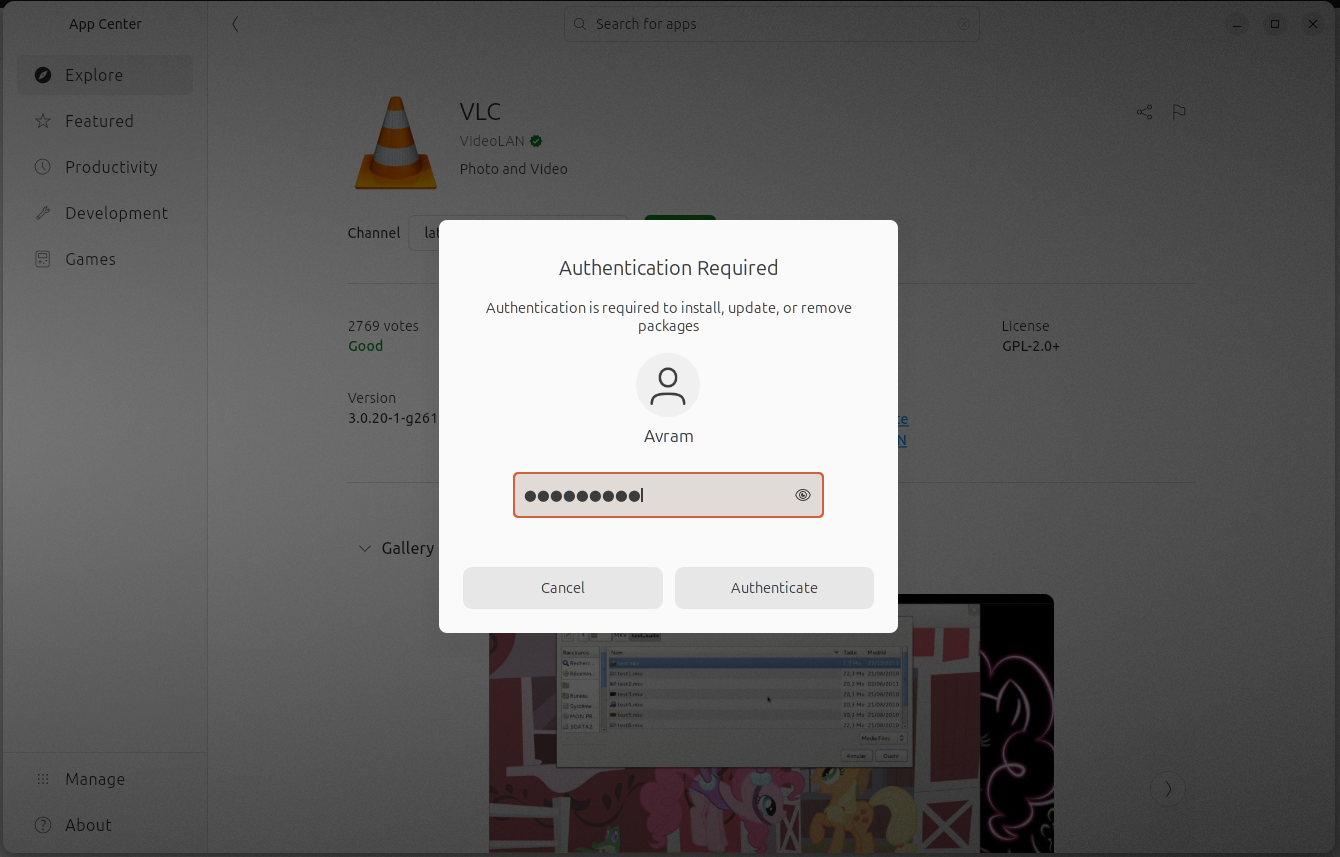
In Windows, when you install a new program or change a key setting, you get hit with a User Account Control pop-up that asks you to approve the change. But you don't need to re-enter your password every time.
In Ubuntu 25.04, every time I install a piece of software, I get hit with a password prompt. This is supposedly better for security, but I'm going to argue here that it's worse.
If you have to type in your password a dozen times a day, you're going to choose a less complex password. So maybe this is self-defeating. Anyway, it's annoying.
Why can't I ungroup taskbar icons?
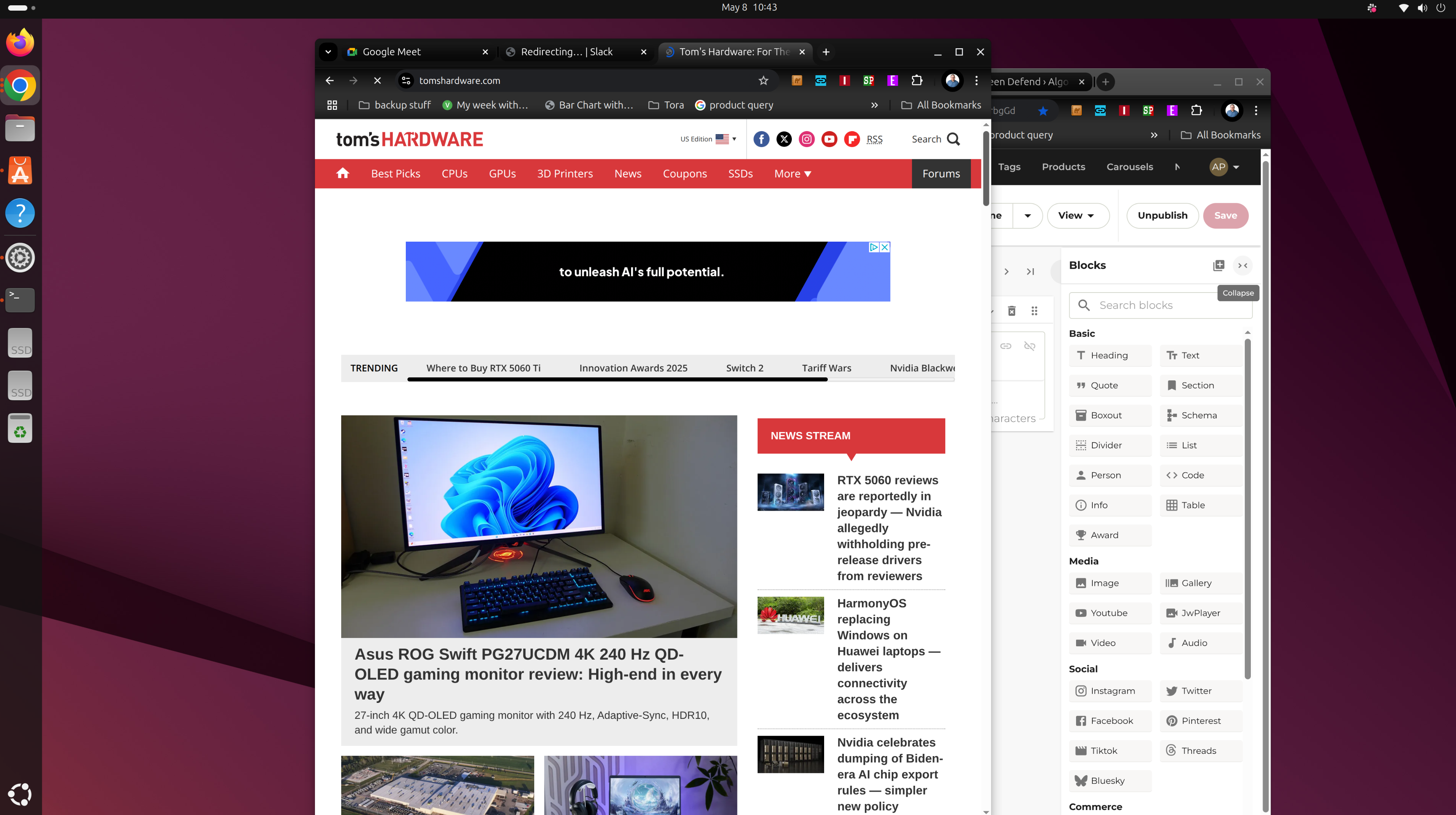
One of the more annoying things about Ubuntu 25.04 is that its taskbar seemingly won't let me ungroup icons. So I have three different Chrome windows open and it shows three dots next to the Chrome icon on the left.
However, unlike Windows, there's no option I can find to ungroup it so that each window would get its own icon. Similarly, there's no way to get a description of the windows into the taskbar.
To see all the windows for an app, I must click on the icon for that app in the taskbar and then I'm taken to a separate screen that shows all the windows. It's a minor annoyance but an annoyance none the less.
Gnome shell extensions add functionality
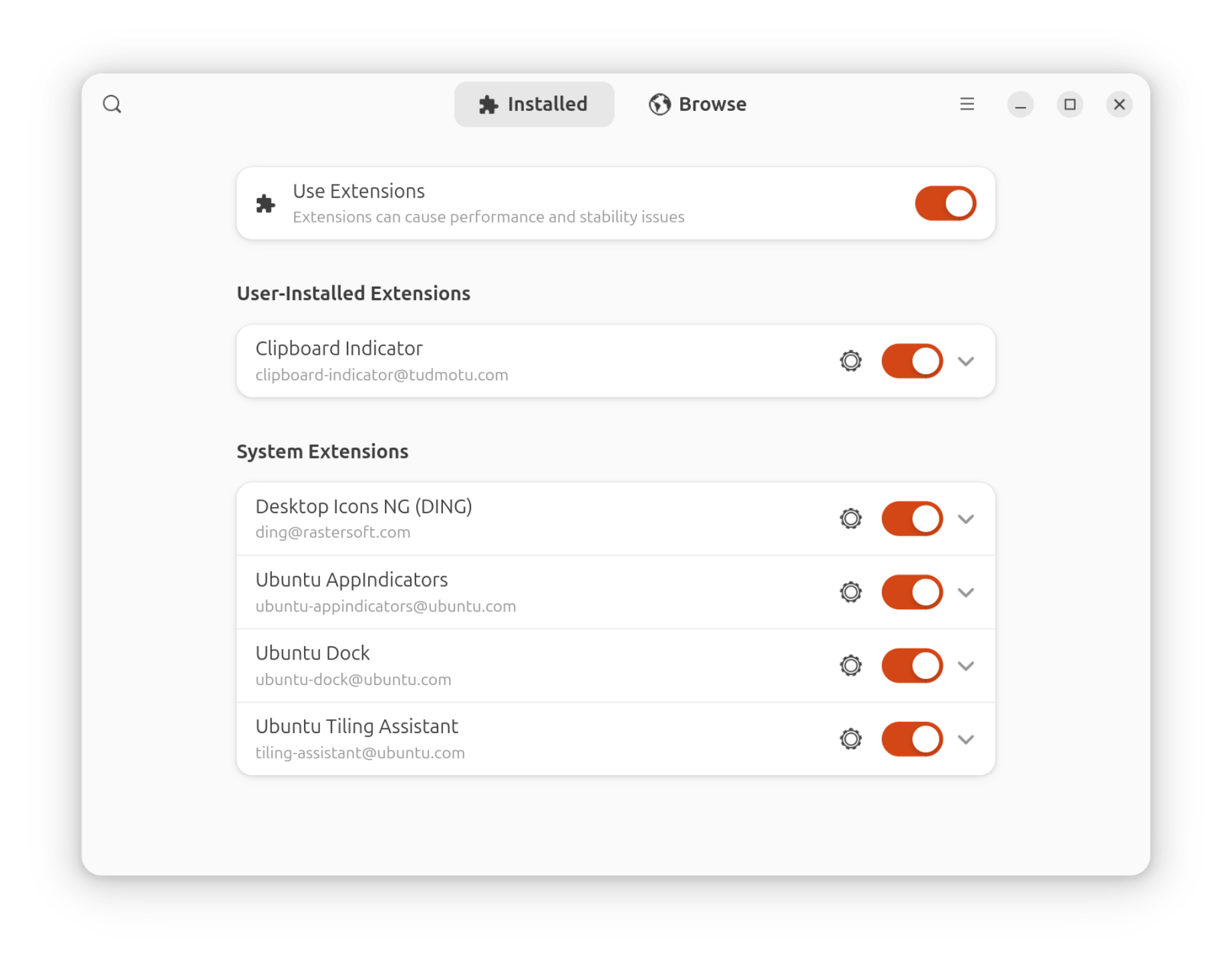
Ubuntu 25.04 uses the Gnome Desktop Environment, which gives us the dock (aka taskbar) on the left side, the look and feel of the windows and the status bar at the top of the screen which has the date, time and system tray.
There are third-party and first-party extensions for Gnome which give you extra options and functionality but you need to first install the Gnome Shell Extension Manager which you do by entering sudo apt install gnome-shell-extension-manager at the command prompt. I found this out through Googling Gnome shell extensions; it was presented to me as an option during install.
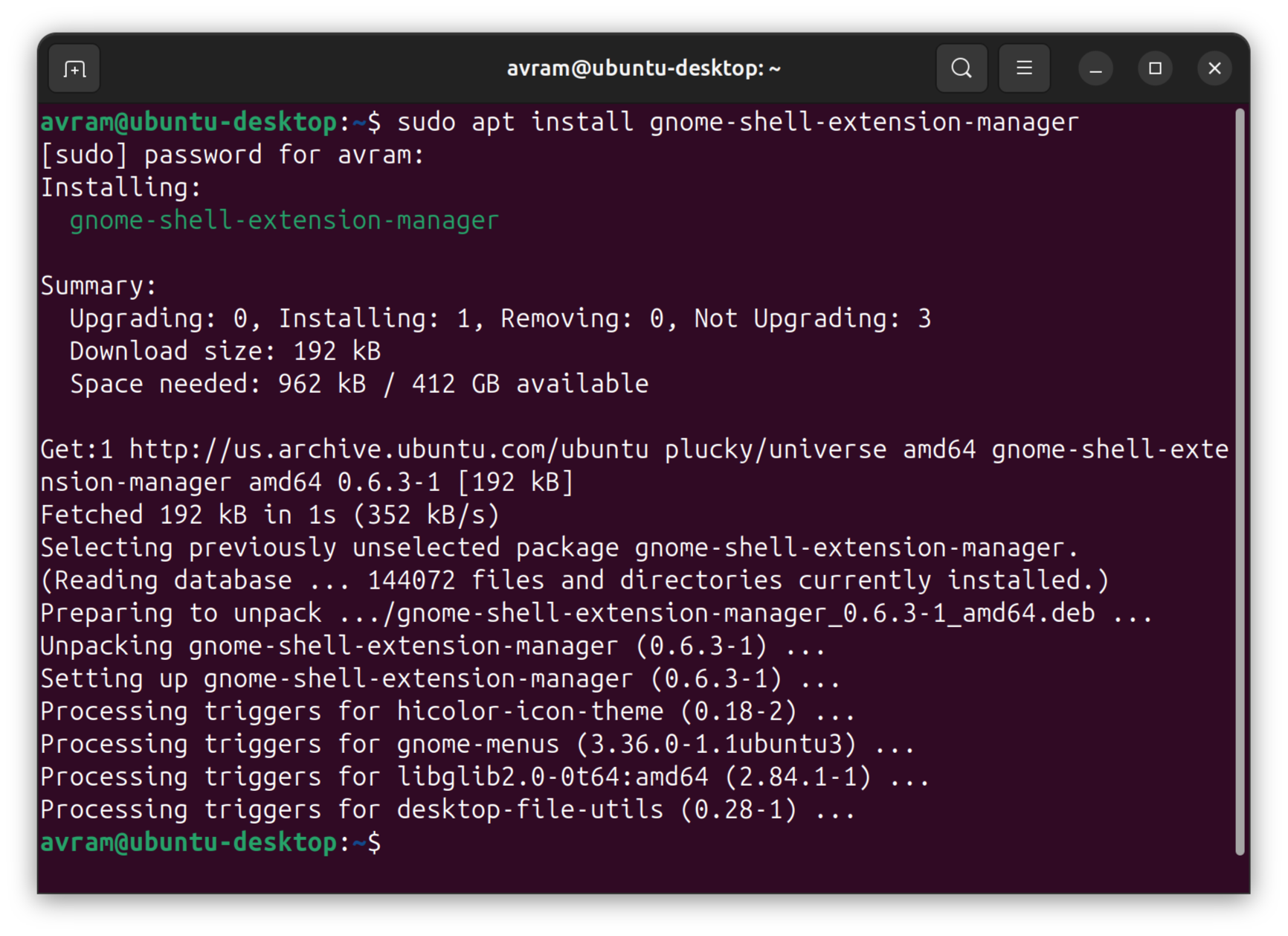
Once you have it installed, there are a few pre-existing system extensions that come preloaded. One of these is Ubuntu Dock, and if you hit the settings icon next to its listing, you get a window which lets you change some things about the appearance of the dock.
I changed the behavior that occurs when you click an icon for an open app in the dock so that it shows preview thumbnails of the windows rather than the default behavior which takes you to a separate screen with an "overview" of the windows.
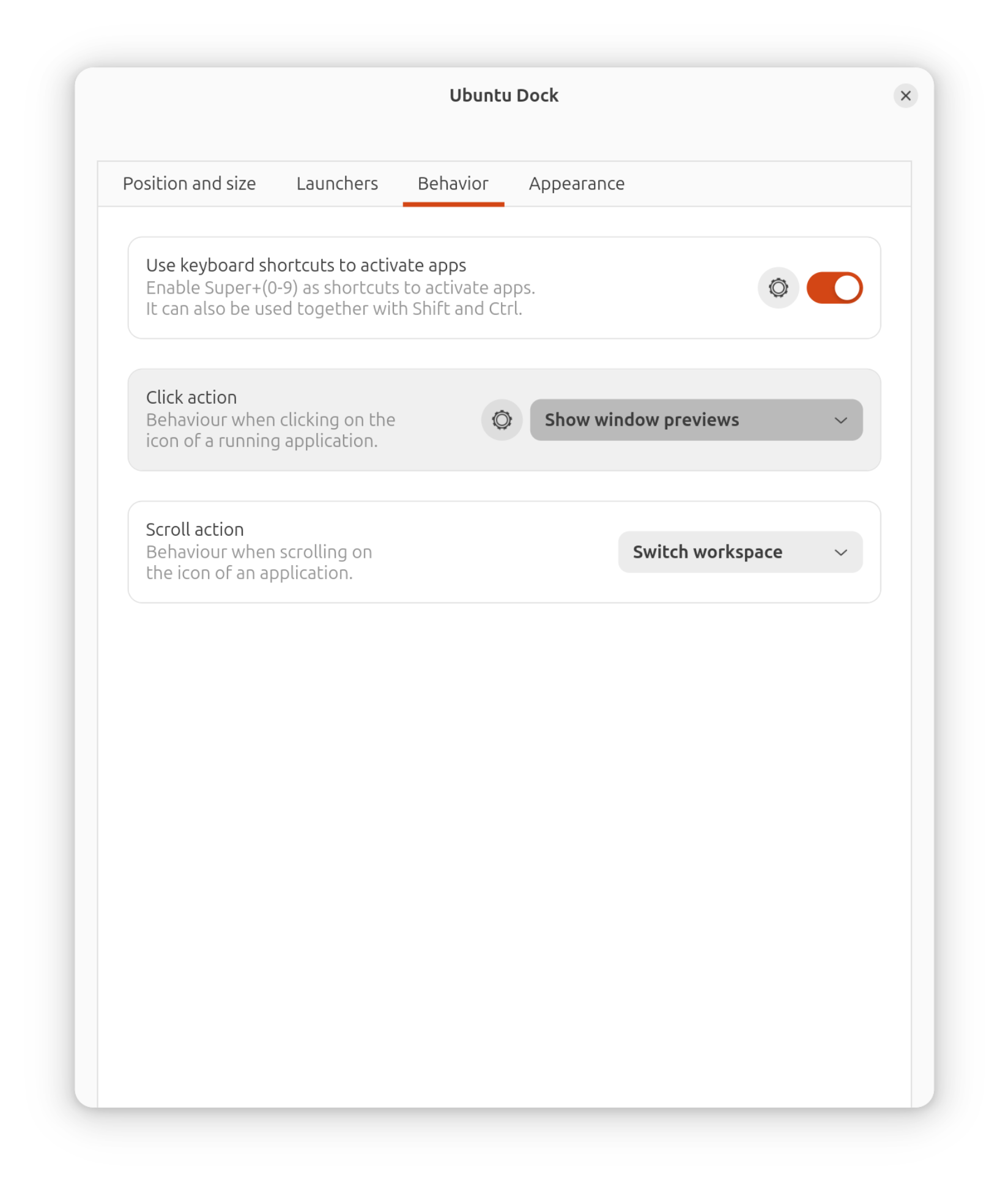
You can also install third-party extensions and I installed one for the clipboard, which keeps a clipboard history. It's called Clipboard Indicator and it puts an icon in the system tray that lets you see and navigate through everything you've copied.
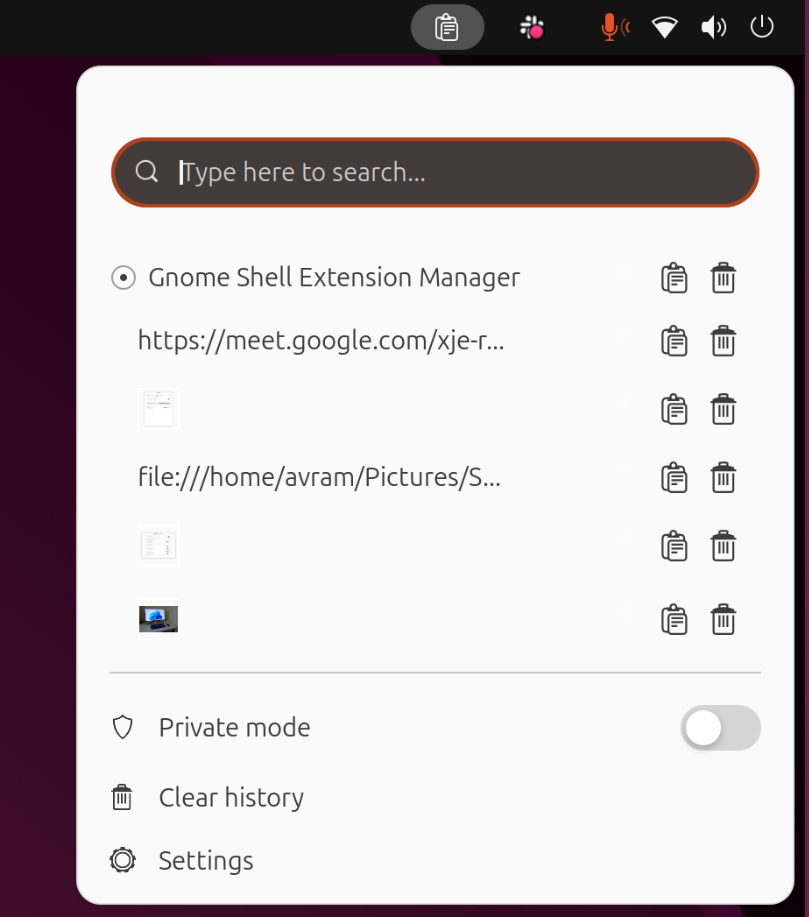
Windows 11 has a clipboard history feature built-in so this is a must-have for Ubuntu users.
What I still can't do
This is my third full day of running Linux and I spent most of the day actually working. Most of the things I work on are in the cloud and accessible via the Chrome browser. I spent a lot of time in Google docs, in Gmail and in our CMS.
Still, here are the things I can't do / haven't figured out:
- Use my Streamdeck Neo
- Control my phone from the desktop -- this appears to be doable in KDE desktop but not easily in Gnome desktop environment
- Set keyboard shortcuts to launch favorite apps -- I'd like to launch Chrome by hitting CTRL + ALT + C or something similar.
- Remap keys -- I want to turn my numpad into media keys or my Insert key into Print Screen, but I can't figure out how to make this happen
- Take screenshots with a built-in editor or timer -- The Ubuntu screenshot software is pretty good but not as good as PickPic, which I use in Windows. PickPic has a built-in editor that makes it easy to draw boxes around the parts of the shot I want to highlight. It also has a timer for delayed screenshots.
- Ungroup taskbar icons -- Not possible at least in Gnome
- Create keyboard macros like I do in AutoHotkey in Windows
If anyone has any suggestions, please leave a comment below.
GSConnect is the way to pair with your phone
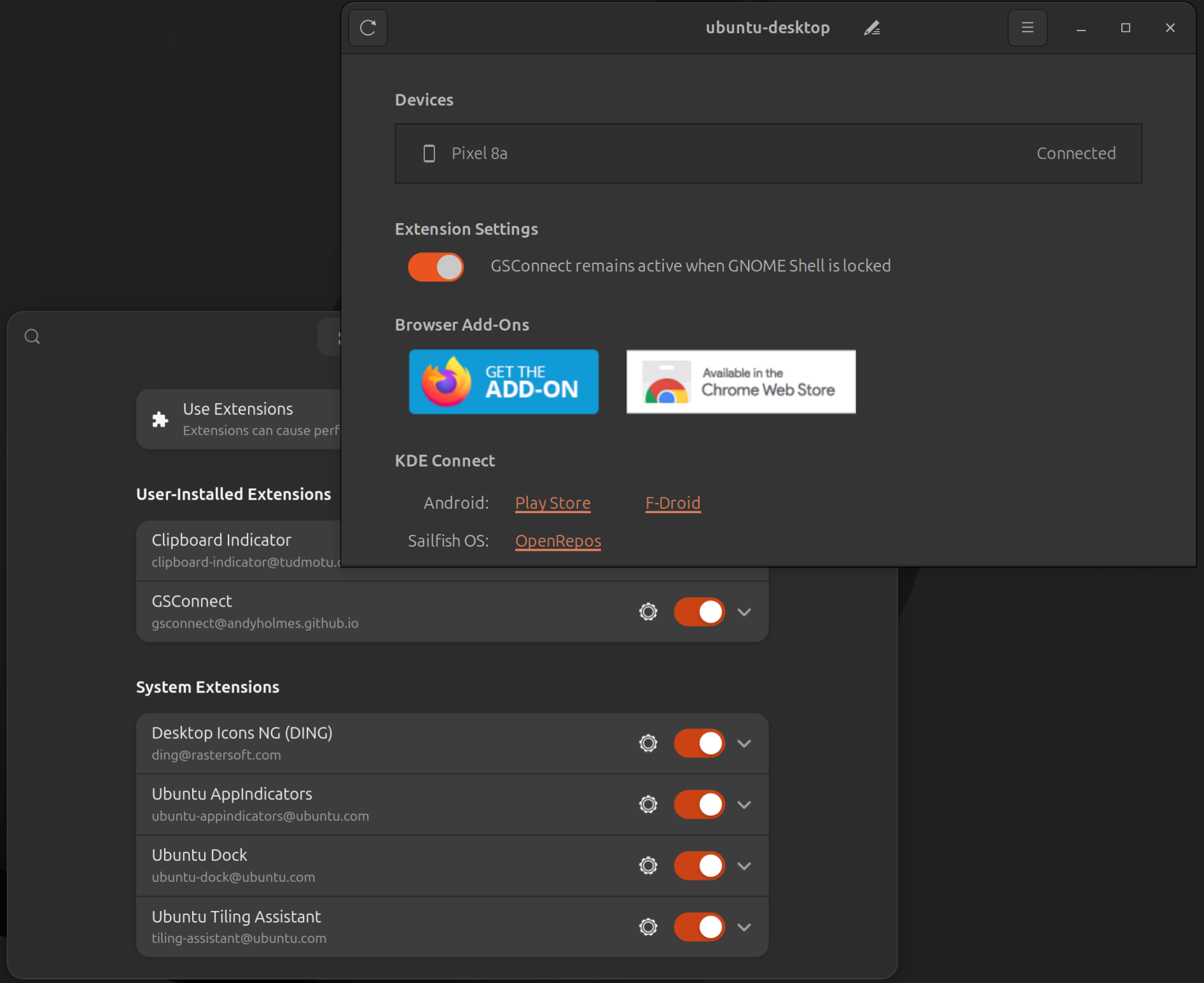
One problem I solved is how to get my Android phone to connect to my Ubuntu desktop so I can read and send SMS messages from the computer. Under Windows, there's a helpful Microsoft app called Phone Link that allows me to do this. On Ubuntu, there's nothing built in.
After doing some research, I discovered that there's a Gnome Shell Extension called GSConnect, which is a port of one for KDE-enabled Linux called KDE Connect. So I opened up the Gnome Shell Extension manager and went to the tab where you search for new extensions and found GSConnect.
Then, on my phone, I had to install the KDE Connect app. Pairing the two was a one-step process and it seems to work flawlessly. However, as is often the case, I had to figure out where in the desktop UI to go to get to something on Ubuntu.
It turns out that GSCconnect is under the Wi-Fi menu.
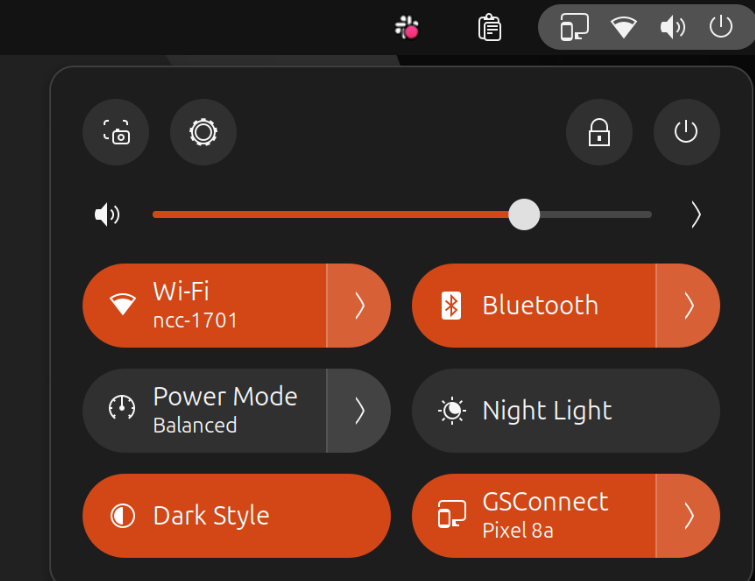
After clicking it there, I get a big menu with more choices, including the one I care about: messaging.
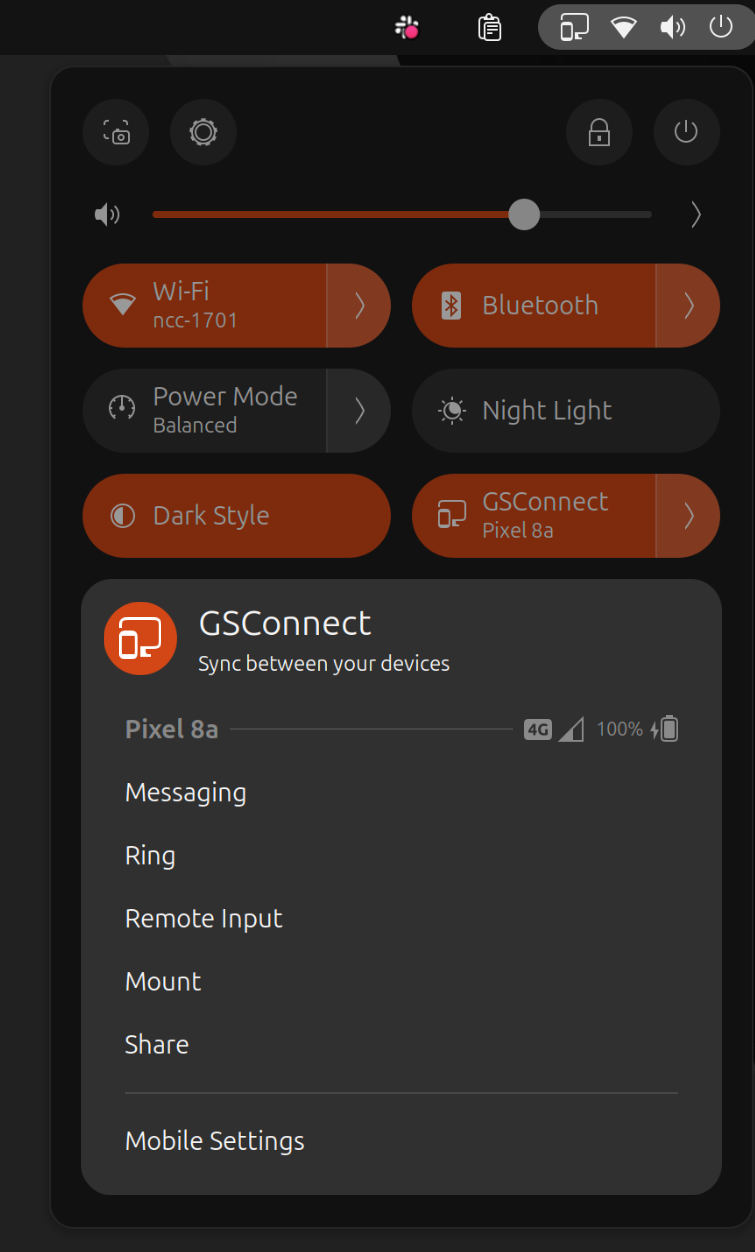
Then I get my SMS messaging box.
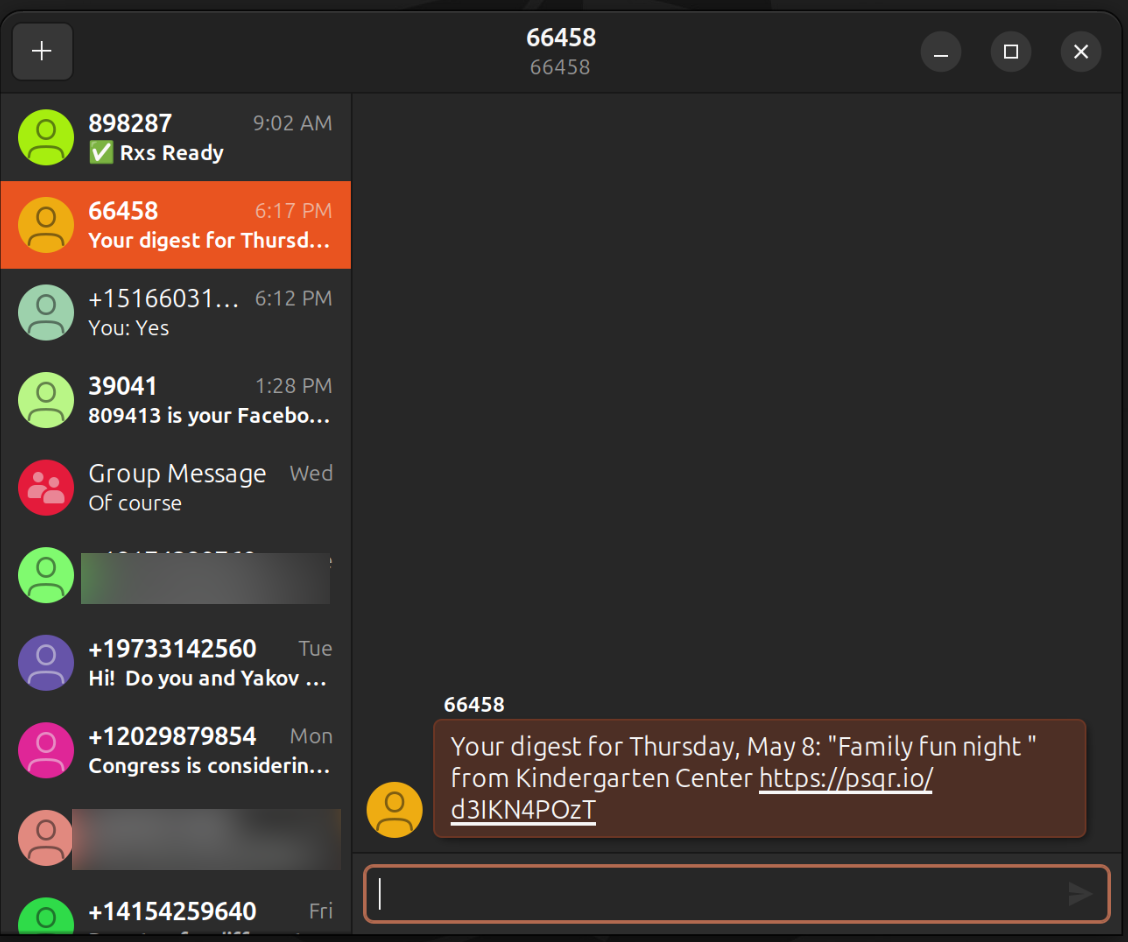
Creating keyboard shortcuts for apps is easy, if you know how
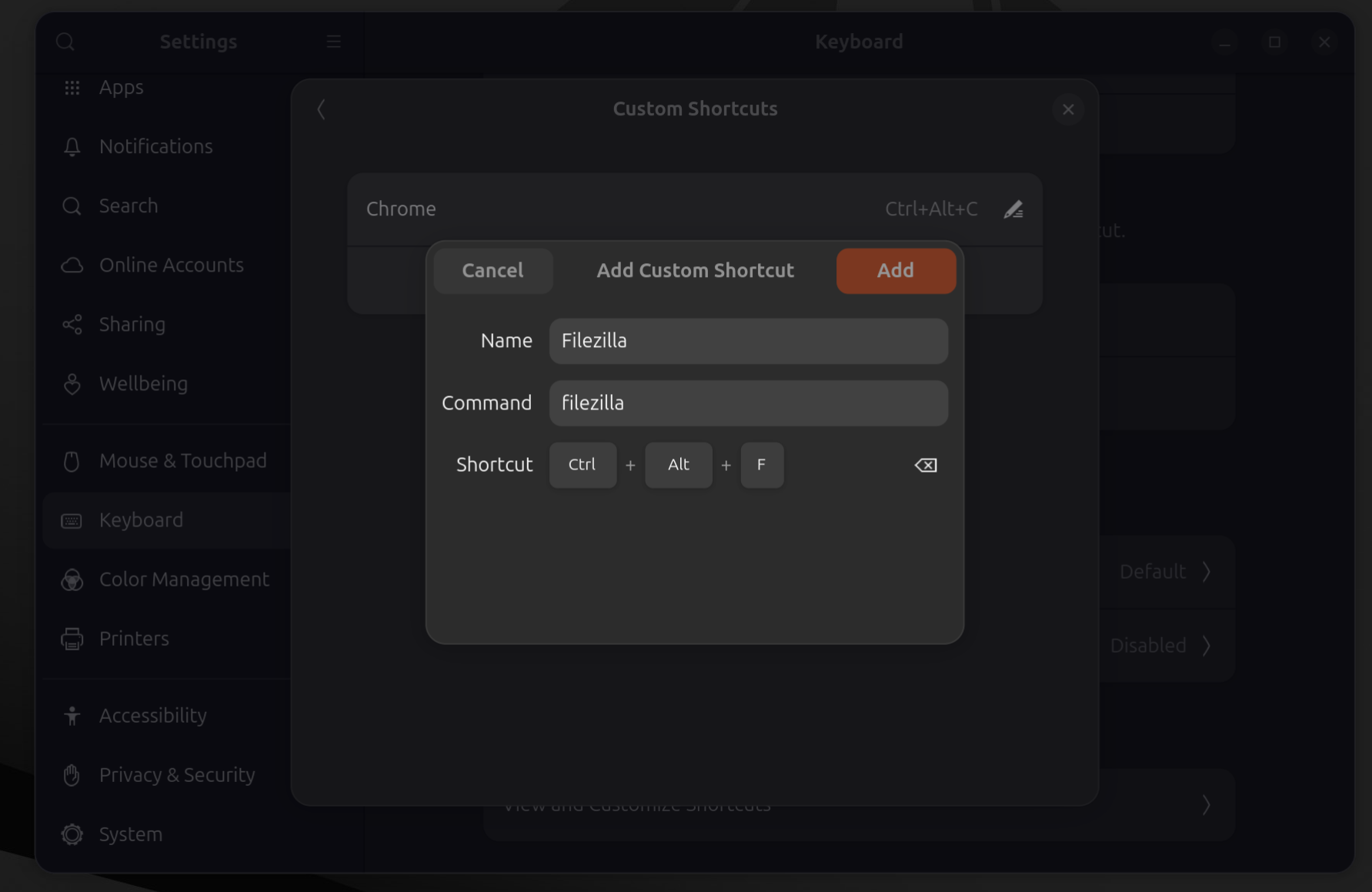
One of the things I couldn't figure out how to do right away with Ubuntu 25.04, I have now found out how to do: setting up keyboard shortcuts to launch my favorite apps. Here's how it's done.
1. Open Settings from the Ubuntu menu.
2. Navigate to Keyboard->View and Customize Shortcuts->Custom Shortcuts
3. Click +
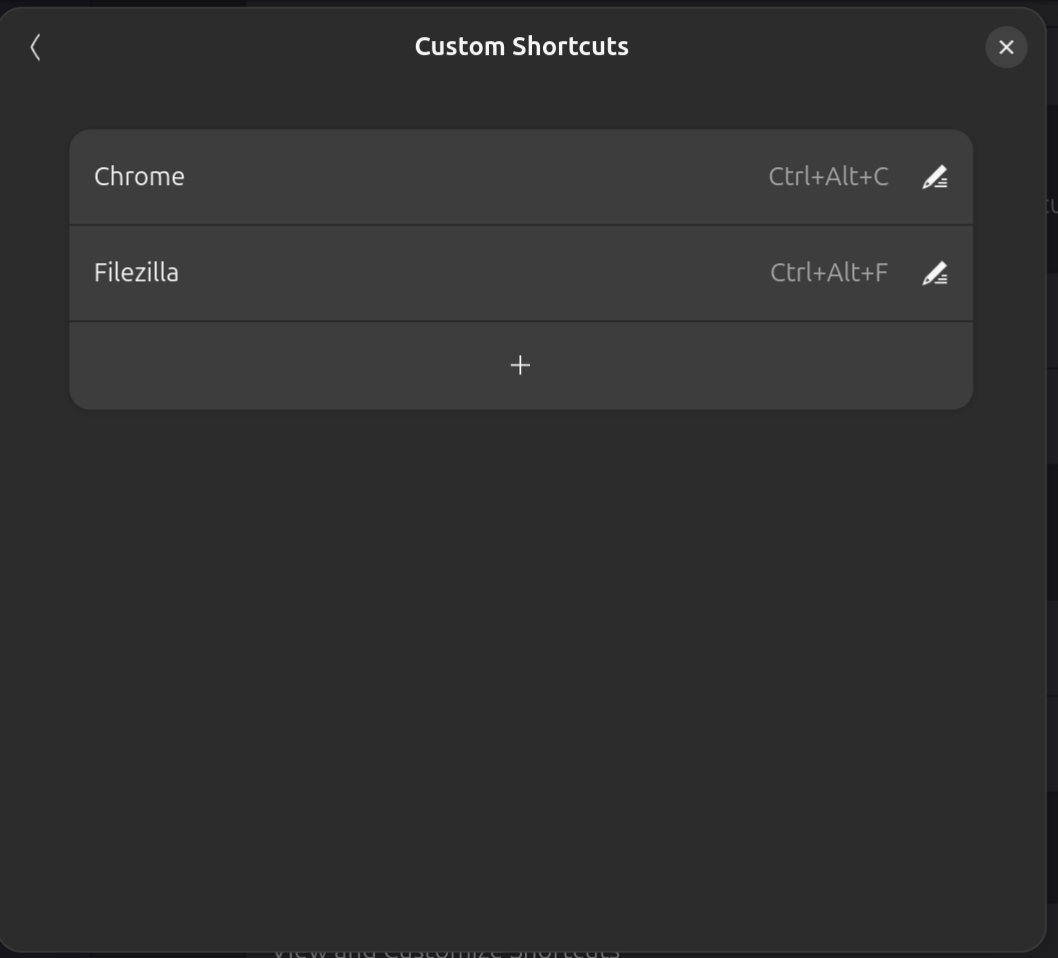
3. Enter a name for the shortcut, which could be anything.
4. Enter the command line command for launching the app
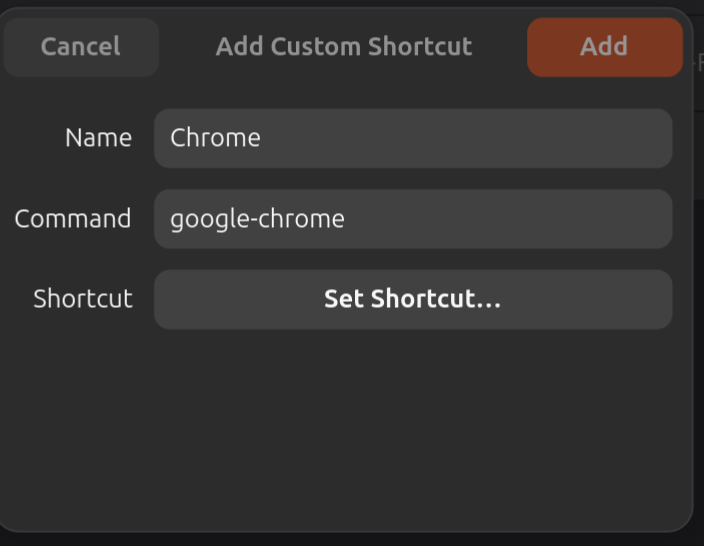
5. Click Set Shortcut and enter a key combo of your choice (ex: CTRL + ALT + C for Chrome)
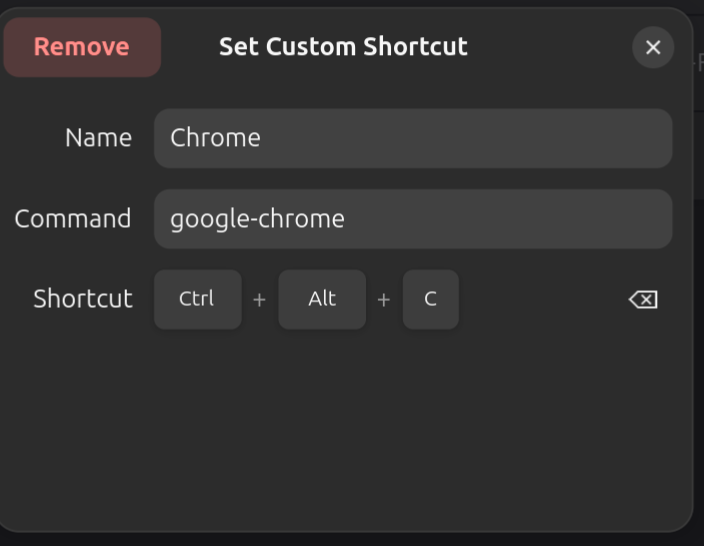
Remapping keys is possible and relatively easy
Besides creating keyboard shortcuts, I've wanted to be able to remap keys. I like to turn my numpad into media keys and make my insert key into a print screen key. This functionality isn't built into Ubuntu 25.04, but there's a good program called keyd that makes it possible.
To install keyd, I had to enter
sudo apt install git
sudo apt install gcc
sudo apt install make
git clone https://github.com/rvaiya/keyd
cd keyd
make && sudo make install
sudo systemctl enable --now keydThat gets the program installed but how do you configure it? You must create a text file called /etc/keyd/default.conf and the file should look something like this:

In the [main] section you set one key to be equal to another. So, in my case, kp5 = playpause turns the numpad 5 key into the playpause key. After you're done saving the file, enter sudo keyd reload to make it recognize the changes.
To see a list of possible key names type sudo keyd list-keys.
My laptop did not go to sleep
So I had closed the lid of my laptop Wednesday evening, thinking that it would go to sleep and eventually into hibernation so it doesn't use up the battery. That's what happens with this same laptop with Windows 11.
However, when I tried to power on the laptop on Saturday, nothing happened. It was completely out of battery, suggesting that the laptop never went to sleep or that it used up all of its battery by remaining in sleep mode and not going into hibernation (something Windows goes into after about 12 hours).
This morning, I plugged my laptop in and turned it on at the office and, indeed, it had lost all of its charge. So either the laptop never went to sleep, which I doubt because it had gone to sleep before, or it used up all of its charge while sleeping because it never went into hibernation. Either way, this is a very bad default setting for Ubuntu.
Getting a log of laptop sleep cycles
So it looks like my laptop did go to sleep but it never went into hibernate thereafter. I just looked up how to get a log of my computer's sleep cycles. What I had to do is type journalctl | grep systemd-sleep at the command prompt and read the bottom.
This is what I got.
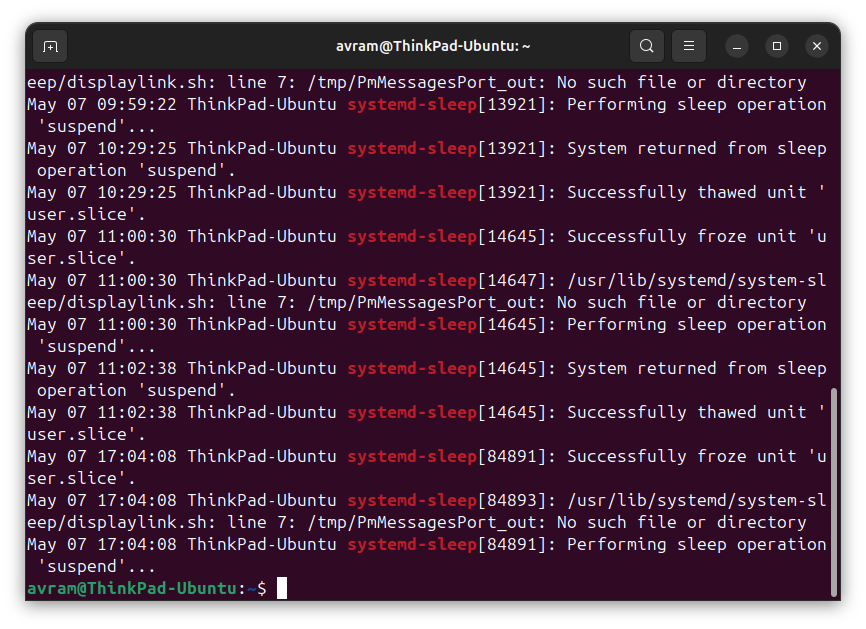
Notice that the computer went to sleep at 17:04 on Wednesday the 7th, which is the last time I had closed the lid. Presumably it ran out of juice at some time between that day and Saturday, when I attempted to turn the laptop on again.
Mission Center is the task manager you really need
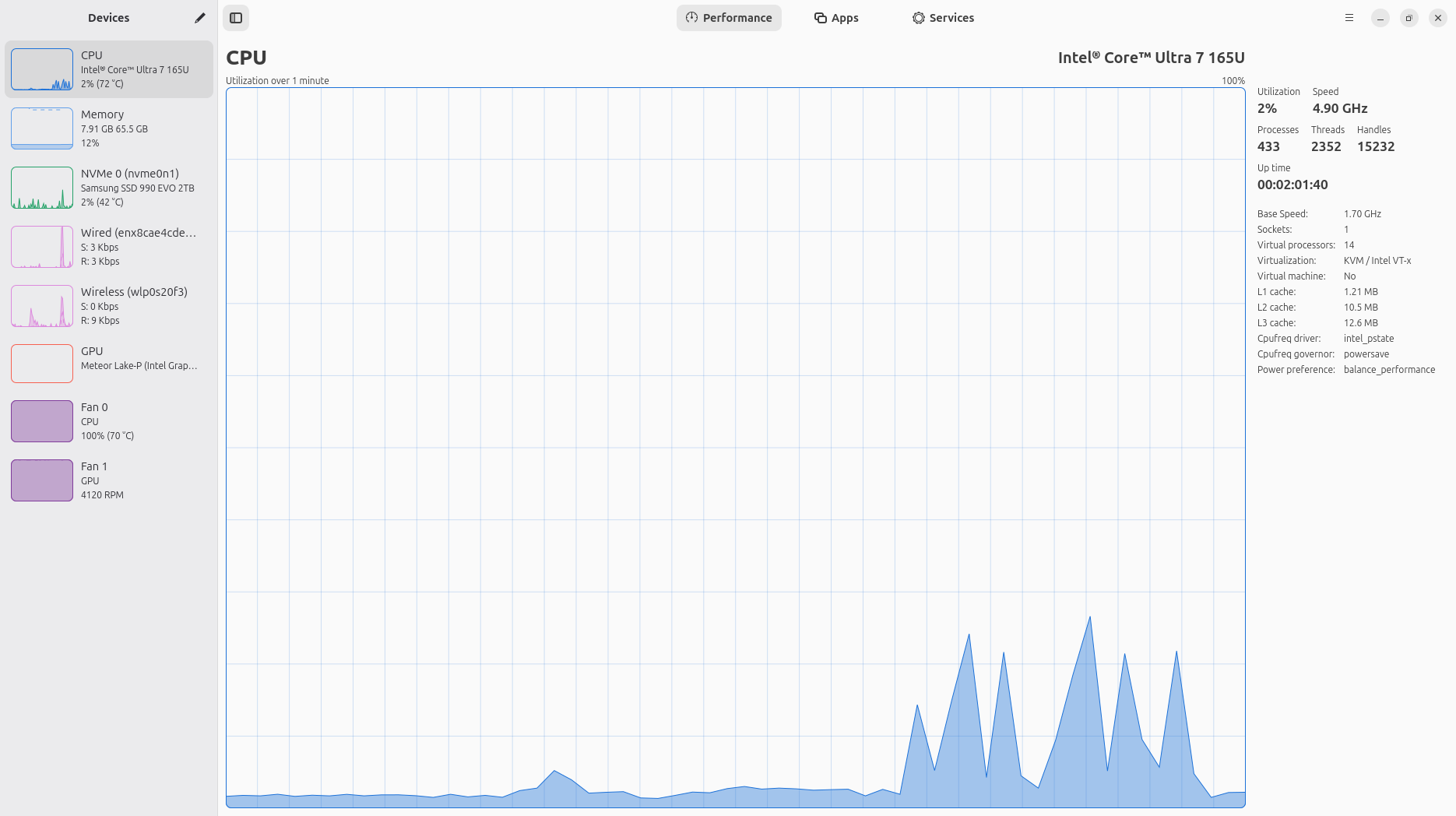
A few days ago, I was talking about Gnome System Monitor and how it takes the place that Task Manager occupies in Windows. However, Gnome System Monitor just isn't as good as Task Manager. It looks a little bit low-rent in comparison to Microsoft's offering.

The other problem with Gnome System Monitor is that it shows the apps and processes all together in one giant list. What if I just want to kill Chrome because it's stuck? There are like 20 different processes listed here.
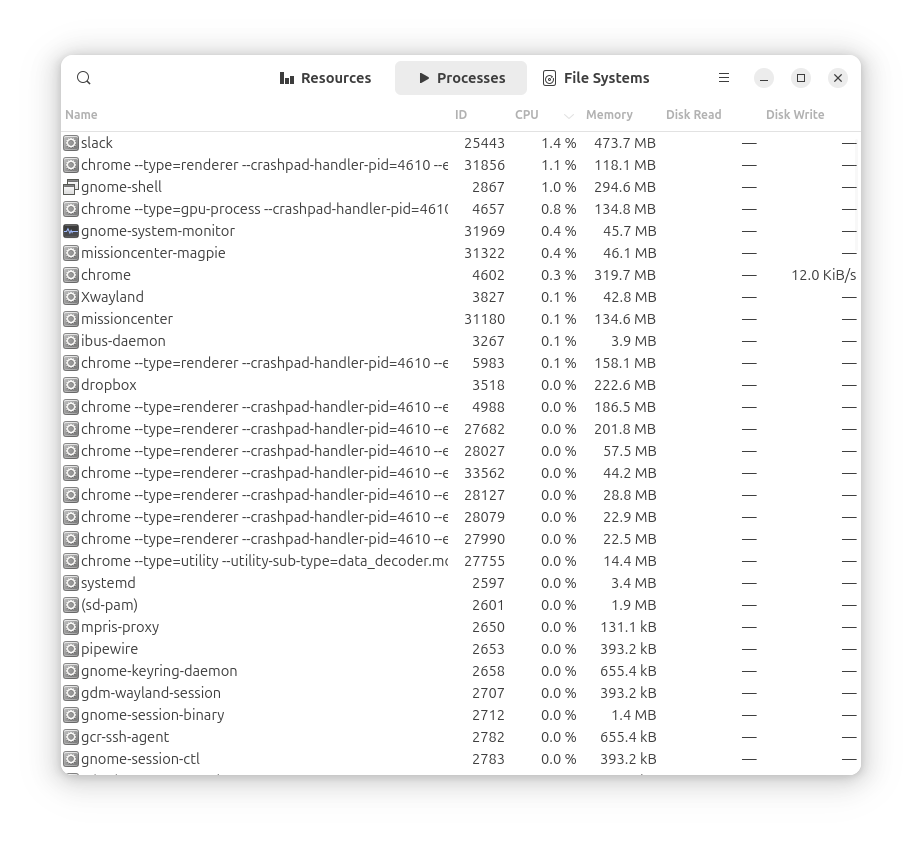
But Mission Center shows apps and processes separately, allowing you to kill just what you need to kill.

Want to learn more about Mission Center? Check out our Mission Center article.
Trying KDE enivronment
I'm getting bored of the default, Gnome environment for Ubuntu and I'm trying to switch to the KDE desktop environment to see if it's better. Here's what the default, Gnome environment looks like with its taskbar off to the left side.
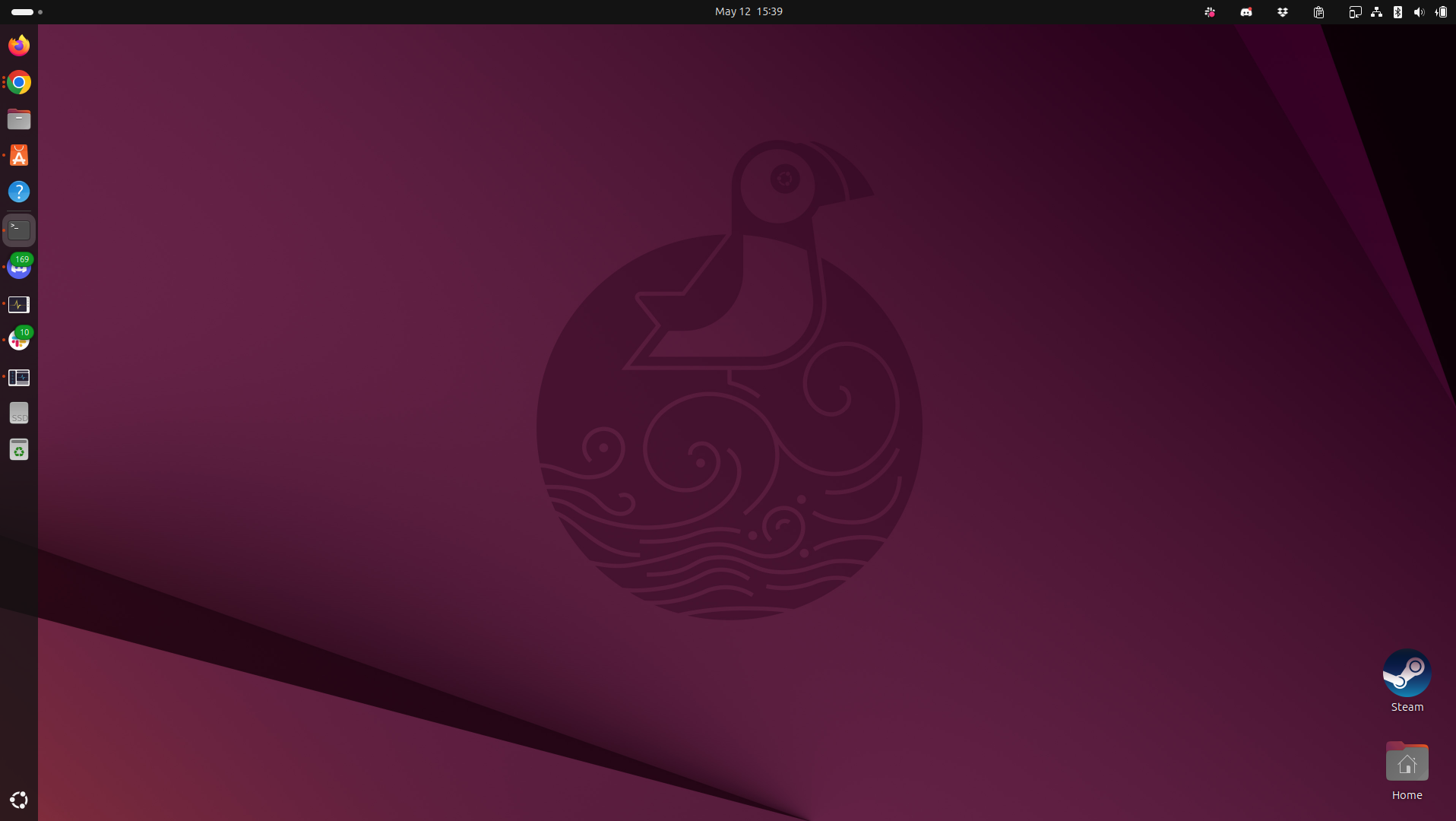
Right now, I'm in the process of trying to intall Kubuntu Desktop to see if that works. I may need to do a complete reinstall of the OS, which I'd rather avoid at this point.
Kubuntu Desktop looks good
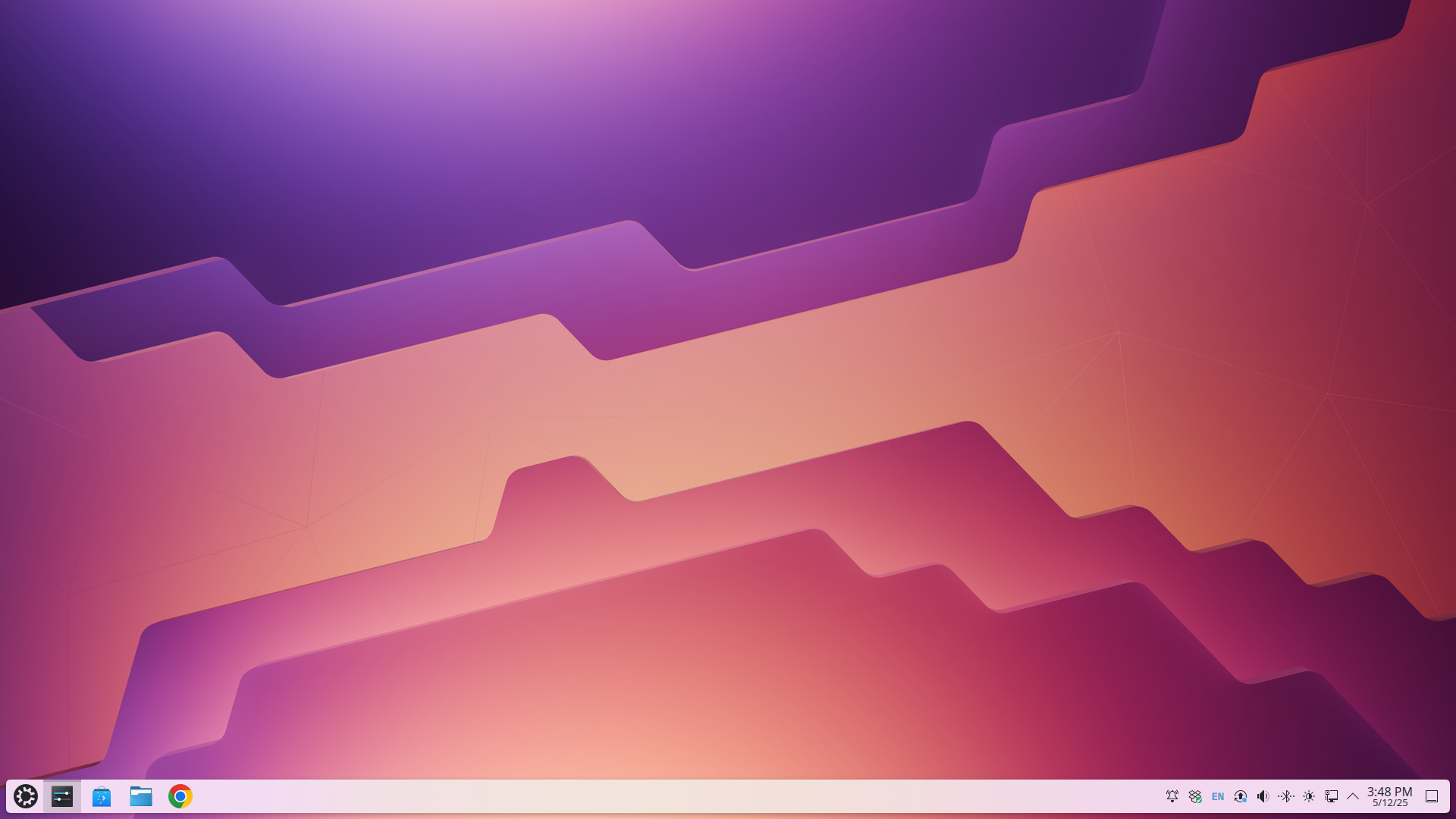
So far so good with Kubuntu Desktop, the other leading desktop environment for Ubuntu. I simply did sudo apt install kubuntu-desktop to install it and then I removed the components of the Gnome desktop using sudo apt remove ubuntu-desktop gnome-shell && sudo apt autoremove as I saw mentioned on Reddit.
However, I am getting a few error messages, which suggests that doing a clean install of Kubuntu might have been a good idea. But then I'd have to reinstall all of my apps, something I don't want to do.
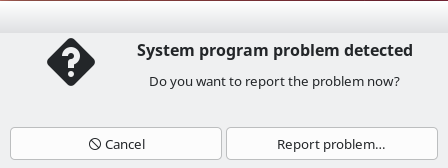
So far, I like this KDE desktop better because it feels more like Windows 11 or Windows 10. There's a Start menu and a taskbar at the bottom of the screen. The Start menu pops up as a small box, rather than taking over the whole screen like the Gnome menu did.
The system tray is also properly placed in the lower right corner of the screen.
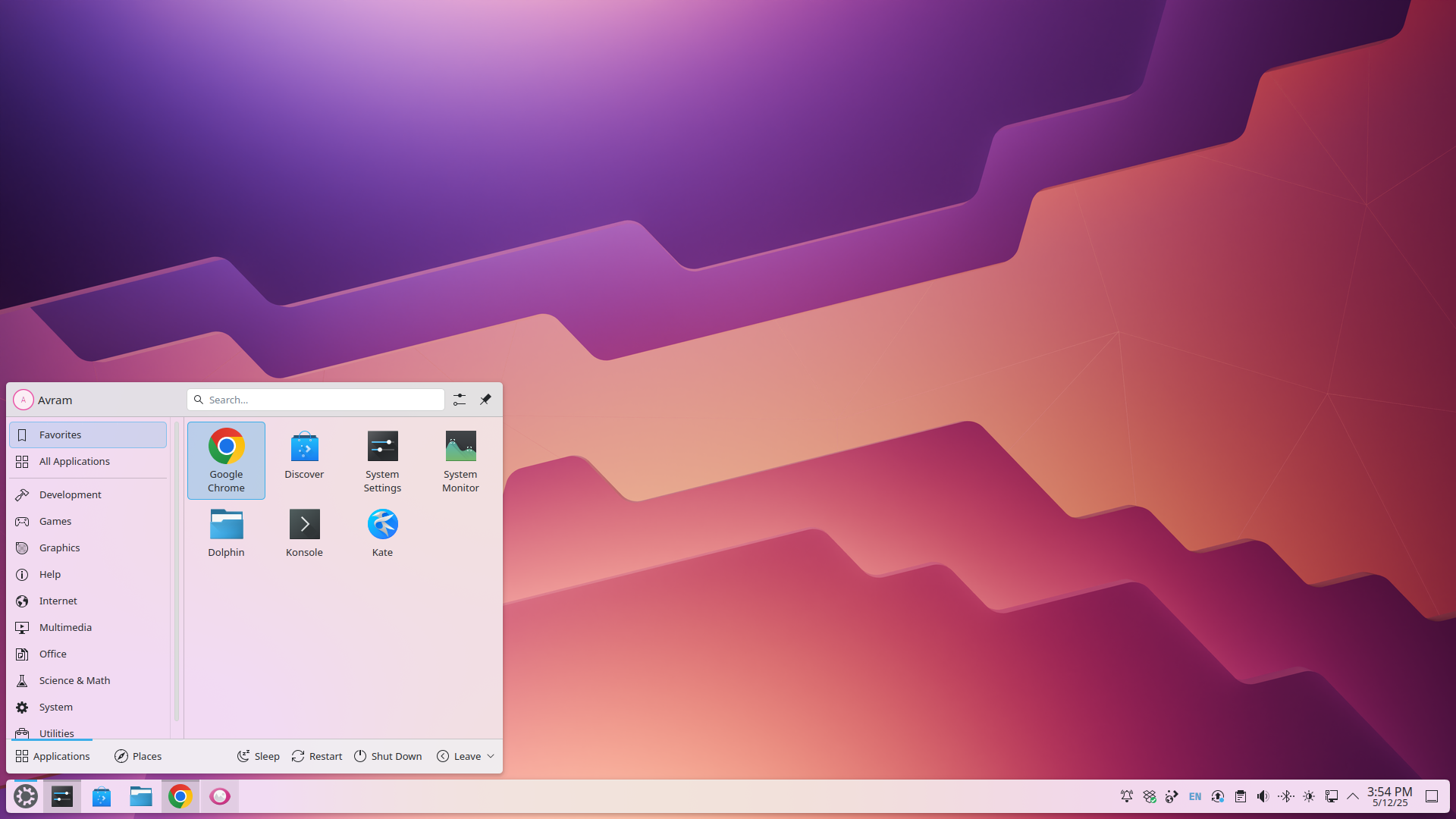
KDE Connect Error
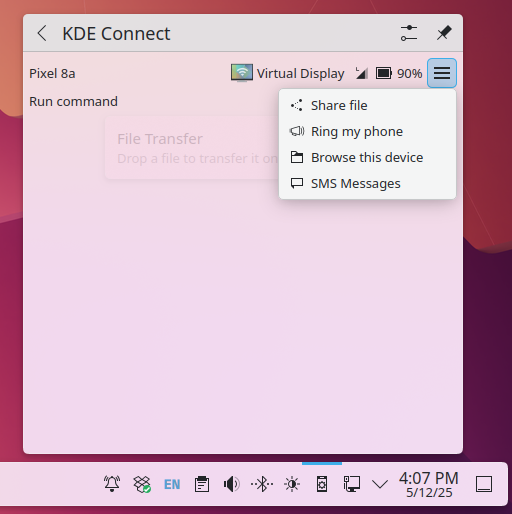
So it seems that transitioning from Gnome to KDE broke my smartphone program. I use KDE Connect, which on Gnome is called GSConnect. I had to re-pair the phone under KDE and that seemed to work ok. However, When I try to connect to the SMS messages part of KDE connect, nothing happens.
Boatswain gives me some access to Streamdeck, but not enough
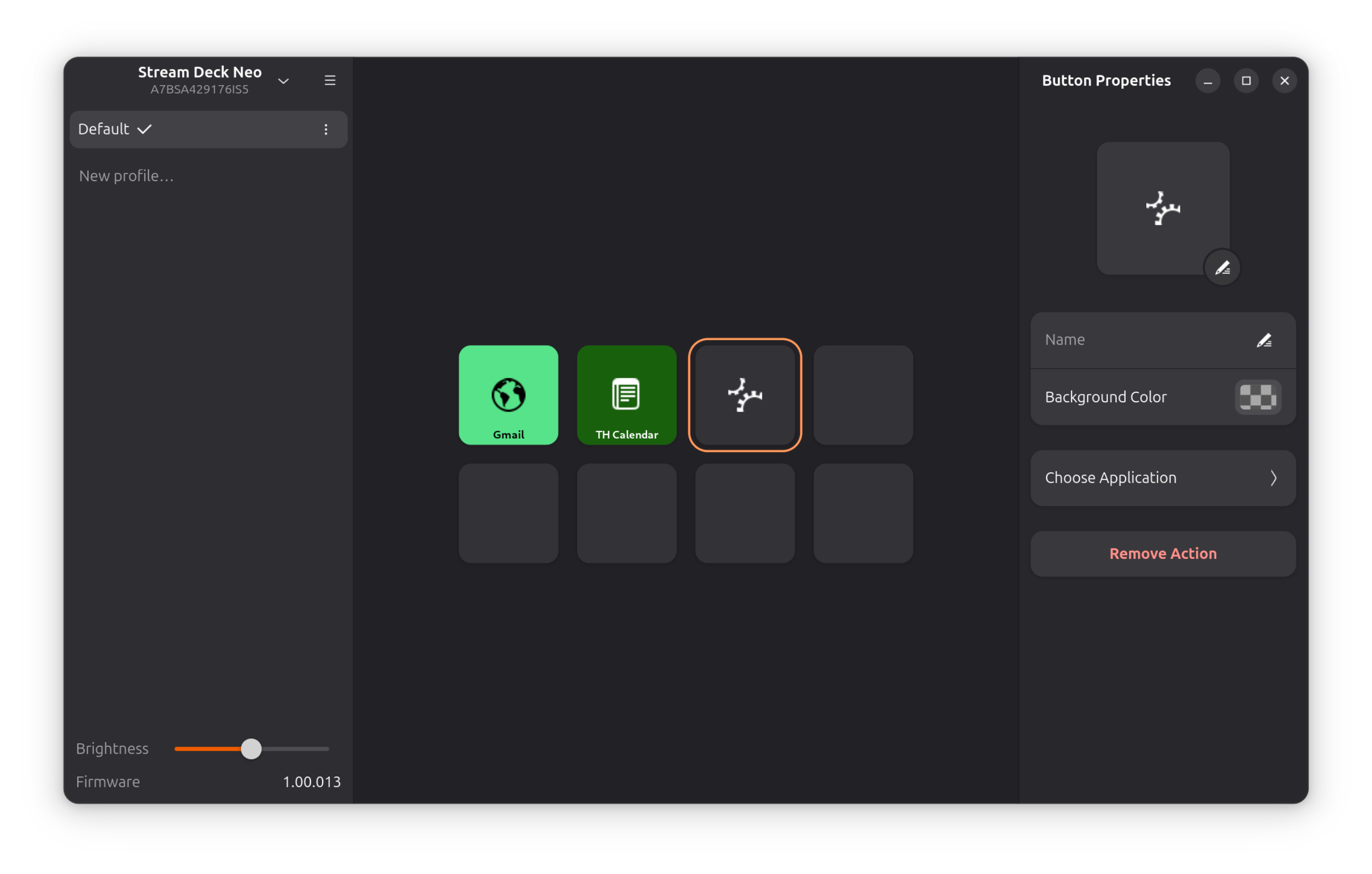
Based on a recommendation from the forum, I tried Boatswain, an app which lets you control and program your Streamdeck keypad from within Linux. This is needed because I have a Streamdeck Neo but Elgato doesn't make a Linux version of its app.
Boatswain appears to work as it lets you assign apps, URLs and other actions to the keys on your stream deck, but it appears to have some serious problems. First, when I tried to get it to launch Google Chrome browser from a key, I discovered that the menu of available apps only shows Boatswain itself and some help files, not any of the apps I have installed.
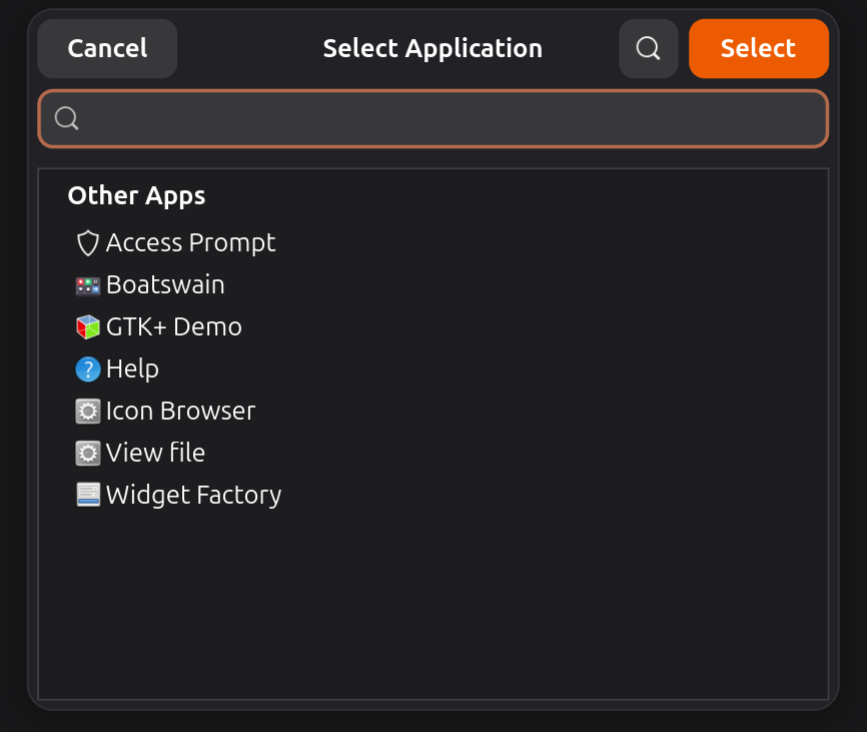
So I couldn't have keys set to launch any of the apps I wanted. Also, it doesn't appear to allow you to pick or create custom icons for the keys. There's a small list of monochrome icons you can choose from, but if you wanted to -- as I've done in Windows -- put an actual Gmail icon on your launch Gmail button, you can't. Instead I ended up with a Globe icon.
As is often the case with Windows, someone has taken it upon themselves to make up for the lack of official hardware support. But what's really needed is for companies like Elgato (owned by Corsair) to step up and make Linux versions of their software.
StreamController is better than Boatswain for Stream Deck stuff
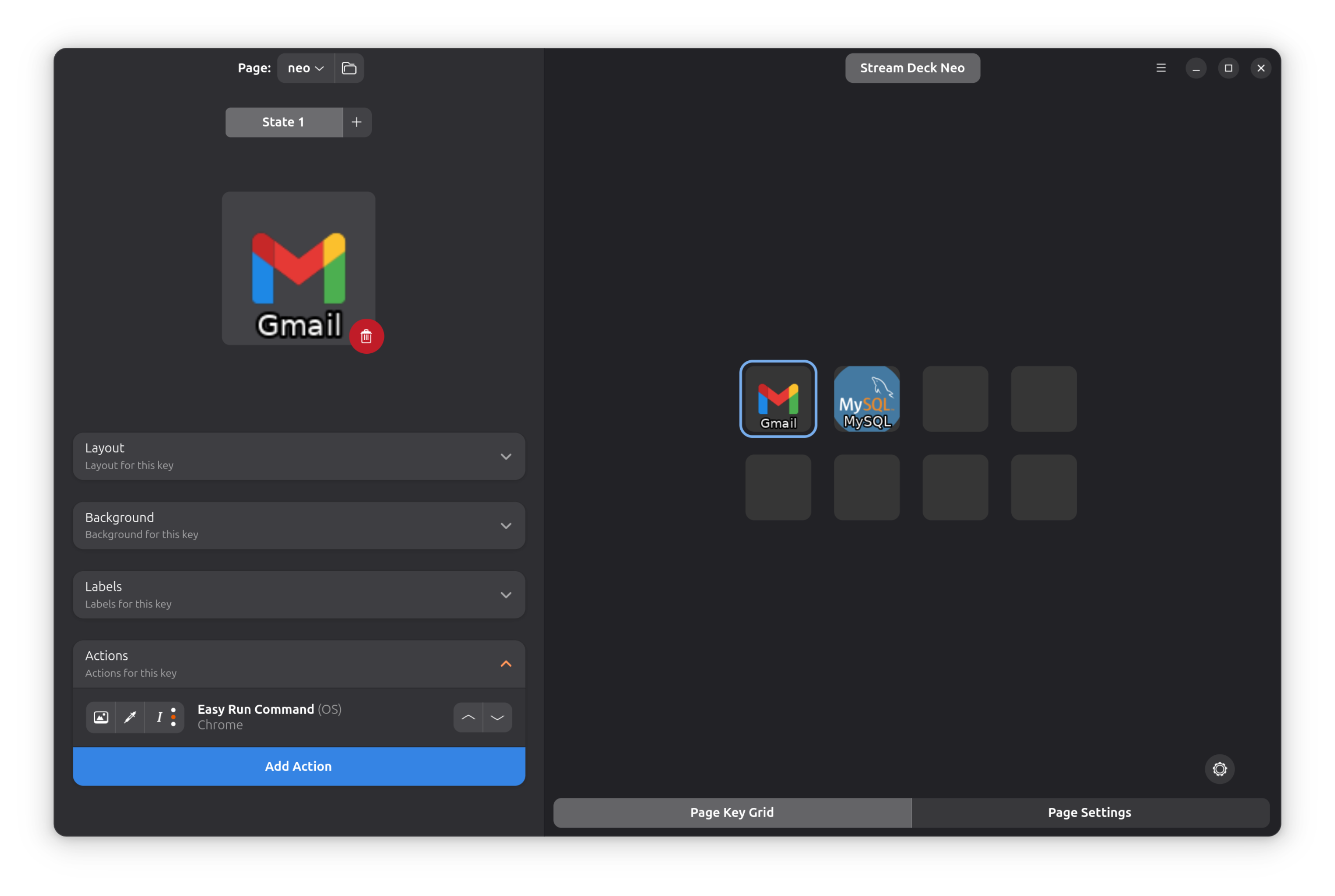
Thanks to some help from a forum member, I found a better app for configuring and controlling my Stream Deck Neo. It's called StreamController and it has what Boatswain, the other app I tried to do this with, lacks. It allows you to enter custom commands for each key on the Streamdeck so, as long as you know what the command line command is for your favorite app, you can enter it.
Another big improvement over Boatswain is that it allows you to use any PNG file you want as a custom background wallpaper for a key. So, I wanted to have a key that launches my Gmail inbox and I made it use the command google-chrome https://mail.google.com/mail/u/1/#inbox to launch it.
There's no option to launch websites, but the workaround is to just but the command to launch your browser (in my case, google-chrome) in front of whatever URL you wish to launch. Then I downloaded a Gmail Icon as a PNG and used that as my wallpaper for the key.
I wish this process were a little more seamless and you could get a menu of preinstalled apps to choose from or a dialog box that let you put in the website you want. But this is a process that works and, for that, I am thankful. Kudos to the makers of StreamController and shame on Elgato for not having a native Linux version of the Stream Deck app.
This still isn't working
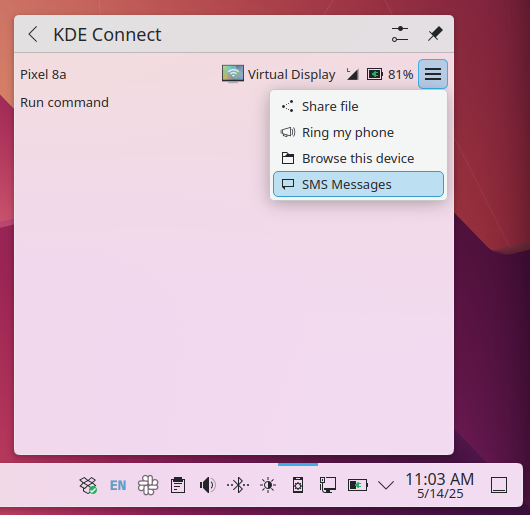
I uninstalled and reinstalled KDE Connect but the SMS messages part of the app still does nothing. Literally nothing happens when I try to activate it. This is a major downer, because I really want to be able to send SMS messages from my desktop and I was able to do it before I switched from Gnome to KDE Plasma.
No AutoHotKey for Linux?
One of my favorite Windows programs is AutoHotKey, which lets you assign macros to any keyboard combo. I write AHK macros that select menu items you can't get to with a hotkey in Google Docs or in Photoshop Elements or elsewhere.
Linux doesn't have AutoHotKey, but it does have a compatible app called AHK_X11. However, you need a version of Linux that uses X11 window manager. The latest Ubuntu (and other apps) use Wayland instead of X11. So that won't work.
Reinstalling Kubuntu Fixed some issues
So I did a clean install of Kubuntu, which I like better than regular Ubuntu, on my laptop and afterwards I was able to use KDE Connect with SMS messages, a problem I had before. Now I have to reinstall all my apps to get the laptop going again.
As I type this on my desktop, I'm using Ubuntu (not Kubuntu) and all is working pretty well, but I'm trying to find a good, free PDF editor where I can enter text on a medical form I have to fill out. I've tried five different editors and all seem to have issues that make it difficult or impossible to put text on top of the form. Very lame. Any suggestions?
Xournal++ is the PDF Editing App to Use
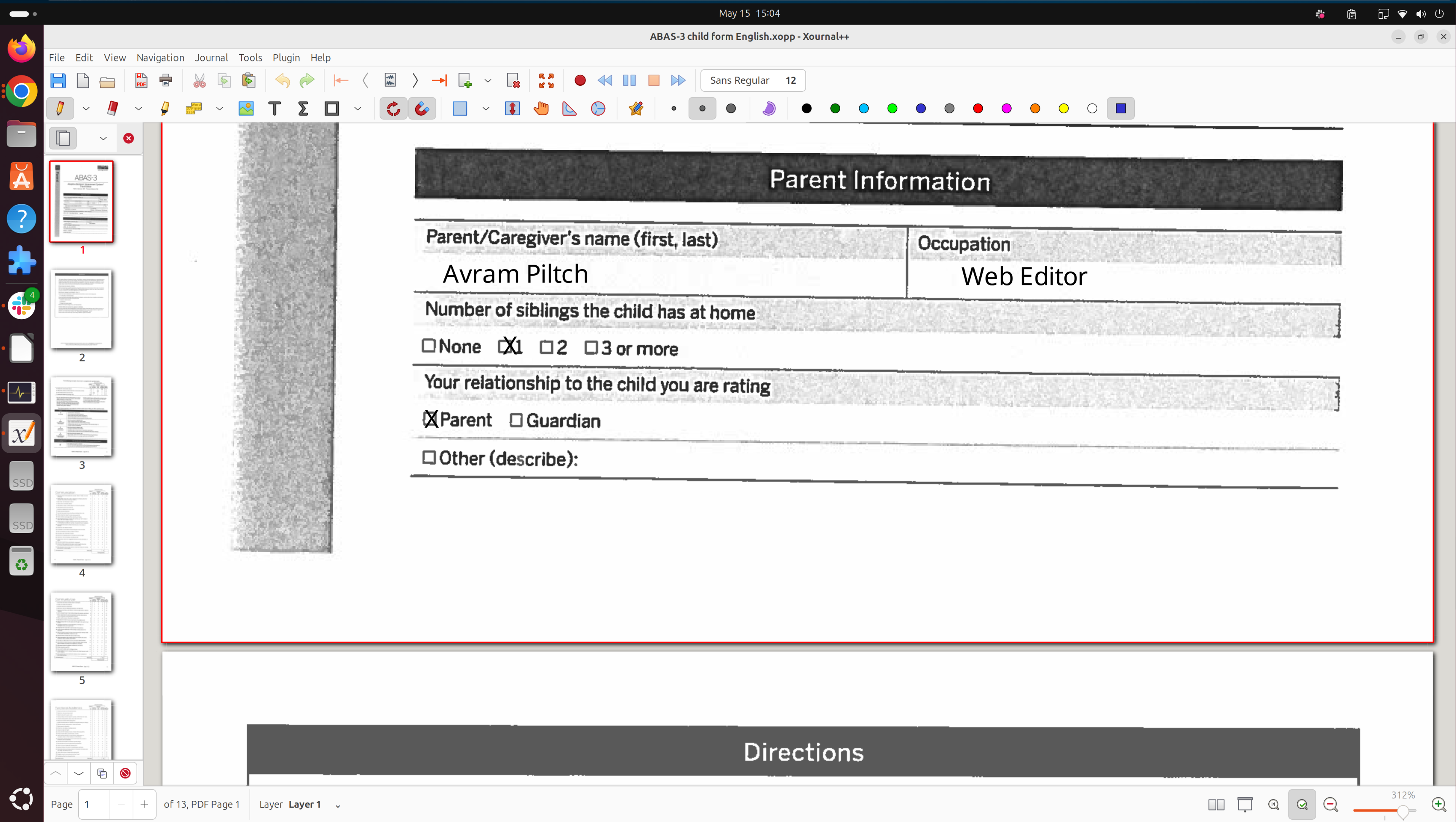
So I have some medical forms I need to fill out that were sent to me as PDFs. I need to fill in my name, personal info and answer some questions on these forms, which look like scans of old paper documents.
In Windows, it's difficult enough to fill out such forms because it seems like most PDF editors want you to pay or are trial versions that eventually want you to pay for them. All I want to do is type letters onto the lines and put the letter X in some checkboxes then save or print.
I found a helpful article on PDF editors for Linux and I tried the first four on the list with varying levels of success. Some of them insisted on treating the scans in the PDF as an image and every time i clicked on the form, it would move or resize the boxes and words as if I were shrinking or growing a picture when all I wanted to do was insert text at a certain position. Others made me draw a box before inserting text when all I wanted to do was click on an area and start typing.
The simplest tool I found was note-taking app Xournal++, which is made for writing notes, not necessarily for PDF editing. However, it opens PDFs and lets you type on them and then save them. If you want to save them as PDFs, you have to Export rather than save which is annoying. However, this tool seems to work really well and is convenient so I'm using it and recommend it.
To install, all you need to do is type sudo apt install xournalapp.
A week plus with Linux: What I learned
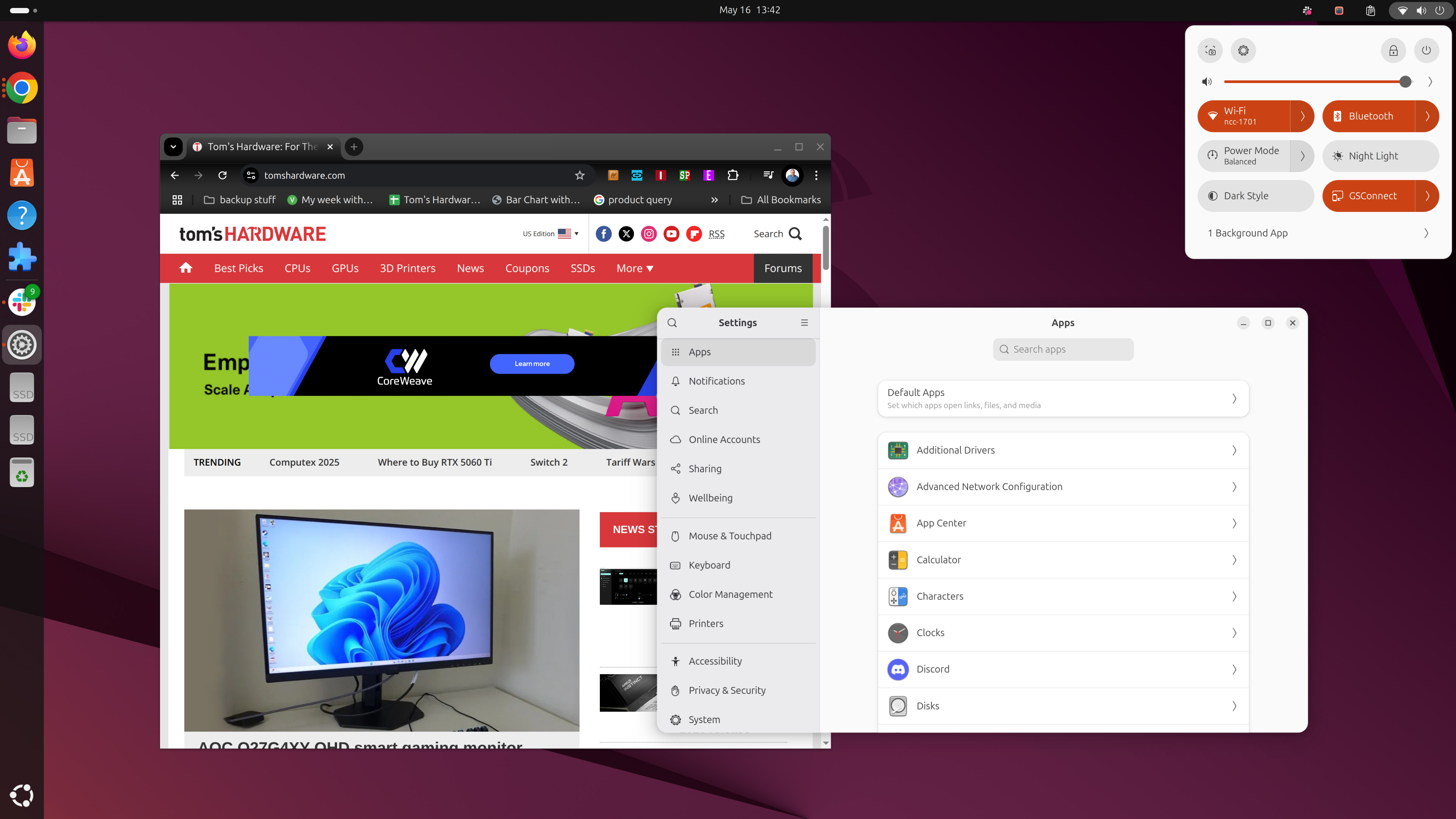
It has now been more than 10 days since I started using Linux as my main desktop OS on my laptop and desktop, both at work and at home. I've used the operating system as I've gone about my daily work and other regular tasks. On my home desktop, I've been running Ubuntu 25.04 the entire time and, on my laptop, I changed to Kubuntu 25.04, which is nearly the same OS but uses KDE instead of Gnome as its desktop environment.
Here's what I've learned:
- Most tasks are possible in Linux: Almost everything I tried I was able to eventually get to work in Linux, with a few noteworthy exceptions.
- Hardware support is the Achilles Heel of Linux: Lots of peripherals work, but don't have fully support in Linux. For example, my Logitech MX Master 3S mouse works in Linux but Logitech's software, Logi+ isn't made for Linux. So I can't do things like change the DPI or customize what the buttons do in Linux. There's unofficial community software that can do some of this, but the unofficial software just is not as good.
For example, StreamController allowed me to configure my Stream Deck Neo, but it's not nearly as easy-to-use or powerful as Elgato's own Stream Deck software. Shame on all the peripheral vendors who don't offer Linux versions of their apps. - Community versions of software are a mixed blessing: There are community versions -- apps made by independent developers -- that fill the gap where first-party software lacks Linux versions. However, these are often made by volunteers who have other things to do and don't have the kind of insight that would come from being part of the original hardware or software team. For example, AutoHotKey, a major macro app for Windows, is not available for Linux at all. There's a community version called AHK_X11 but it still hasn't been updated to work with the latest versions of Ubuntu, the most popular Linux flavor, because it's incompatible with the Wayland window manager that Ubuntu uses.
- Too many ways to install software: There are way too many competing ways to install software and this can be confusing. Some apps are best installed via Ubuntu's AppCenter, but more are available by using sudo apt-get install at the command line. Still others require the FlatPak utility to install while others have downloadable install files. Still other apps require you to compile them in order to get them to work. Some apps (example: GSConnect phone controller) even exist as Gnome Shell Extensions The lack of consistent ways to install software is a real problem for anyone who doesn't have the patience and experience to deal with all these possibilities.
- Changing Desktop managers is too much work: Changing from Gnome to KDE was a fair amount of work and broke some software. This should be easy and not require you to reinstall the OS.
- KDE is better than Gnome: I recommend that folks who want to try Linux use Kubuntu rather than Ubuntu. The KDE environment is way better than Gnome as it has a full-featured start menu and a real Windows-like taskbar and system tray.
Here's what I have and have not been able to run:
- Browser: Got my Google Chrome browser installed and it worked flawlessly with all of my extensions on board. It's a shame, though, that it's not in the AppCenter and has to be downloaded manually from Google.com.
- Slack: There's a perfect first-party version of Slack that works flawlessly.
- Discord: Also worked flawlessly.
- Filezilla: Everyone's favorite FTP and SFTP client is available and works great.
- Photoshop Elements: I couldn't even attempt to use this in Linux. Though an emulator like WINE might have made it possible, I couldn't have been able to activate it and have it also on my Windows install. I used GIMP instead and it was pretty good but I still prefer Adobe's interface.
- Screenshots: While my favorite screenshot app, PickPic, isn't available in Linux. the built-in screenshot software in Gnome and KDE is pretty good (KDE's is better). Flameshot, a third-party app, is really good too.
- MySQL: Perfect version of the Workbench is available.
- PDF Editing: It took me a while but I found Xournal+ which is great for this task.
- Code editing: There are a lot of code editors. I still haven't found one I like as much as Notepad++ which I use in Windows. Notepad++ will run using Wine emulation but on my home desktop, which uses scaling, the font is too small to read.
- Stream Deck: I can use this with the community-driven, StreamController app.
- Logitech MX Creative Console: I have this at work and there's no Linux control for it whatsoever.
- Logitech MX Master 3S Mouse: Works ok in Linux and there this a community control software. Logitech, however, should offer a Linux version of its Logi+ software.
- AutoHotKey: I love this macro scripting software in Windows and can't use it at all in Ubuntu 25.04. Huge disappointment.
- OBS Studio: There's a community version but no official version of OBS for Linux.
- MS Office: I have this for Windows. For Linux, there's the inferior but free LIbre Office.
- Phone Link: I use Phone Link to control my phone and send SMS messages from within Windows. In Linux, there's GSConnect and KDE Connect, depending on whether you are in Gnome or KDE. These work, but their UI looks very primitive in comparison to what you get from Microsoft. For example, when entering text for an SMS, the entry box doesn't wrap onto a second or third line so if you type a few sentences, you can't see your whole message on the screen until after you've sent it.
There's still a lot more to learn and I'll be spending more time with Linux in the days and weeks ahead. However, this is a good time to close this blog and say "I learned a lot."
I really like Linux and, if it had just a little bit better support for the hardware and software I rely on, I could see myself switching to it for 90 or 100% of my daily usage. As of now, though, I'll still be using Windows, at least some of the time.
I would recommend against a lesser supported/well known distro, in case you get more adventurous, until you get more familiar with the new OS.
Aside from games and specific apps, I would be surprised if you see any real difference in actual usage between Windows and Linux. Things just work.
My understanding of Kubuntu is that it's basically just regular desktop Ubuntu, but with the default desktop environment and apps set to the KDE ones. Other than that, it's using all the same repos as regular Ubuntu and therefore has no real downsides (if KDE is what you want). Even when using regular Ubuntu, you can still install a KDE window manager + apps, but you have to explicitly do so.
I forget what version I jumped onto, but it's been about 20 years, for me.
LXQT (WinXP) Cinnamon (Win 7/10) and KDE (Win10/11) are the closest to Windows at least depending on which version Win UI you like the most.
The one very confusing thing about Linux that its basically a command line/text based OS and not a GUI platform like Windows or MacOS which define how software is graphically installed or how you troubleshoot a problem with the system, this is a major downside vs windows. if something goes wrong the difficulty curve ramps up and your expected to know very complicated CLI commands.
I would much rather there be a Gnome Linux or KDE Linux platform that defines the system from top to bottom graphically but sadly its not like that and some in the Linux scene want it to stay "swappable".
Also the package manager (think app store) is its own library so one distro wont have the same software library as another, the app install system for Ubuntu is called Snap and does define how software is installed graphically on ubuntu systems. But Snaps are rarely ever seen in the wild outside the ubuntu software centre.
A competitor to Snap is Flatpaks via Flathub, this can be enabled in Ubuntu and I recommend doing it but you might get duplicate listings in your Ubuntu software centre as some of the same stuff is across both but Flathub has one big difference in that it forbids CLI apps so everything on that must have a GUI which is much more comfortable to windows users (also SteamOS uses Flathub for its desktop).
There are also appimages which are kind of like standalone windows exe's that you will find on some software sites.
For instance, I find Linux to be less paternalistic about things like deleting a file while you still have it open. Windows tends not to let you do such things. With Linux, the way it uses reference-counting avoids the seeming paradox of such an action, because what you're actually doing is deleting the directory metadata associated with the file, but the file data is still there until the last reference to it goes away.
I guess, for a beginner, it's probably safe to stick with snaps for everything. Installing native OS packages should have some benefits for performance and memory, though. There are security benefits, as well, since any vulnerabilities only need to be fixed in the OS for all other OS-level apps to benefit. With snaps, each would need to get rebuilt with the updated library and someone using them would have to download and install the patched versions.
Snaps are more like the Windows way of doing things, where apps tend to have their own private copies of all the .DLLs they need. If one of those .DLLs has a bug, you have to get a patch for it from the app developer.
It's just installing the xubuntu desktop into normal Ubuntu and then selecting the Xfce session
1, installing non repository programs: it’s a pain, decompress the tar ball, find the install script, run it.
Solution, package the thing so all you do is click on the delivery file, oops, that’s too like windows, that said there must be a way, a method to simplify the installation (I gave up trying to install the latest GIMP version at release, it wasn’t available in the repository and refused to install.. I have patience I can wait).
2, I introduced a hard drive, it displaced a drive from its mount breaking a share to my windows pc. The solution was to edit a file to force the existing and new drives to specific mount points. Not difficult but finding the information was an hour wasted.
An aside, games under Wine:
I ran Guild Wars 2 under Wine, I was seeing upto 80fps, running the Steam install and using Proton as the translation layer I saw 160+ fps and ran close to native Windows averages.
I can't remember the last time I've had to build a regular app from the sources, but then my needs are a lot more basic than some.
I'd look for a snap or an app image of it.
Edit: you might want to look here:
https://ubuntuhandbook.org/index.php/2025/03/gimp-3-0-is-out-install-ubuntu/
Full disclosure: I haven't installed it, so I can't personally endorse any of these instructions.
Example is Windows 11 itself, Windows 10 was a mismash of various WinX gui's that just didn't feel right, Microsoft has take it's time to migrate them to a common look and feel, that even stuff like network configuring can be done without a CLI.
If only these smaller and unique Linux projects just get together to pool knowledge and create a defacto distro for the masses, the year of Linux could be a reality !